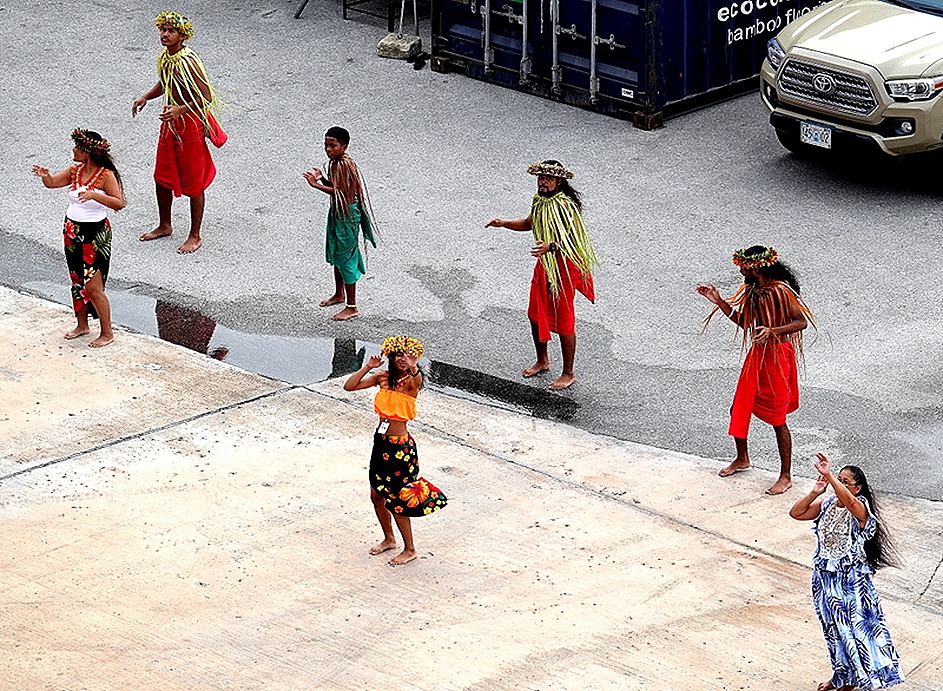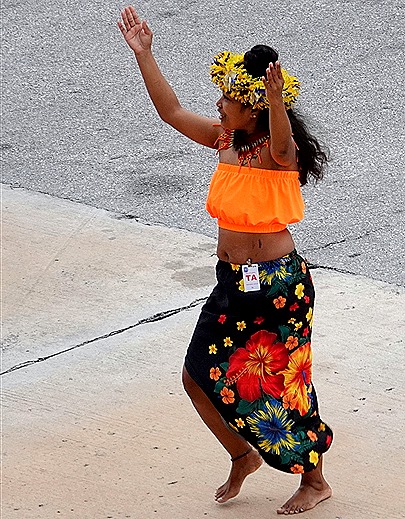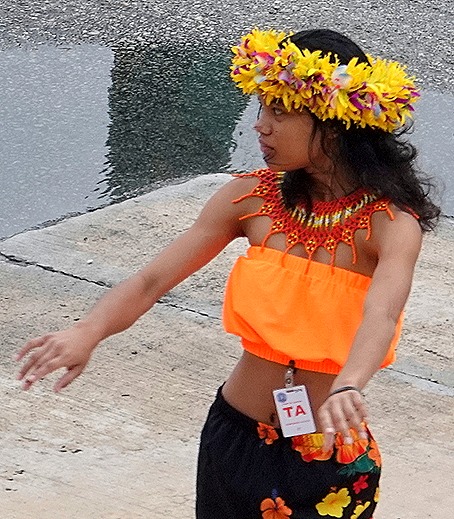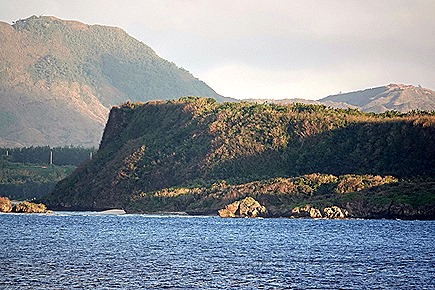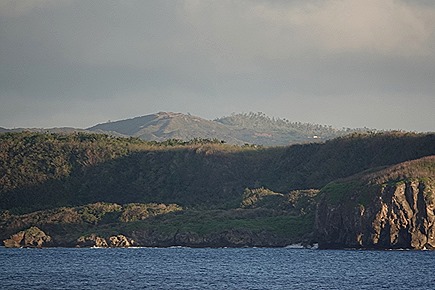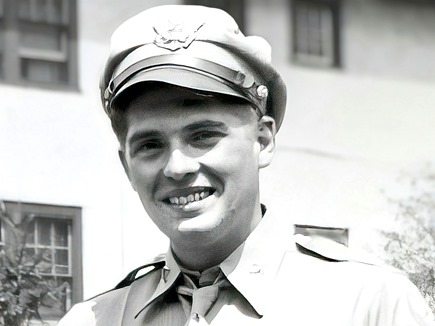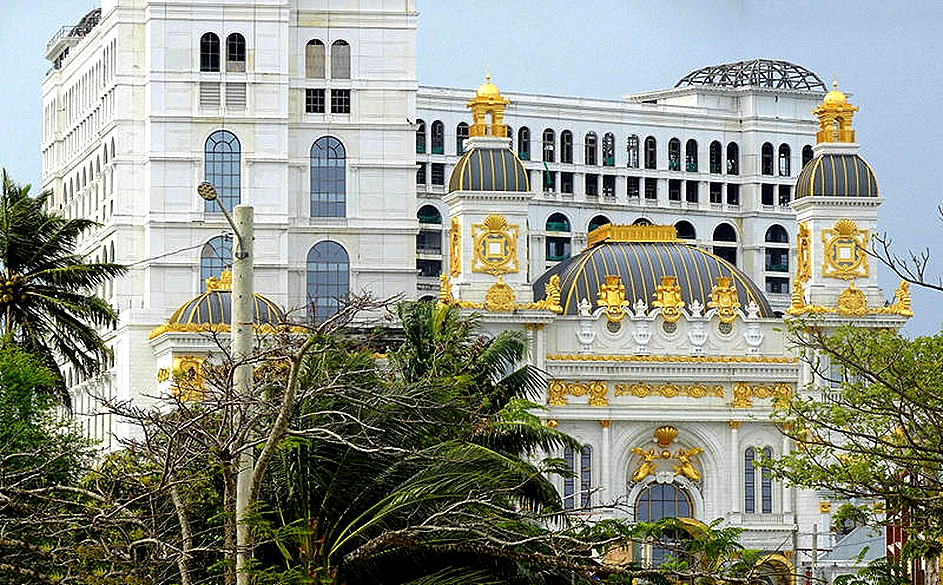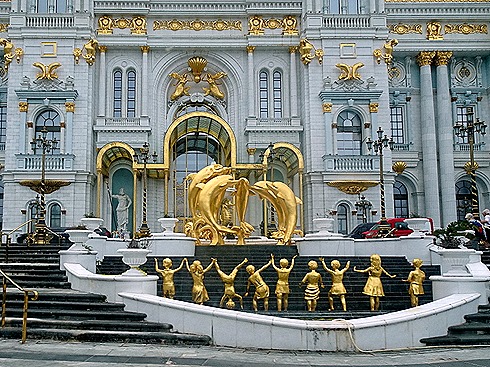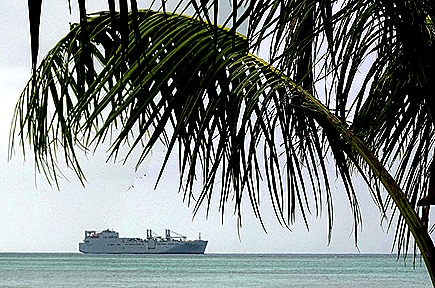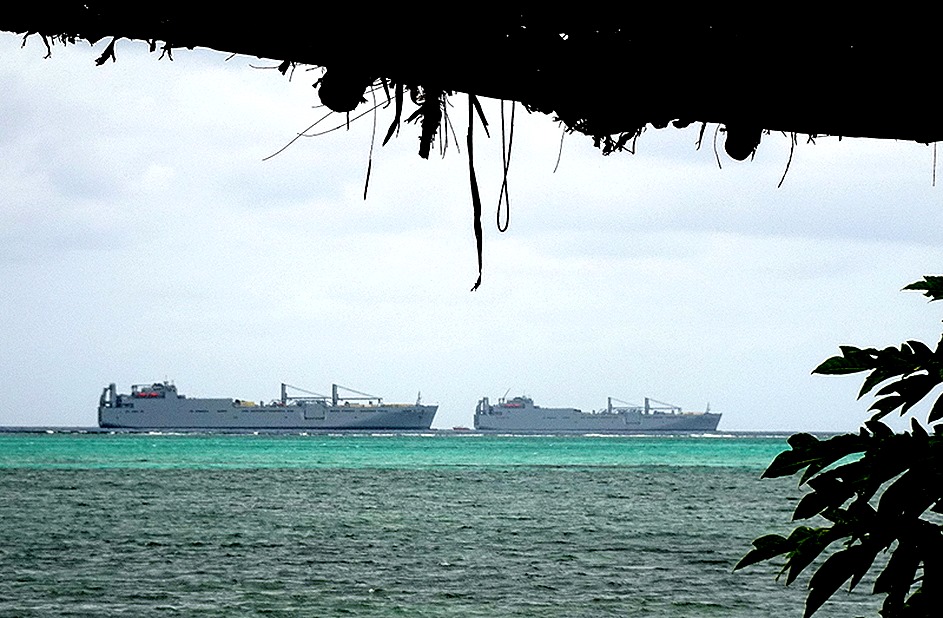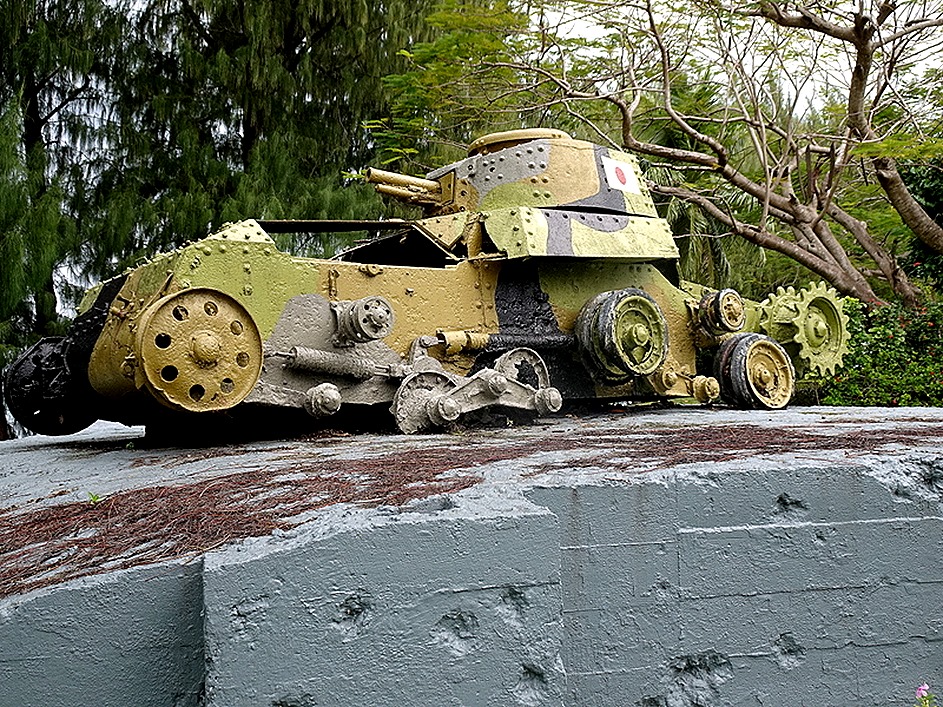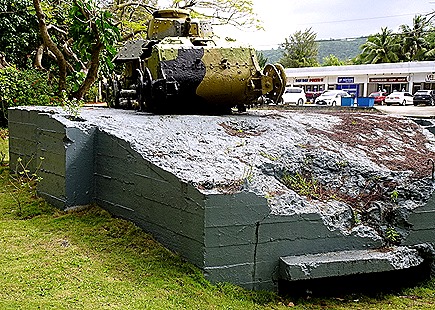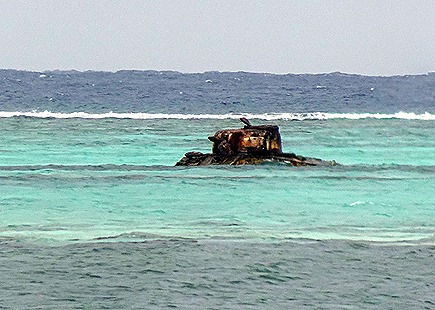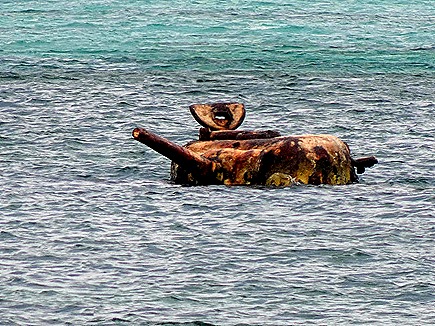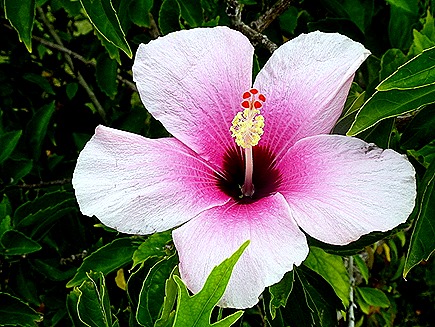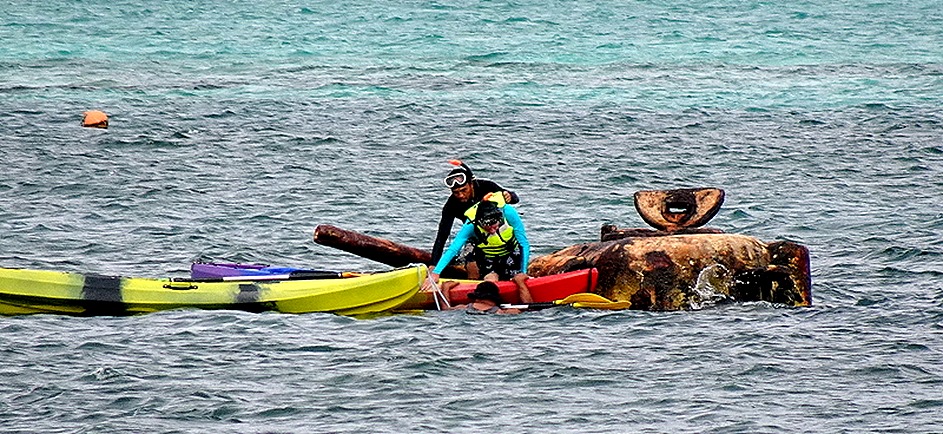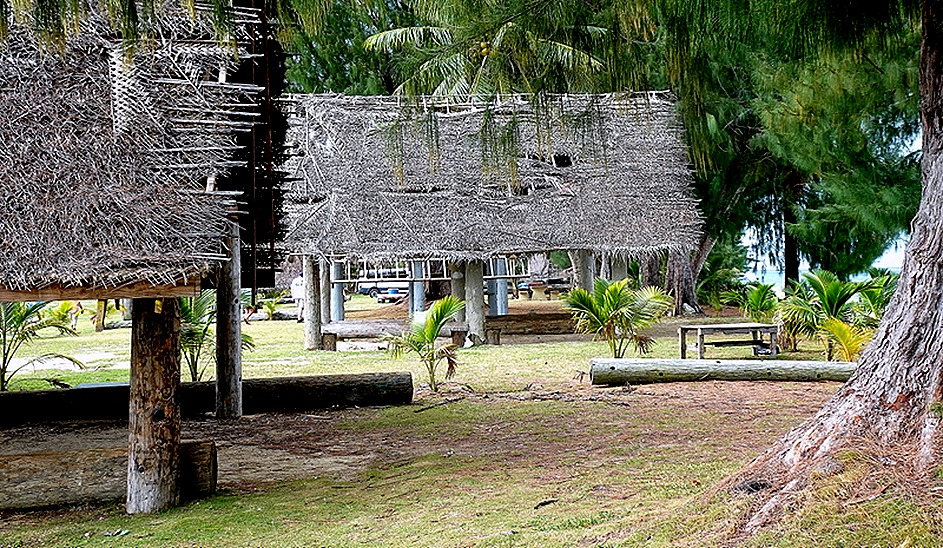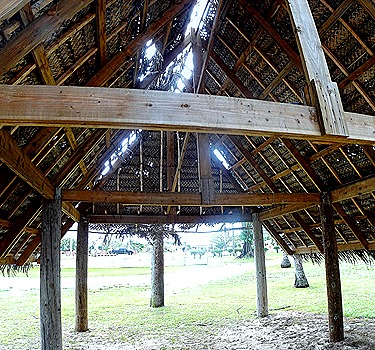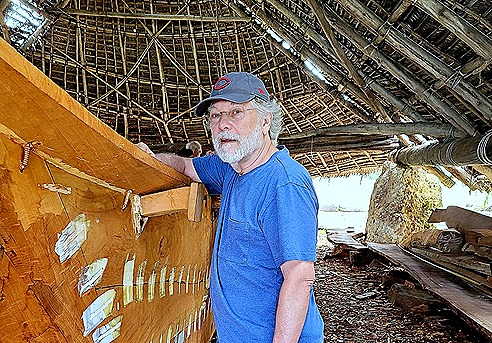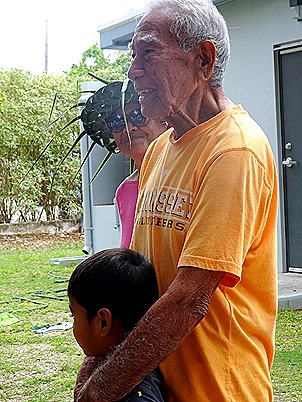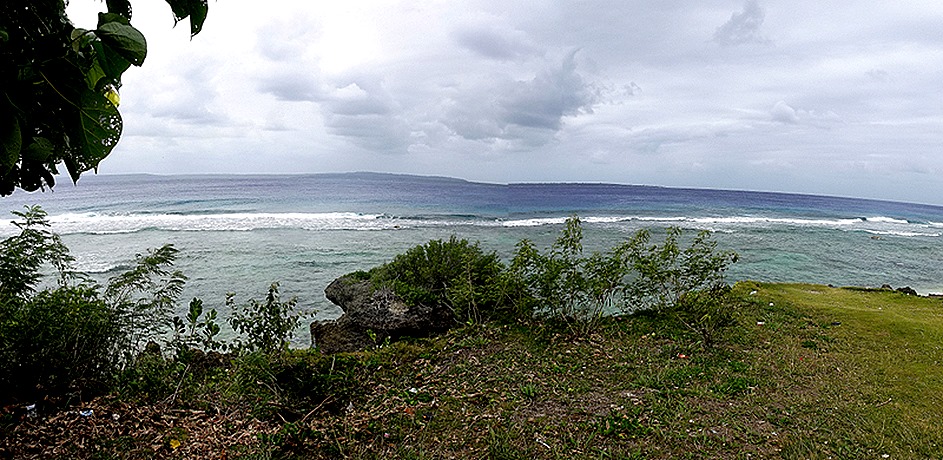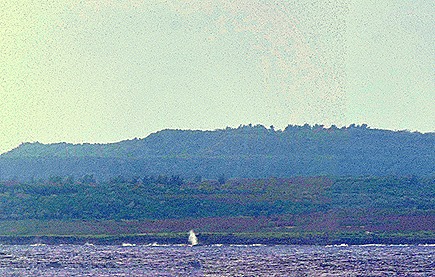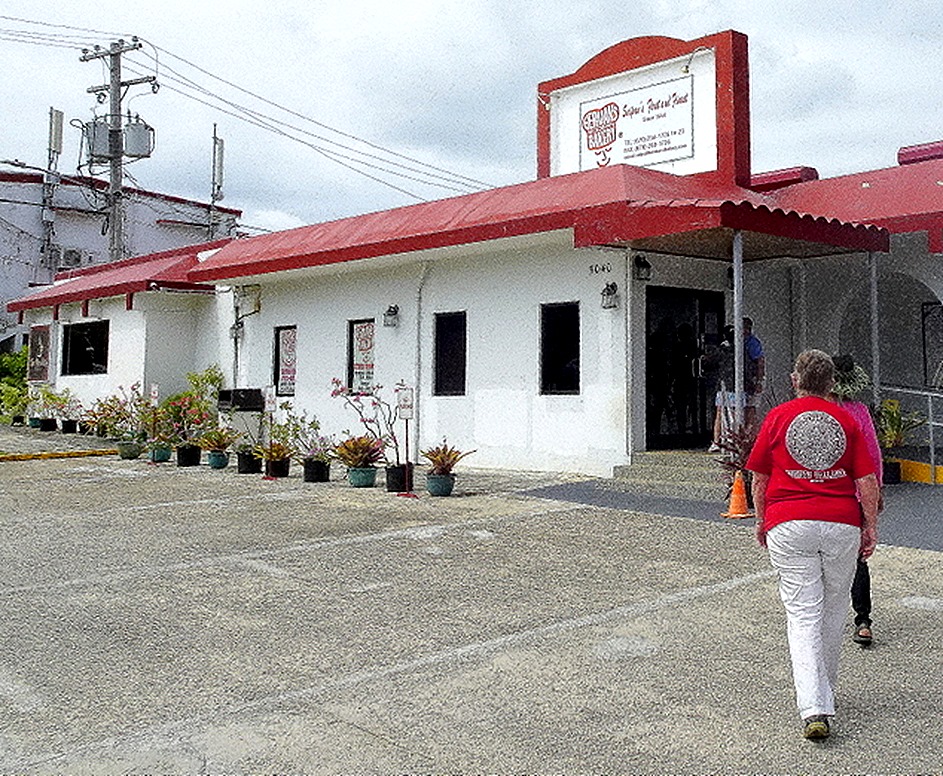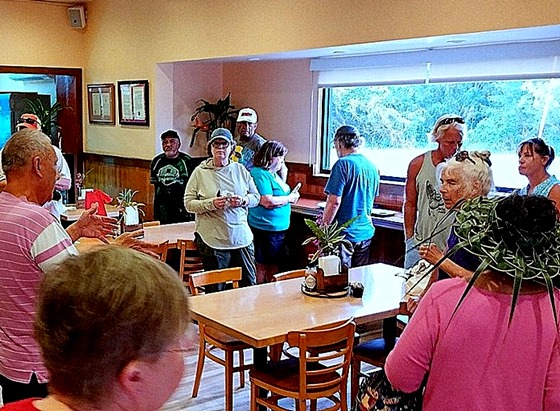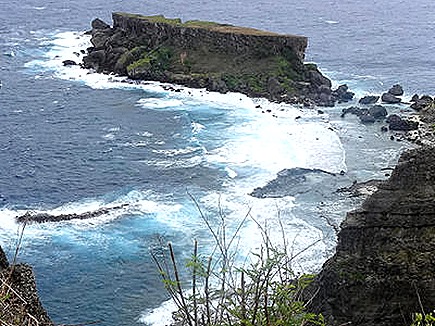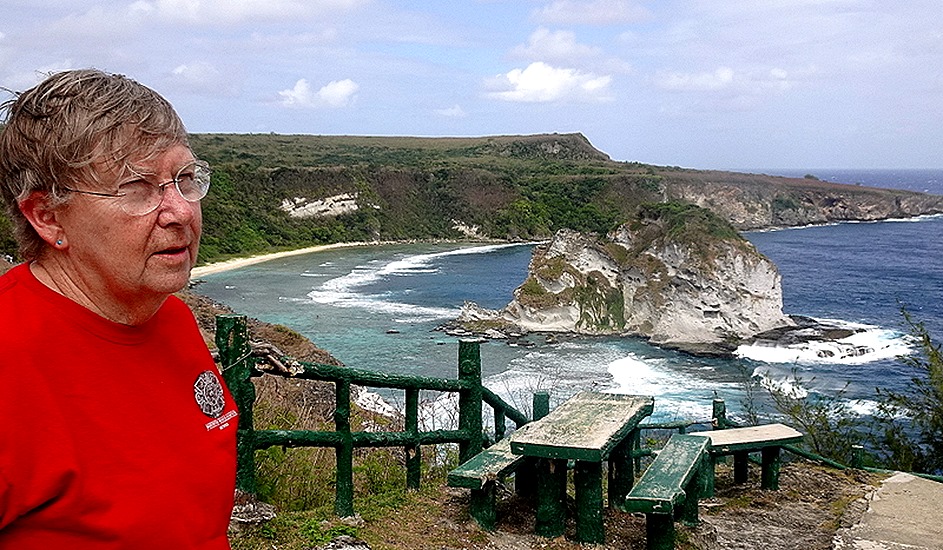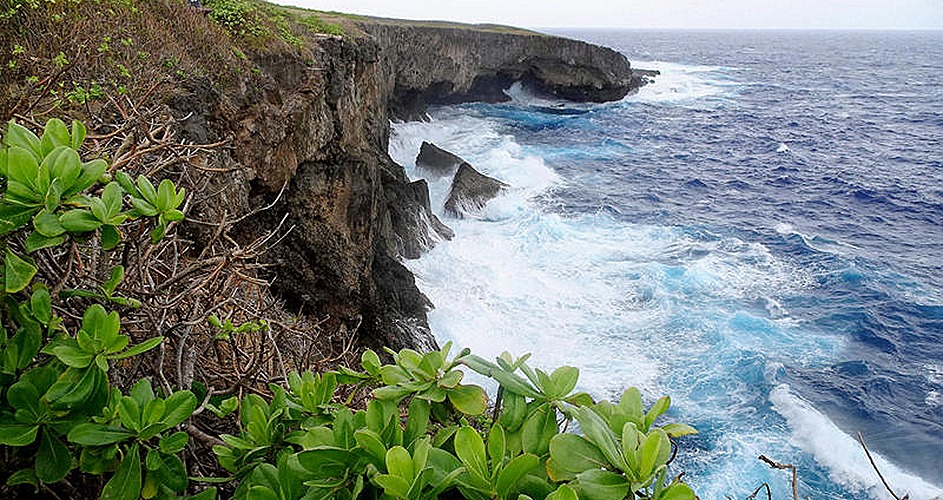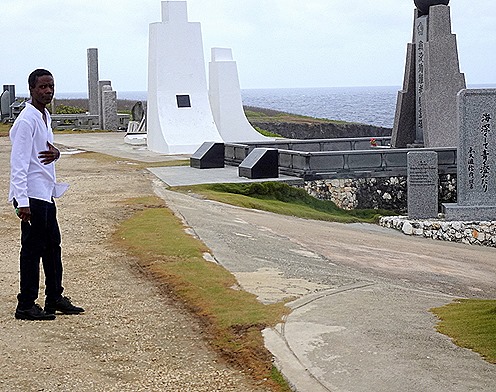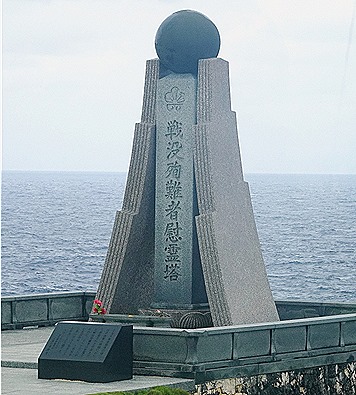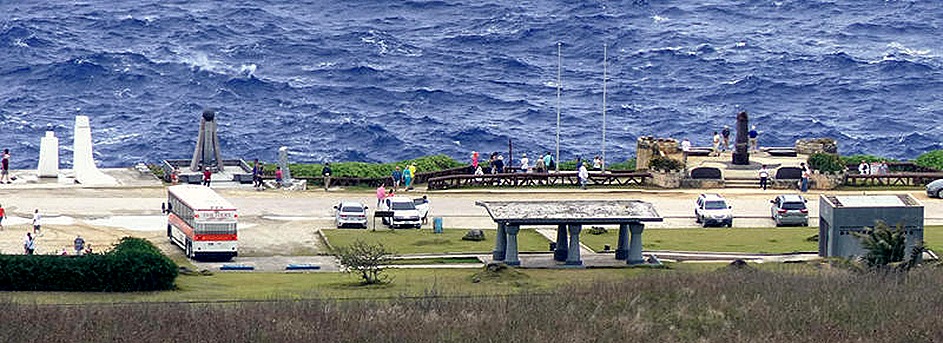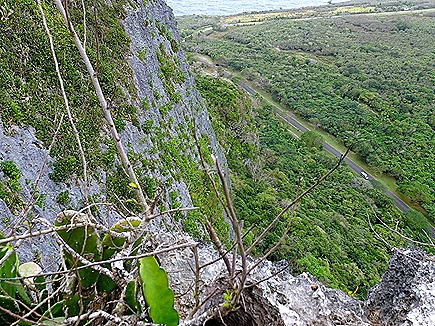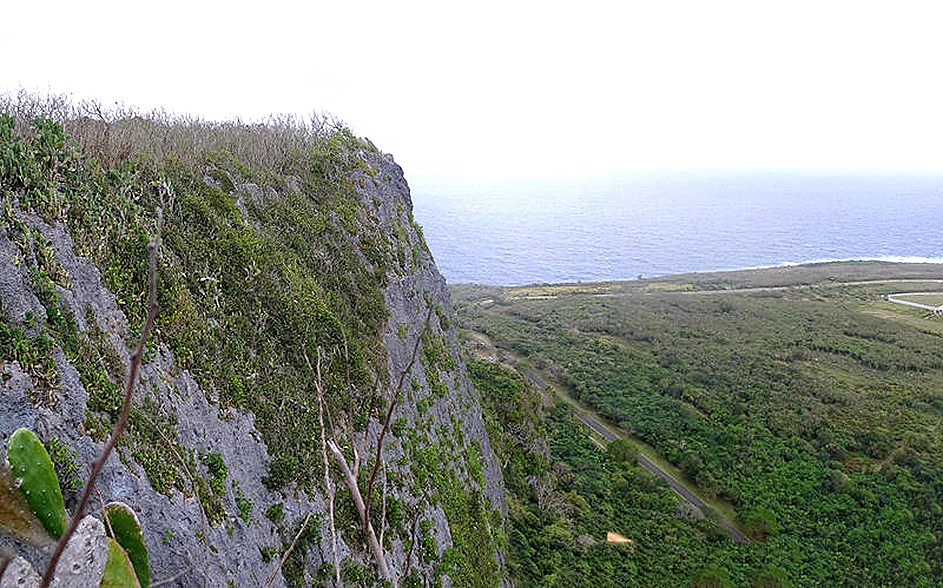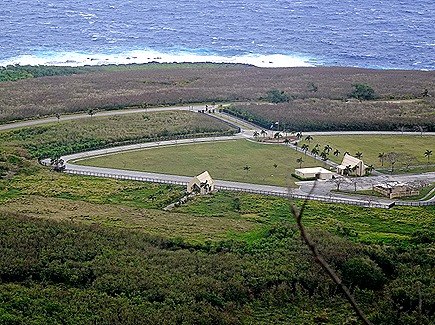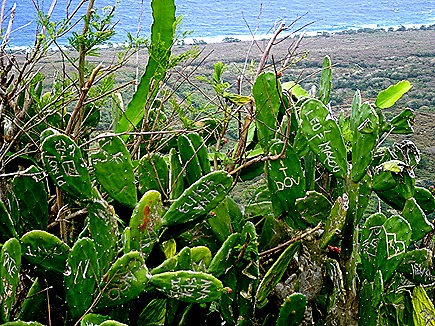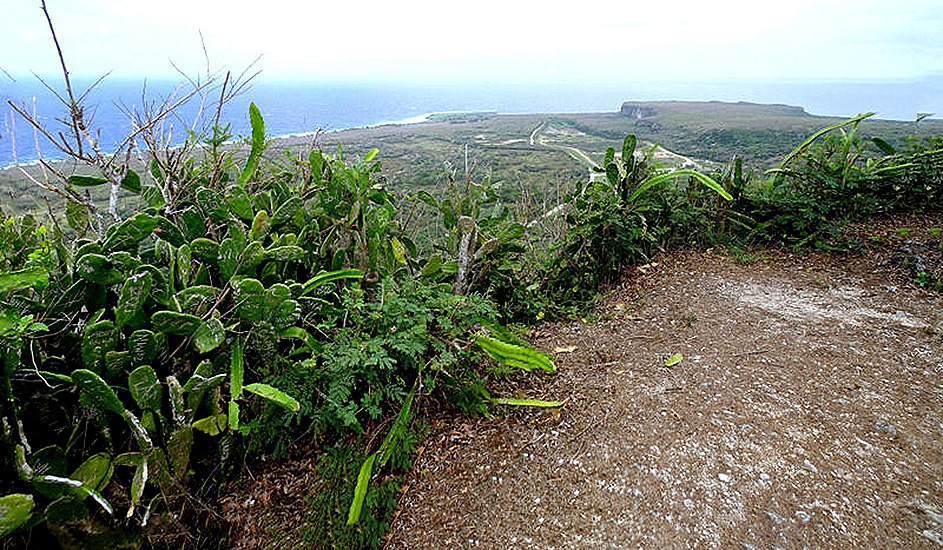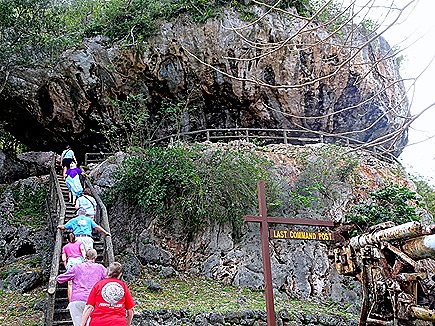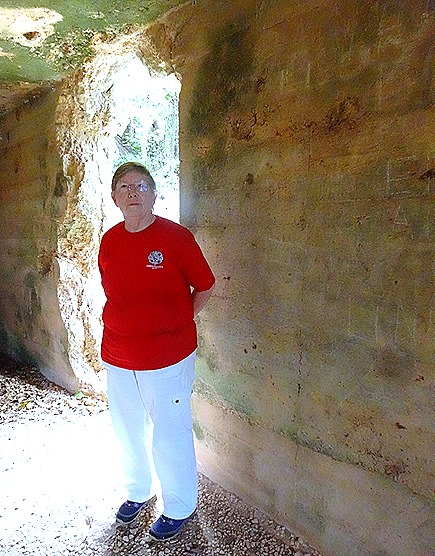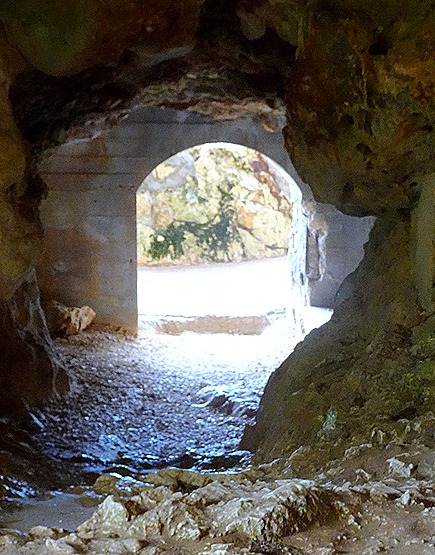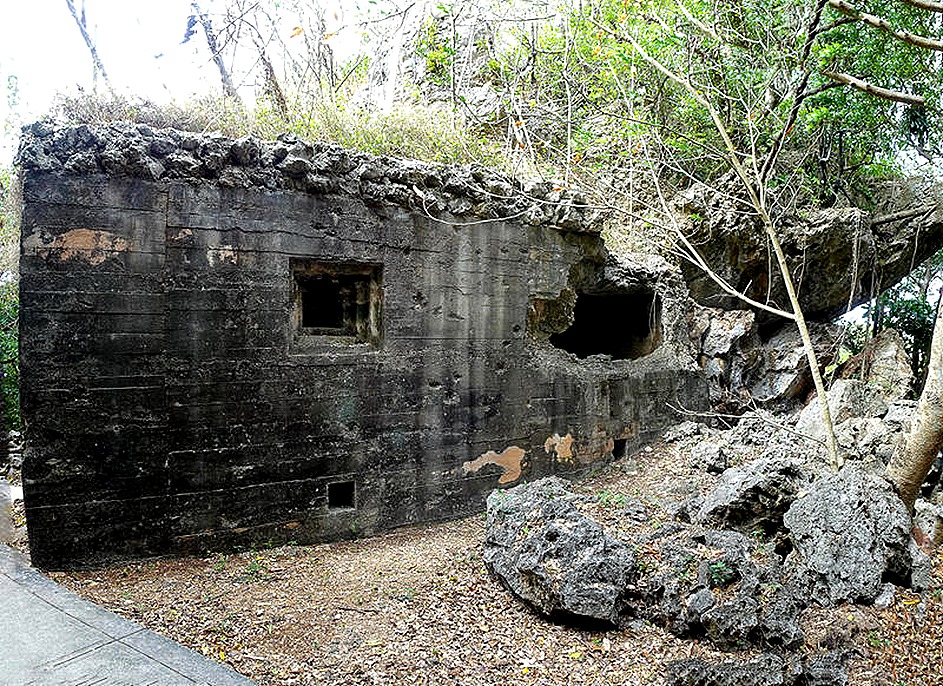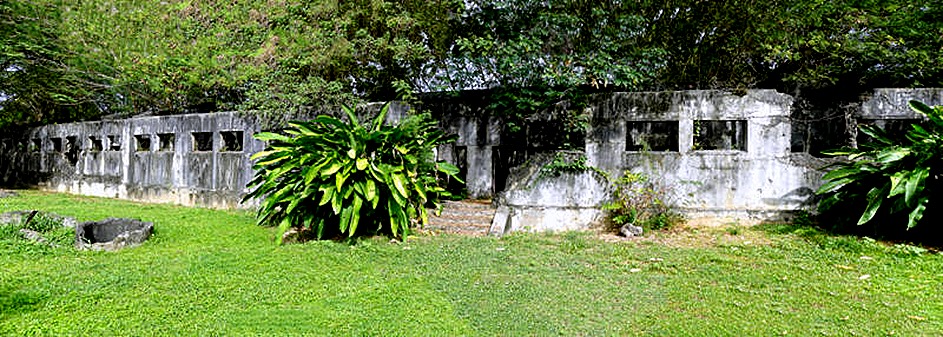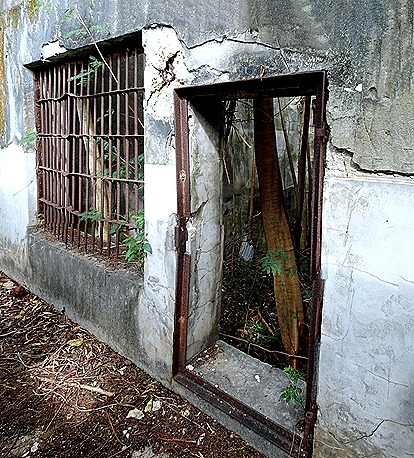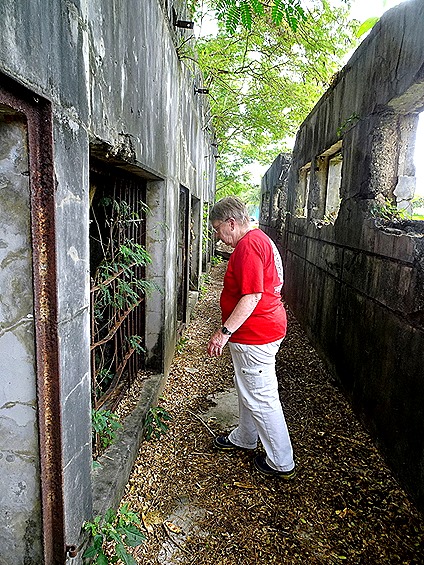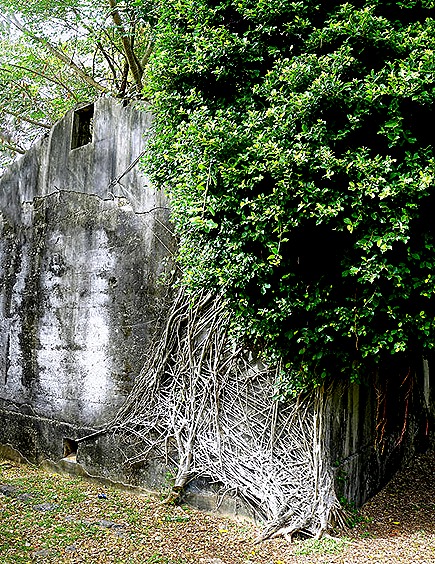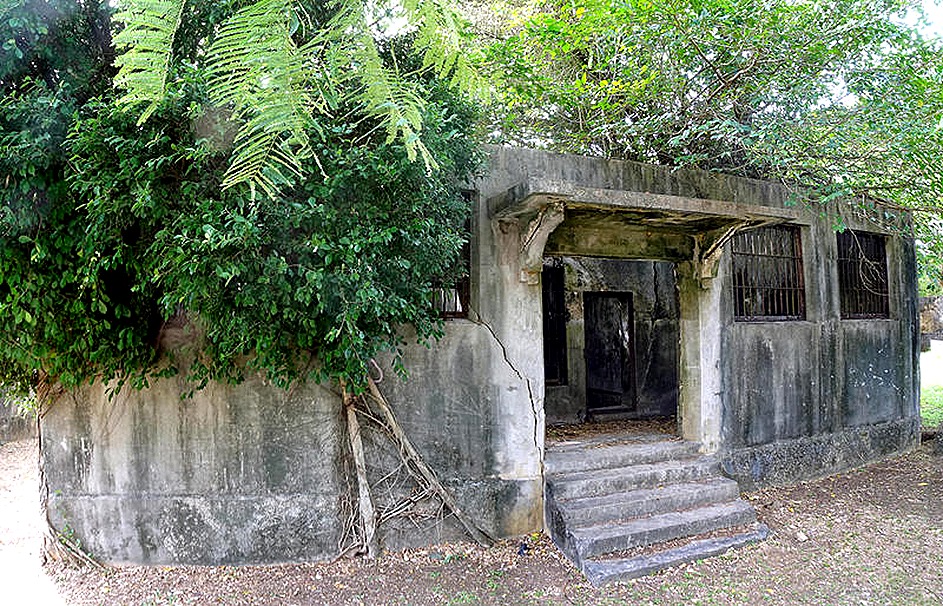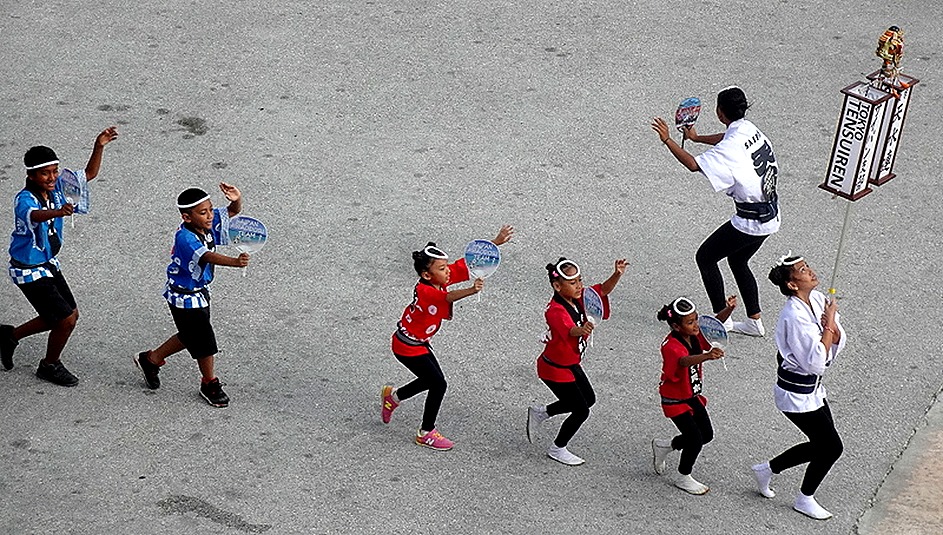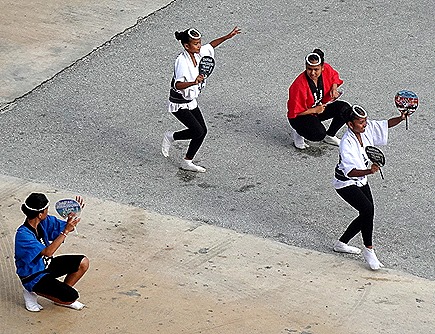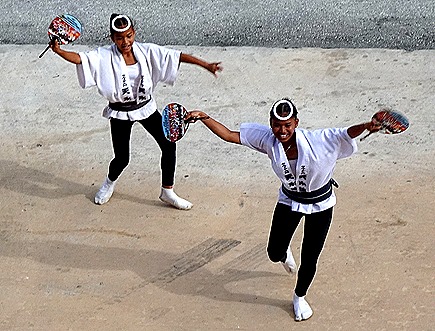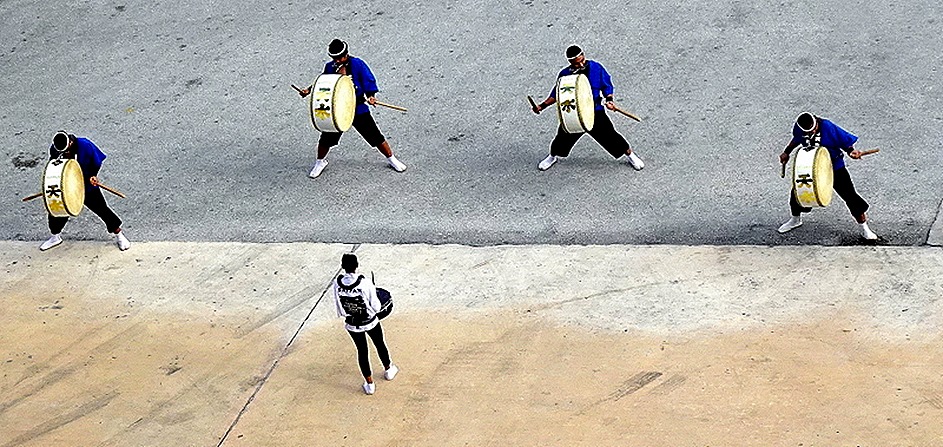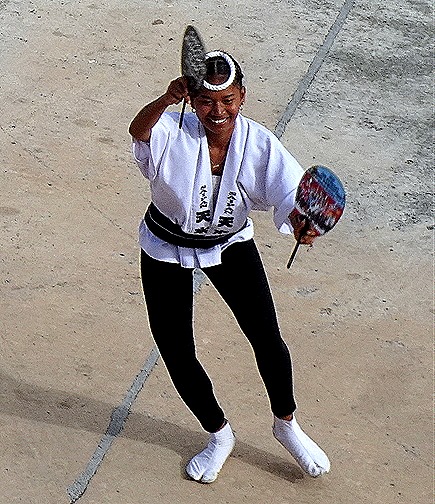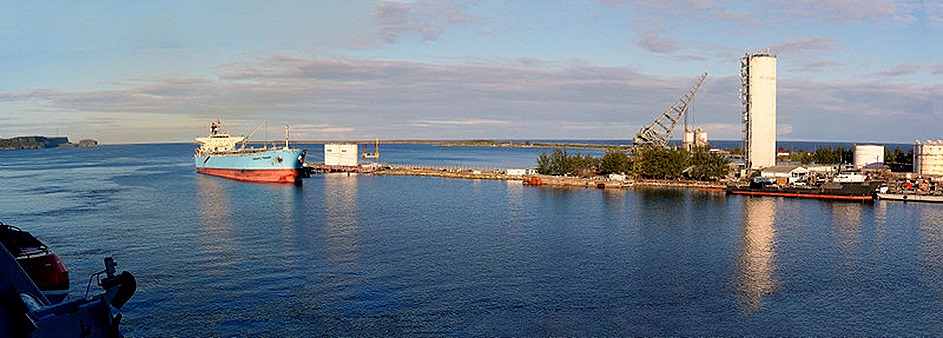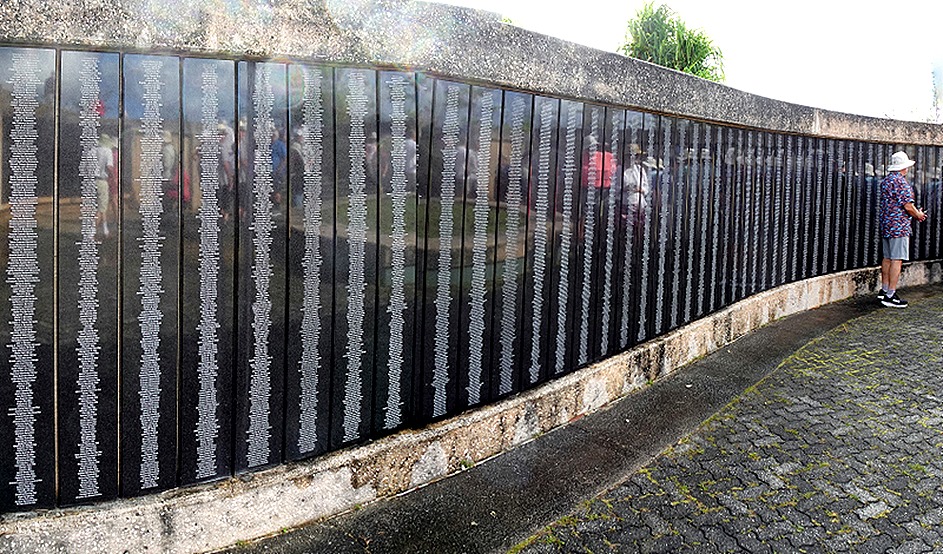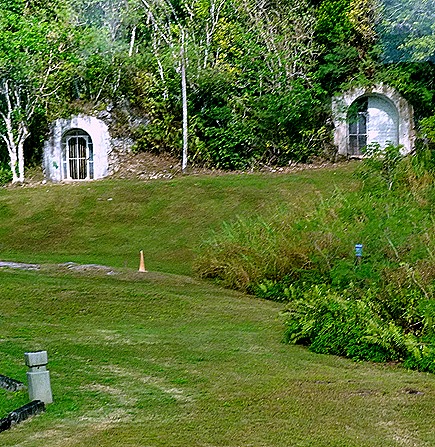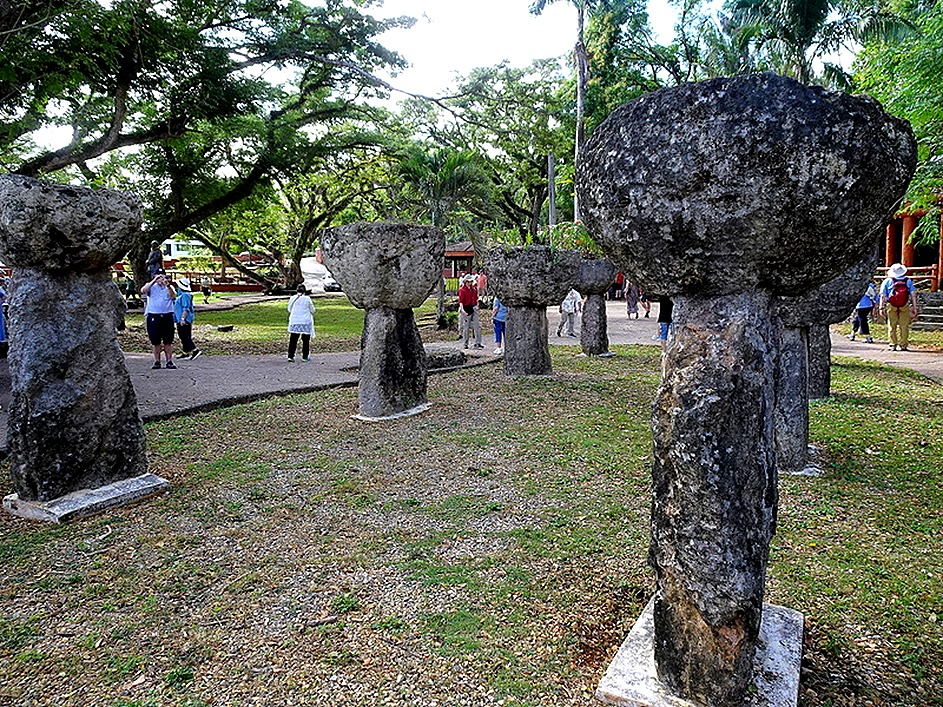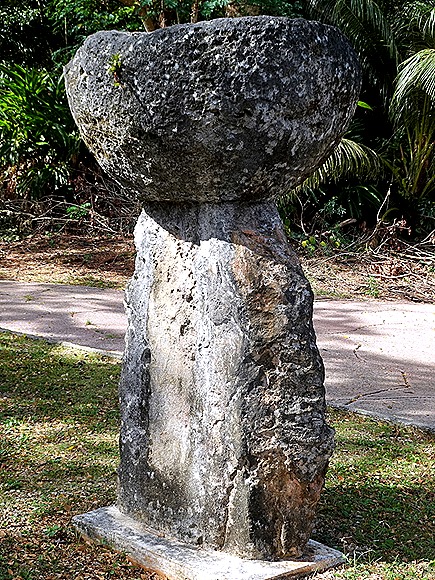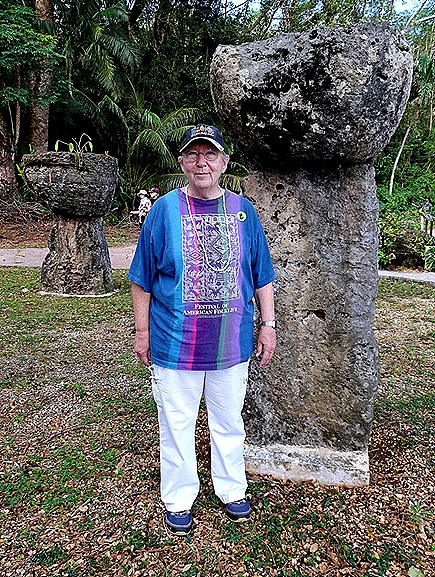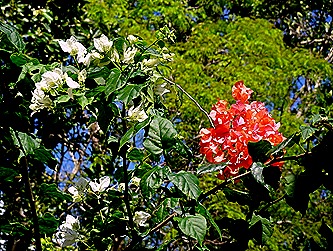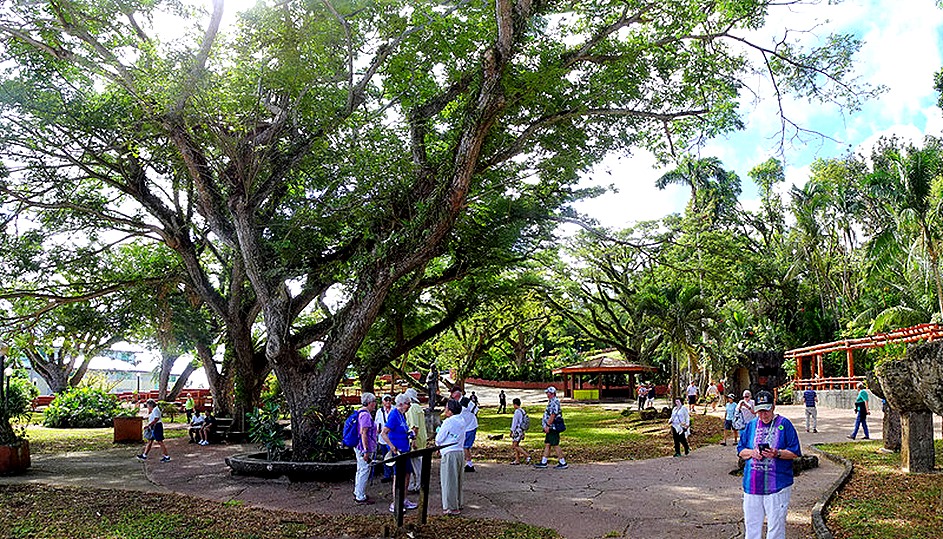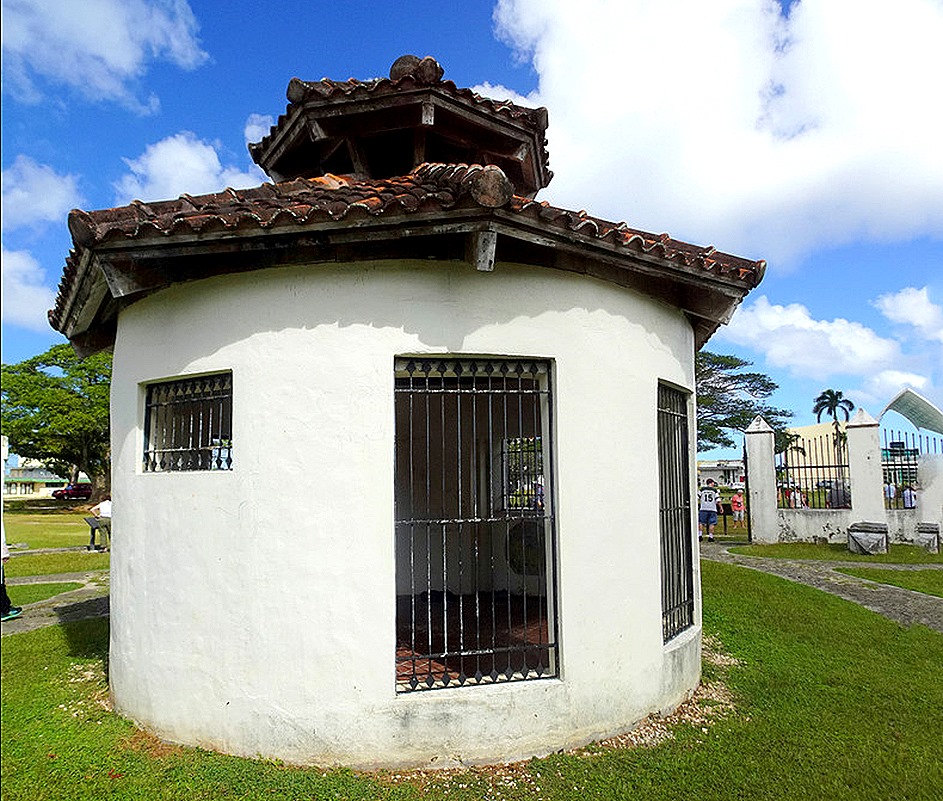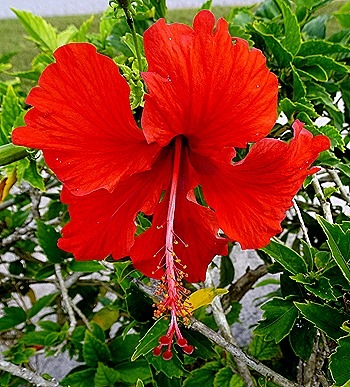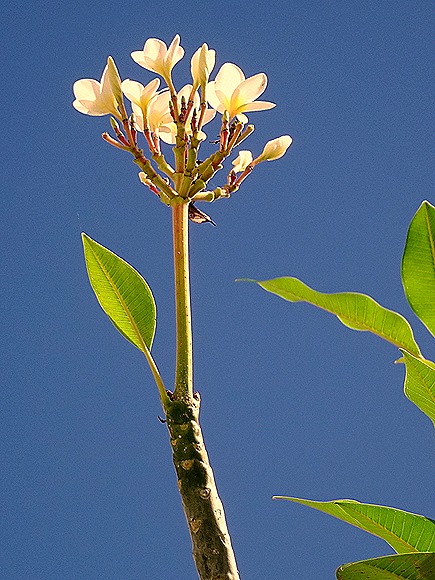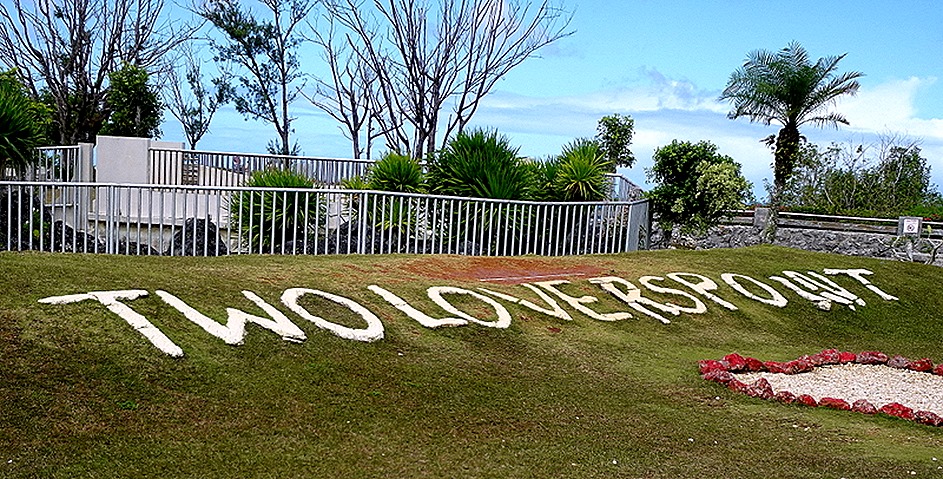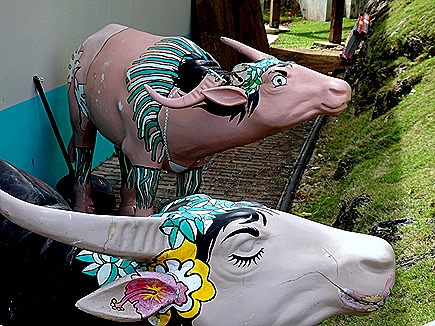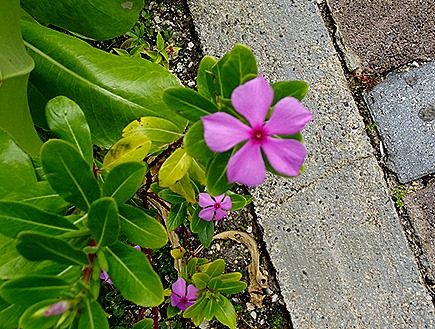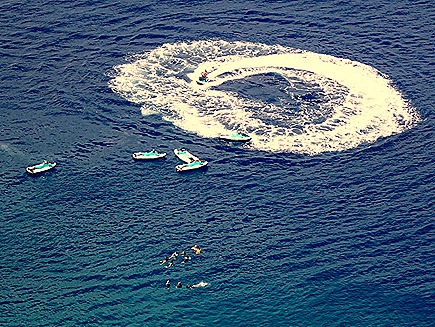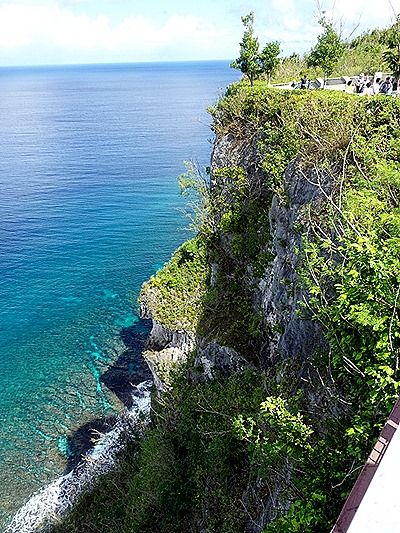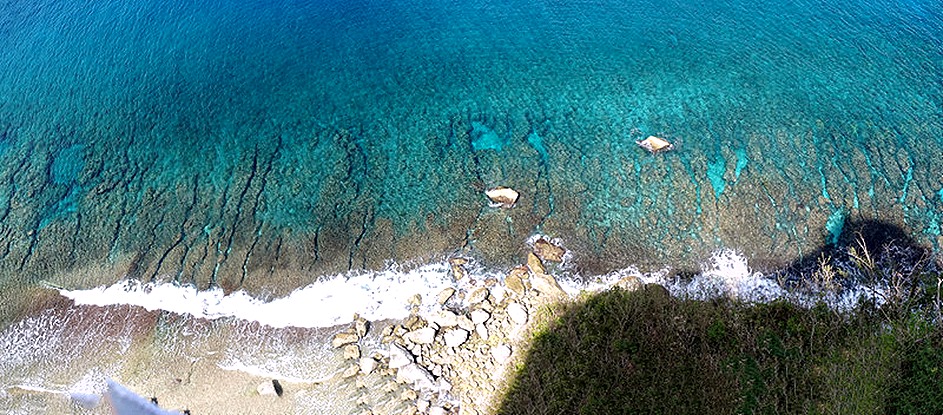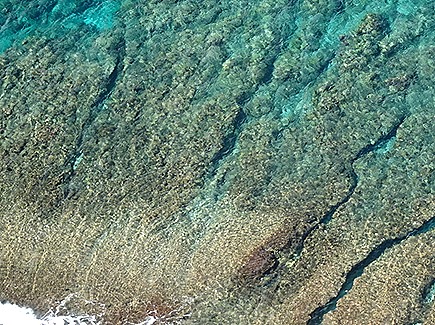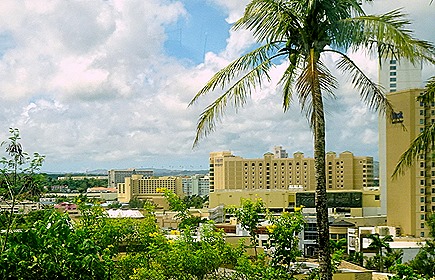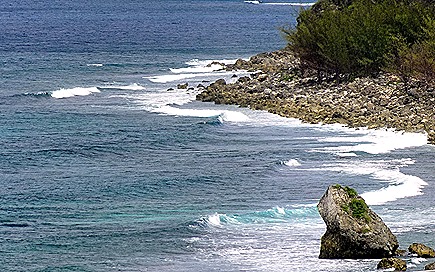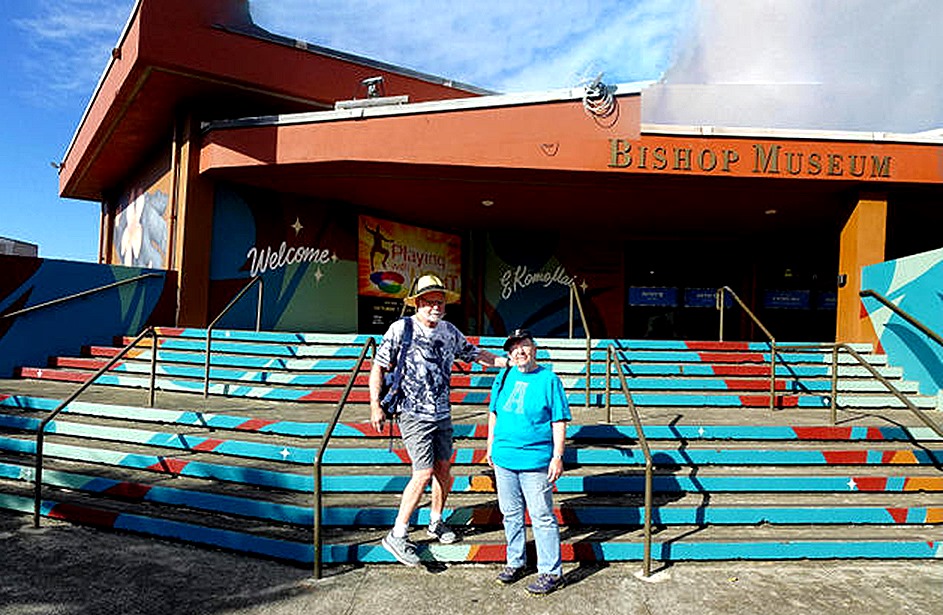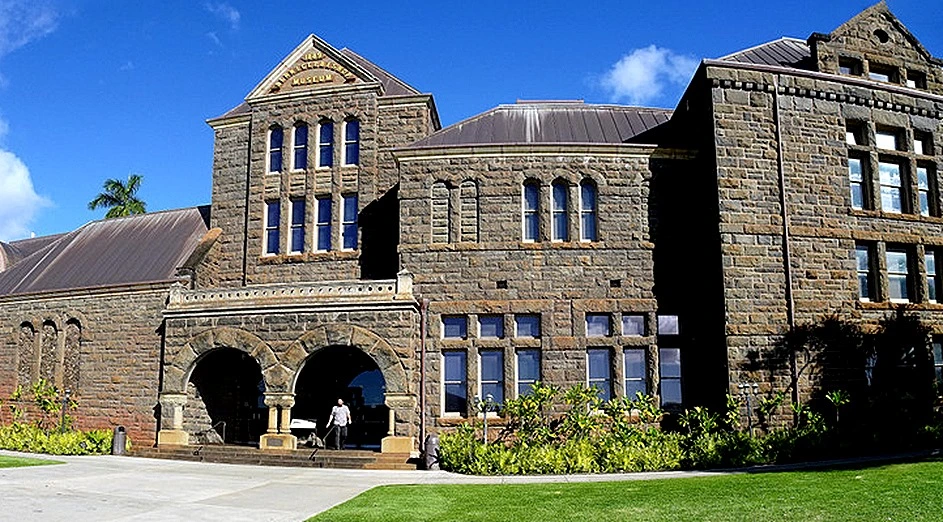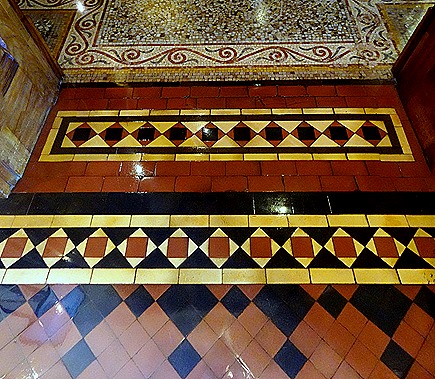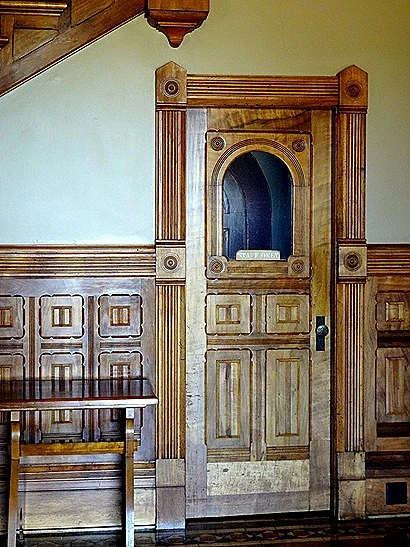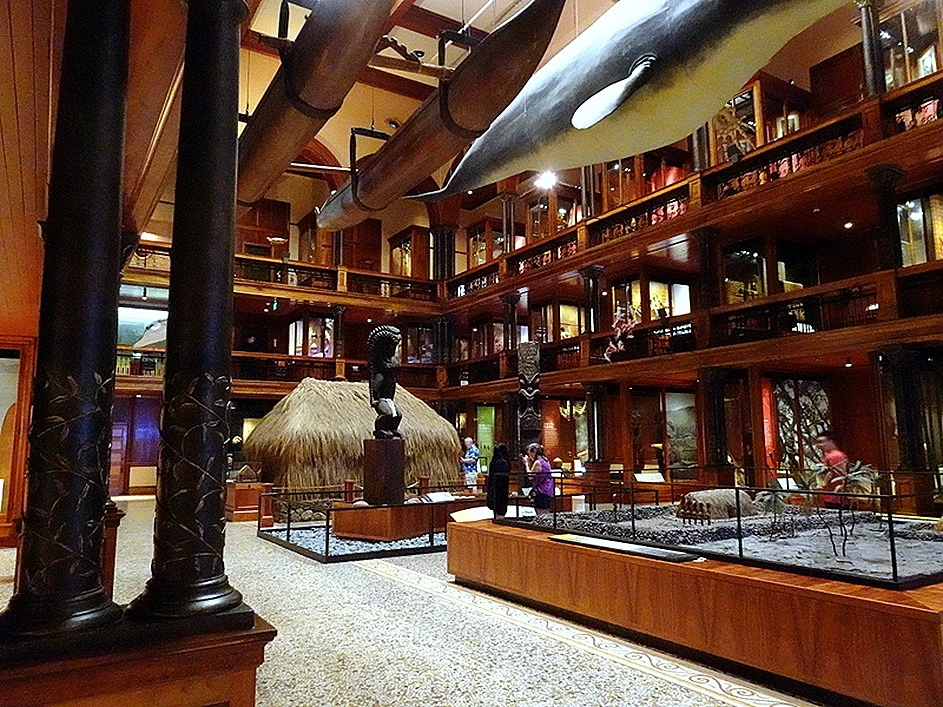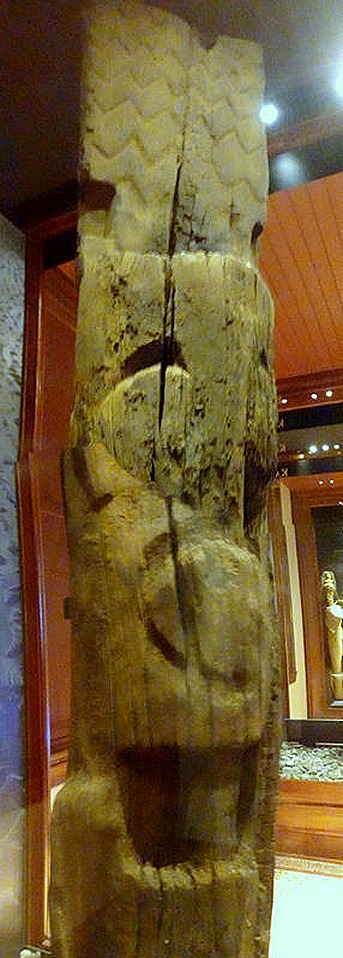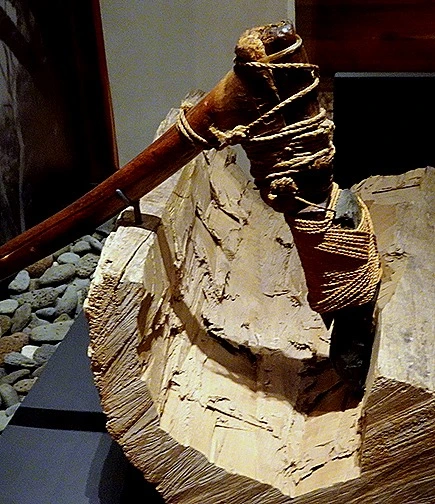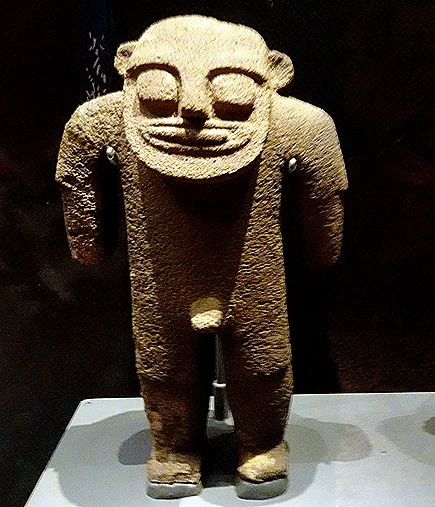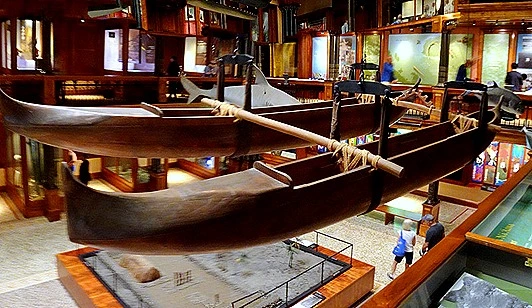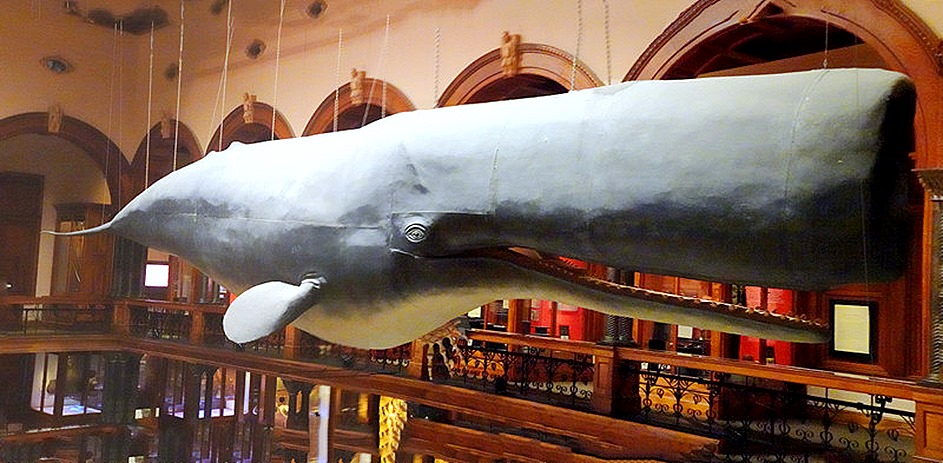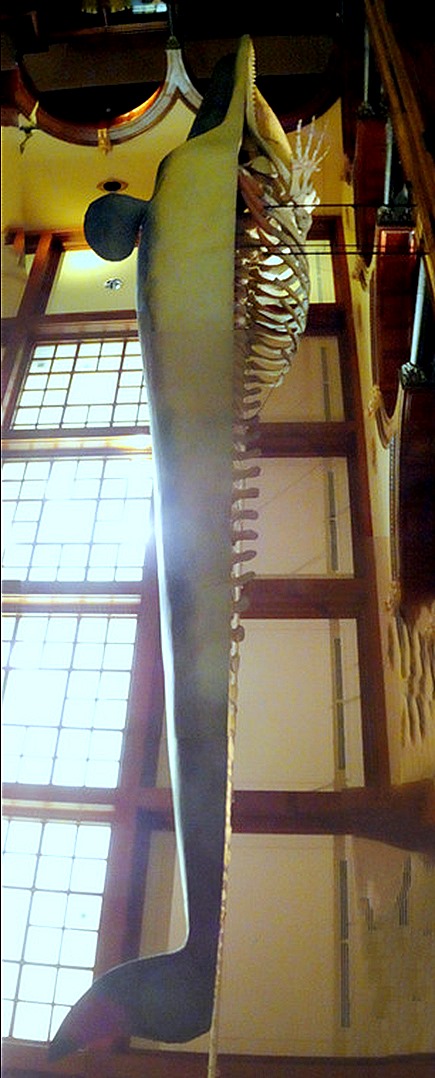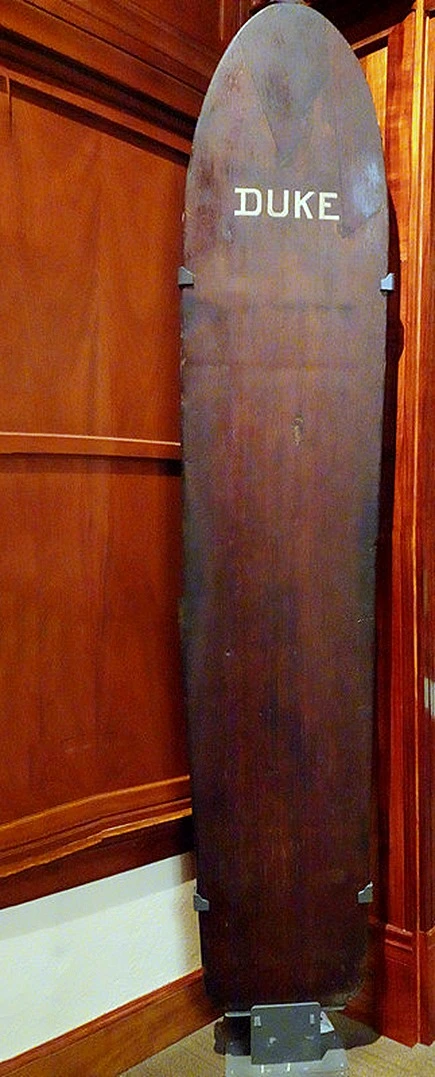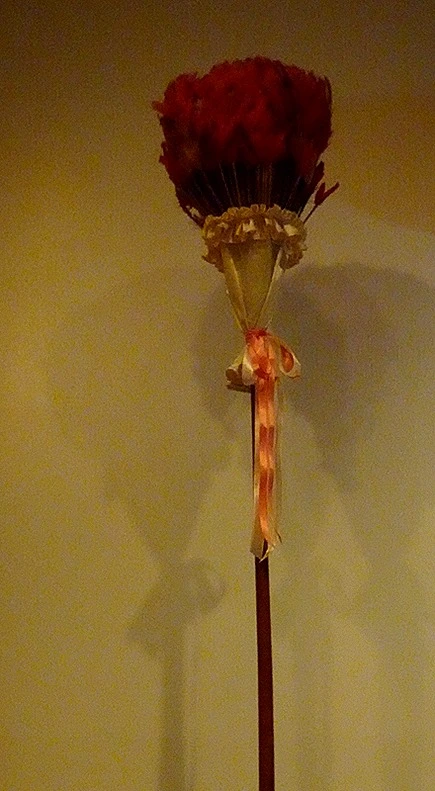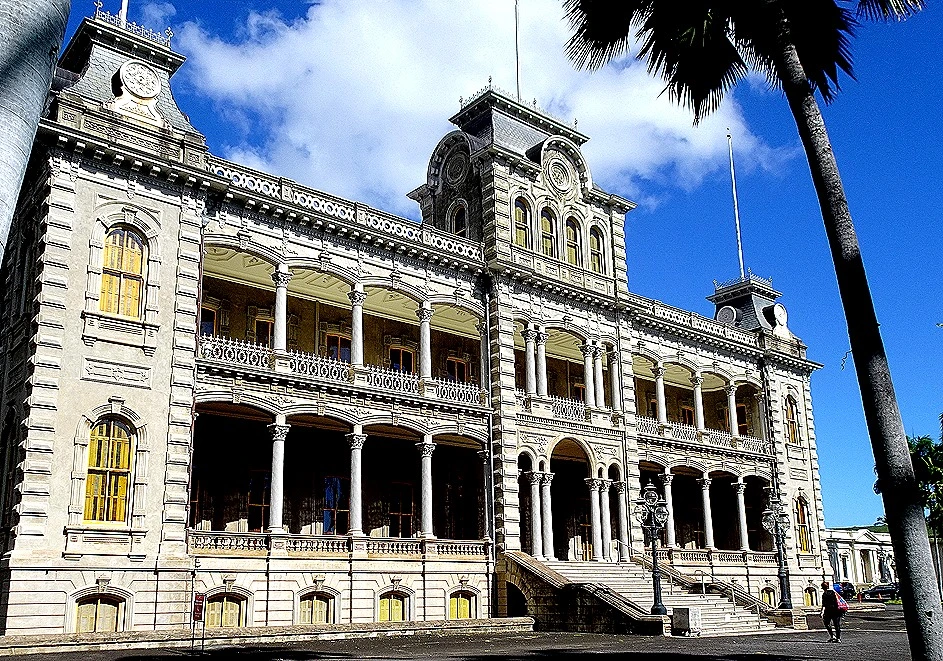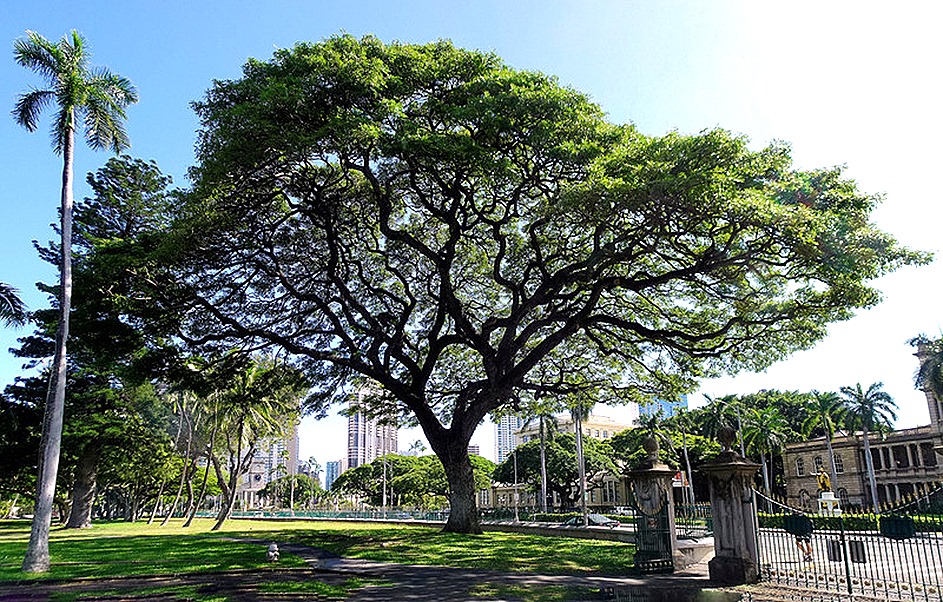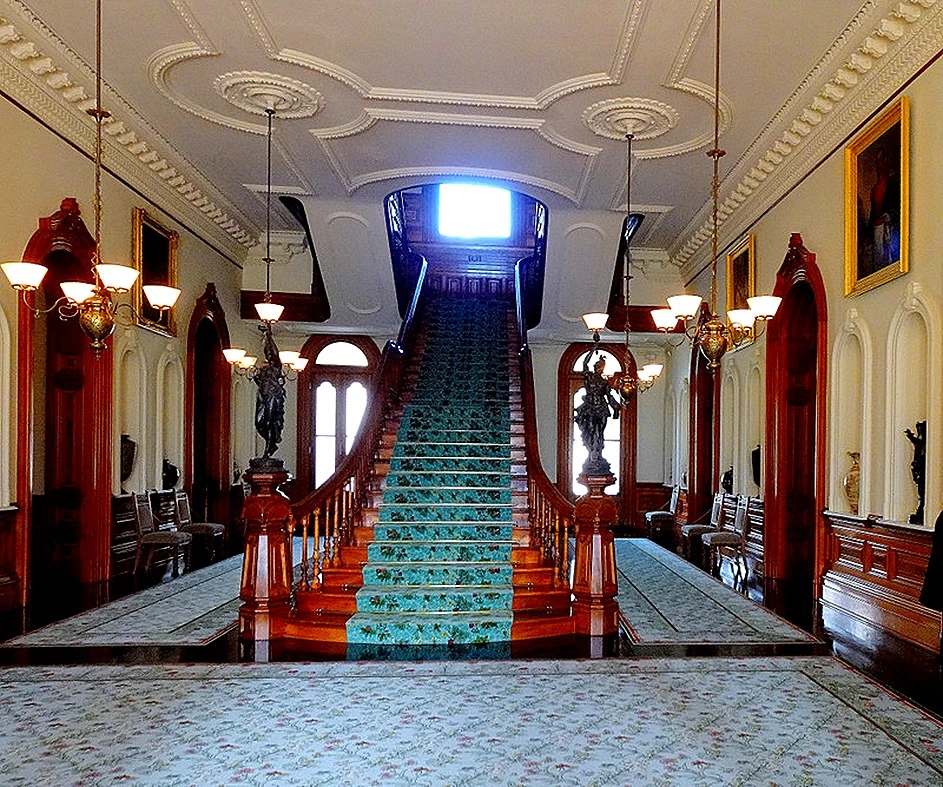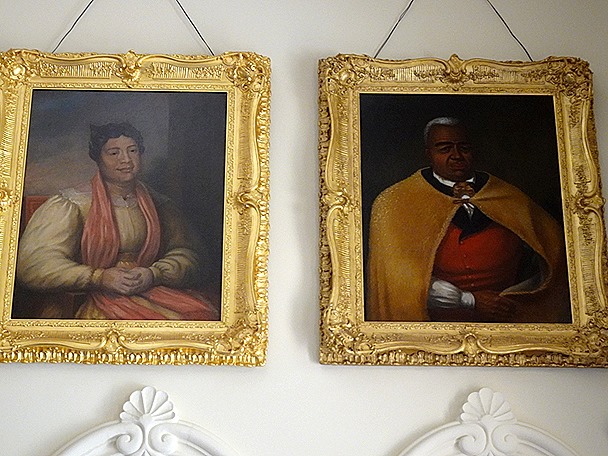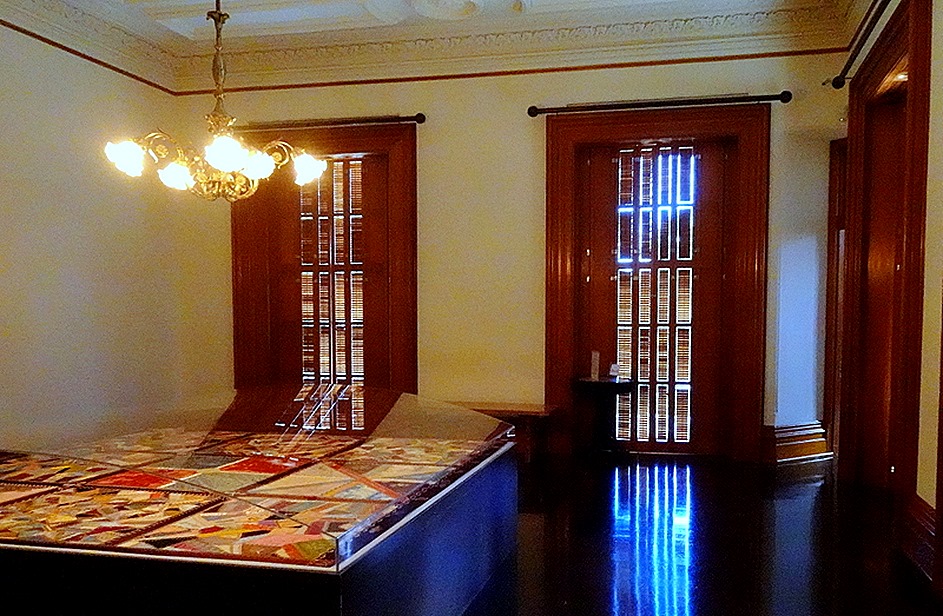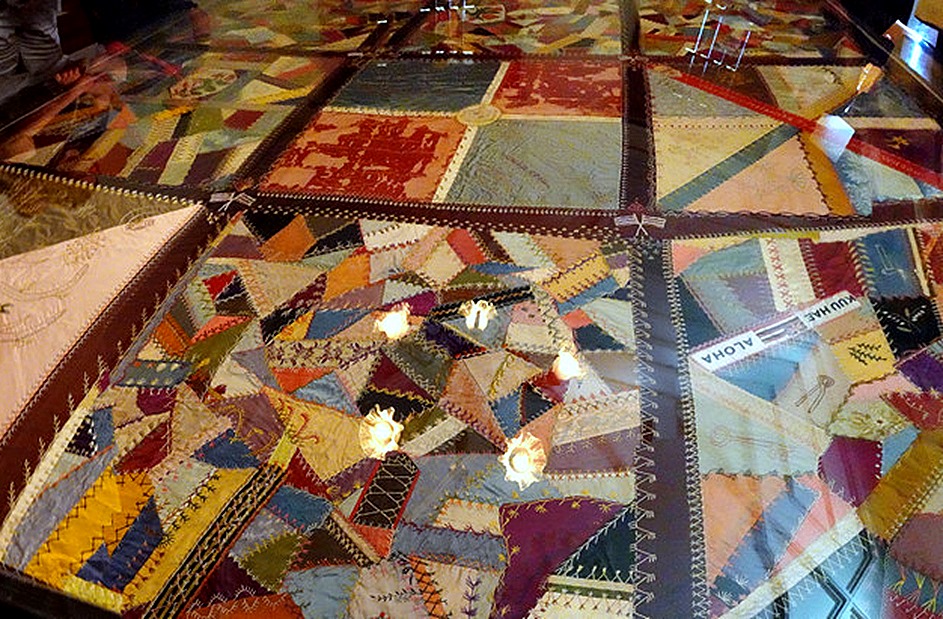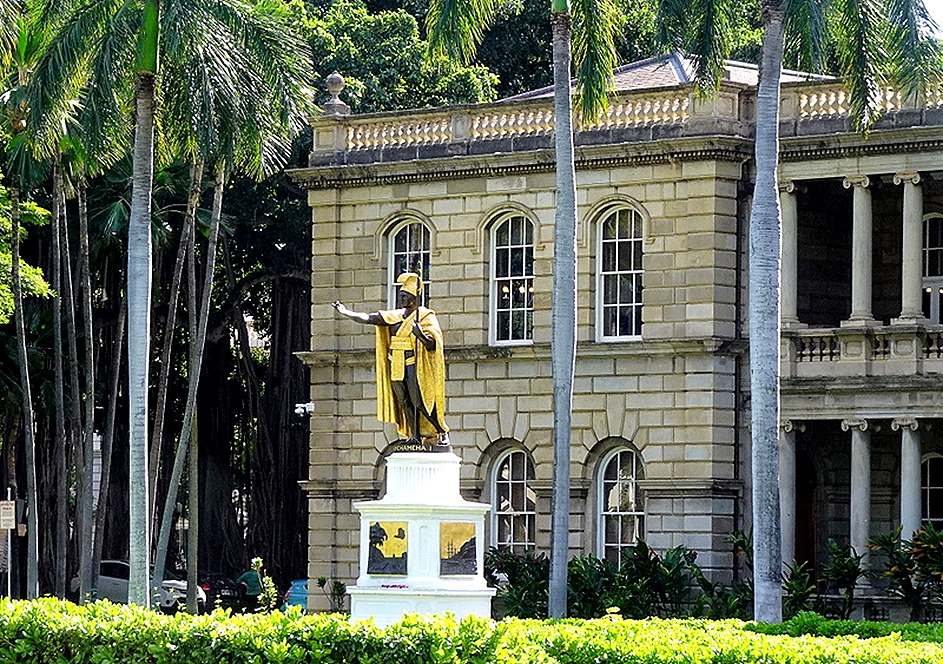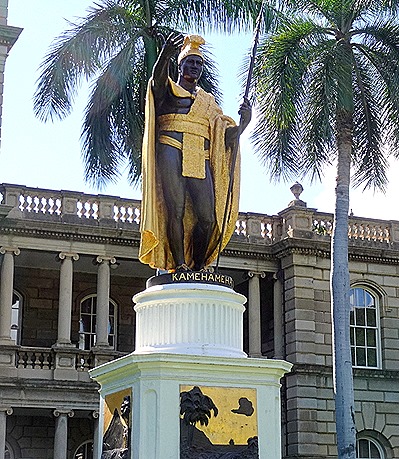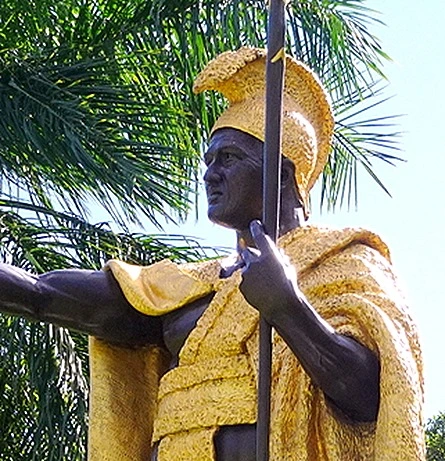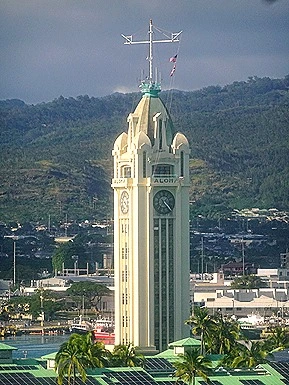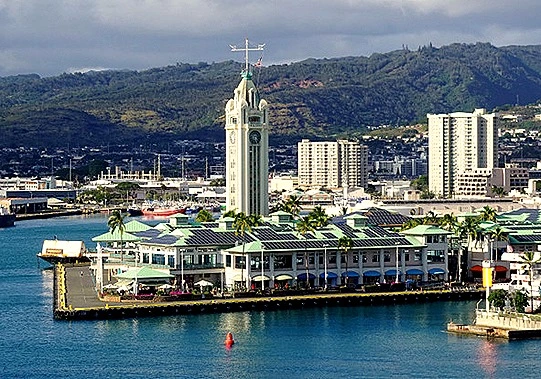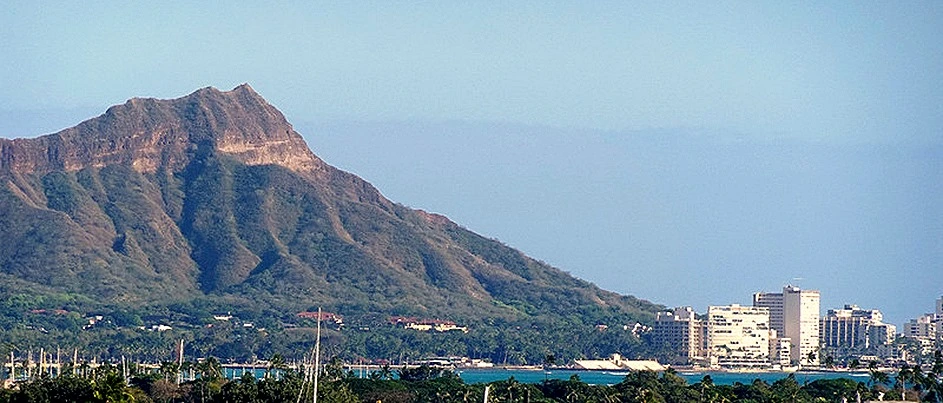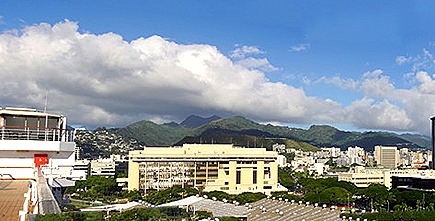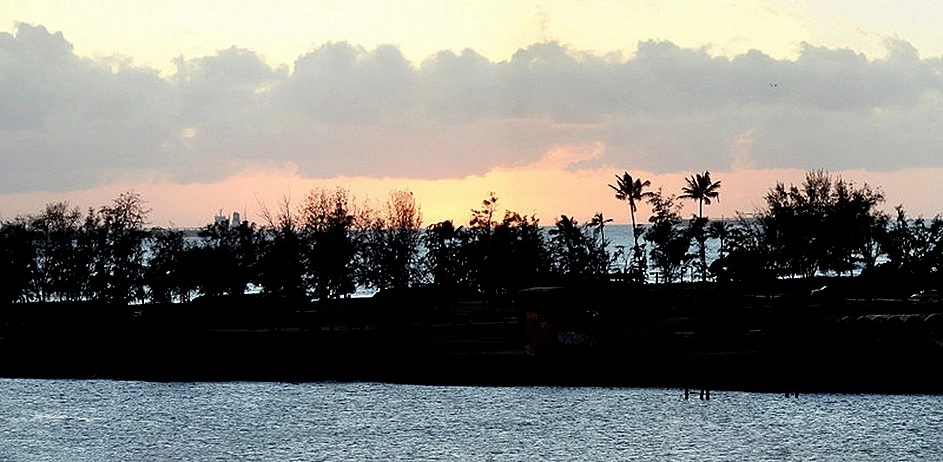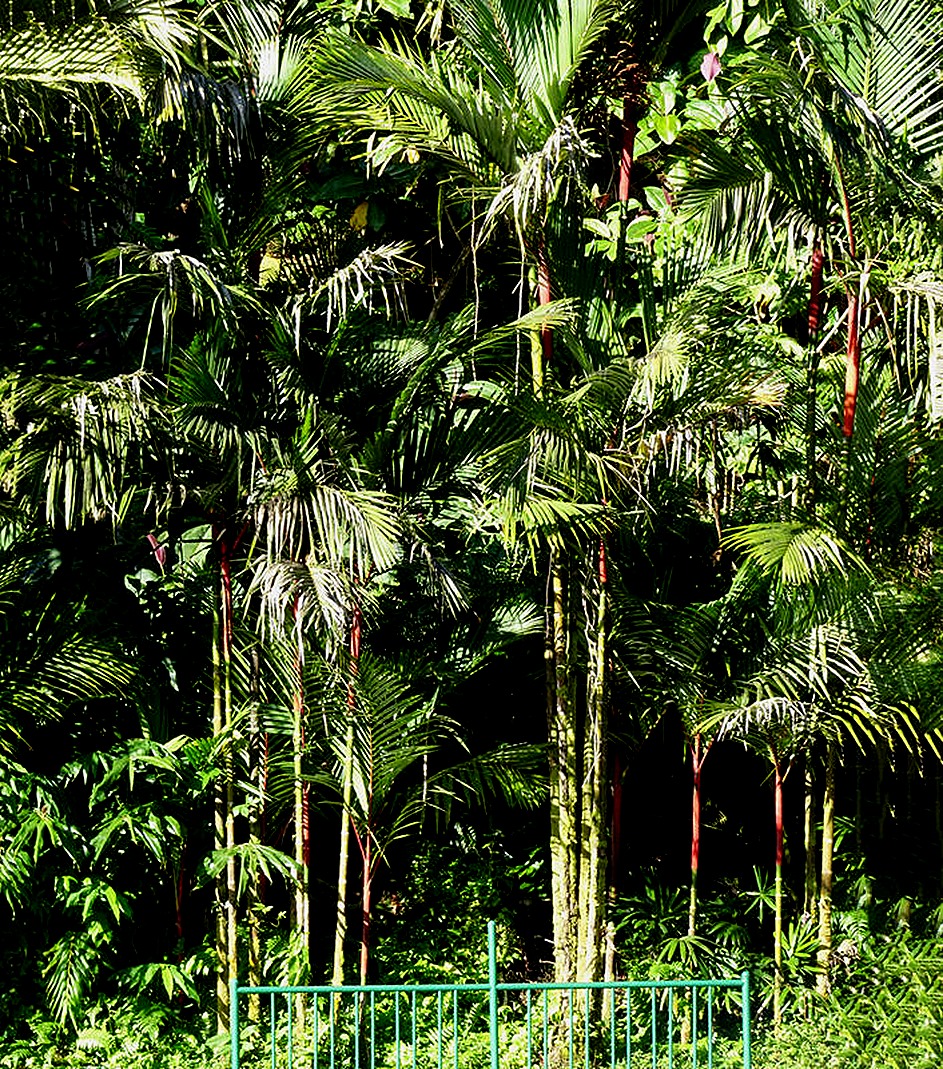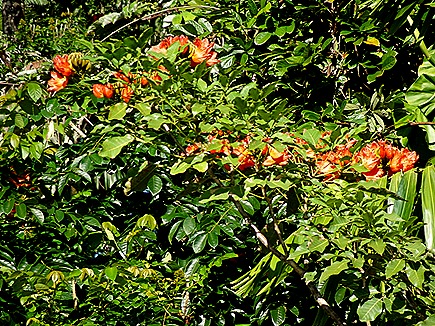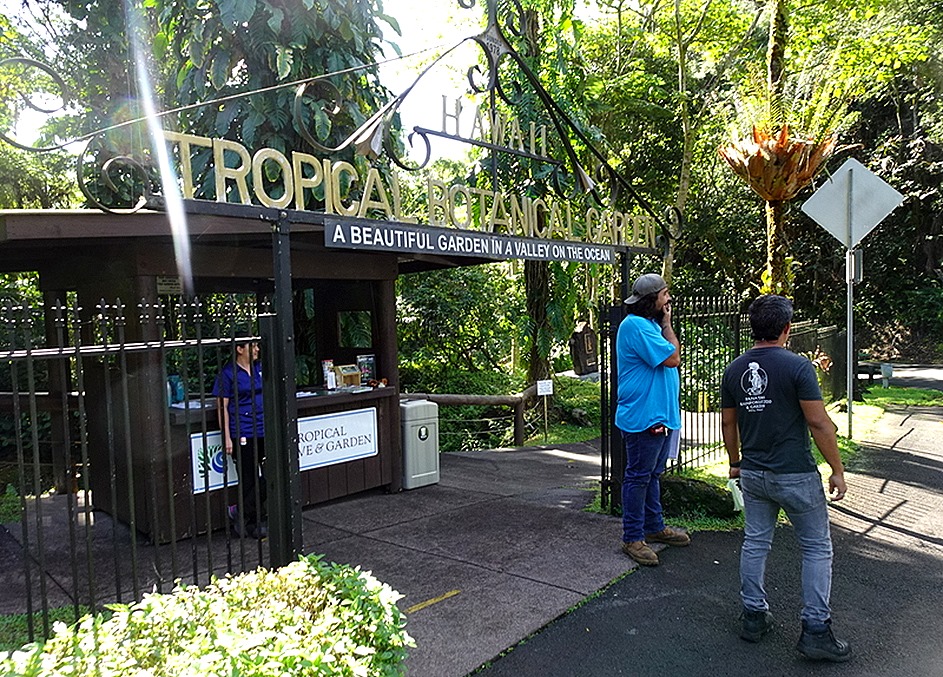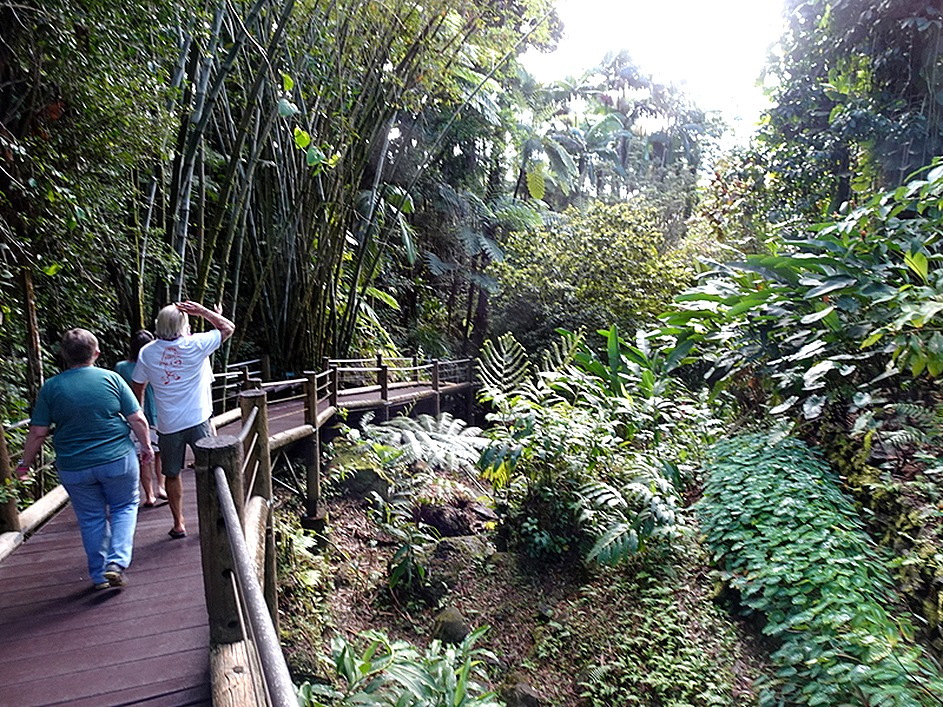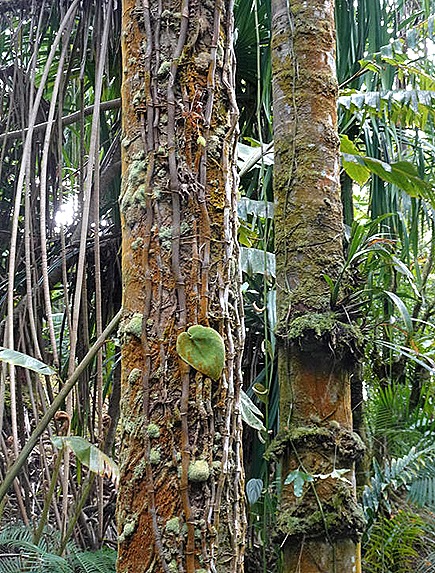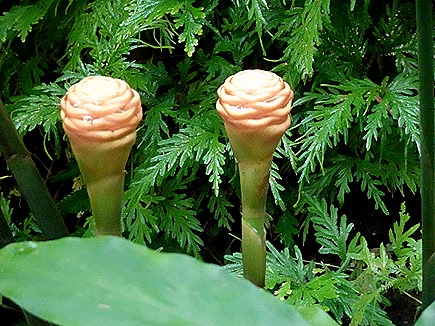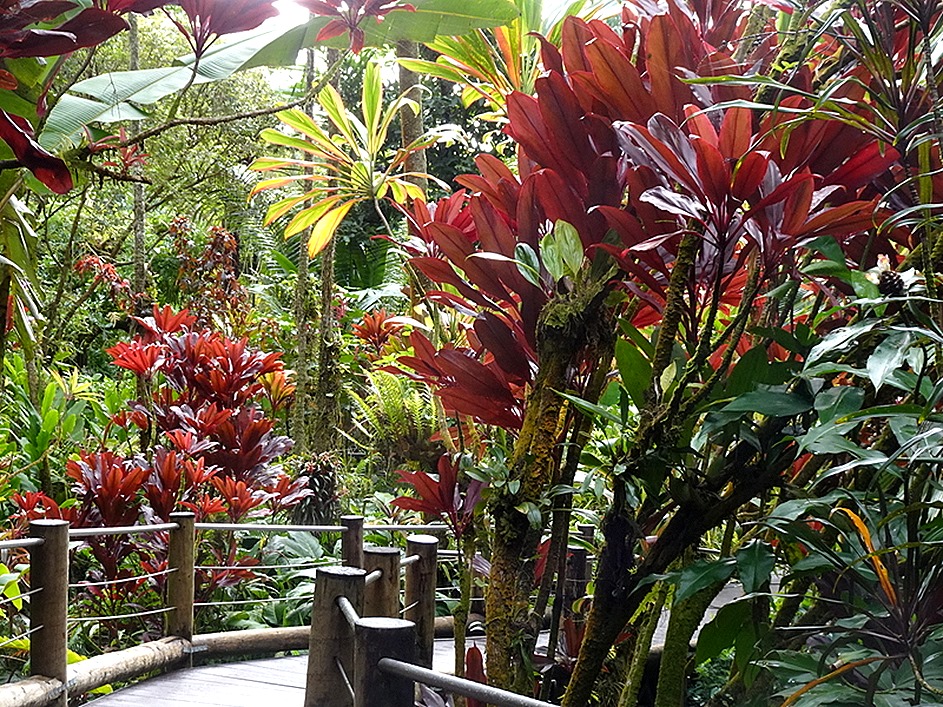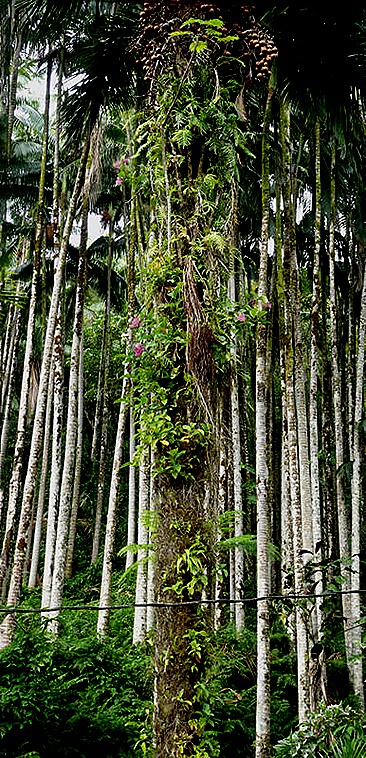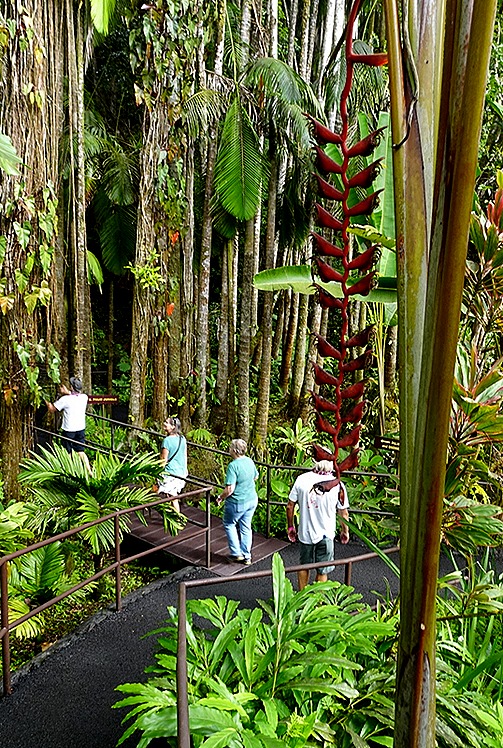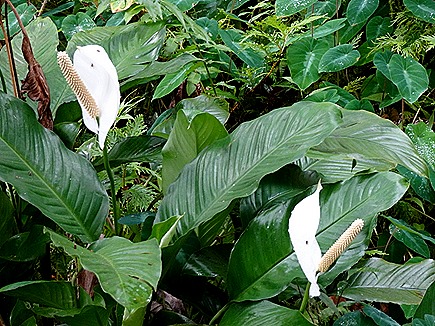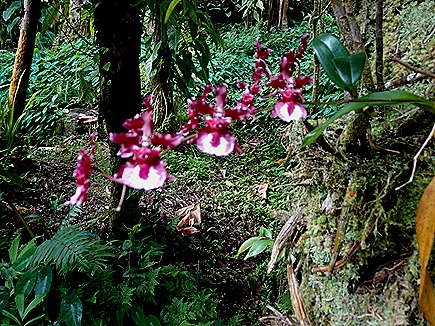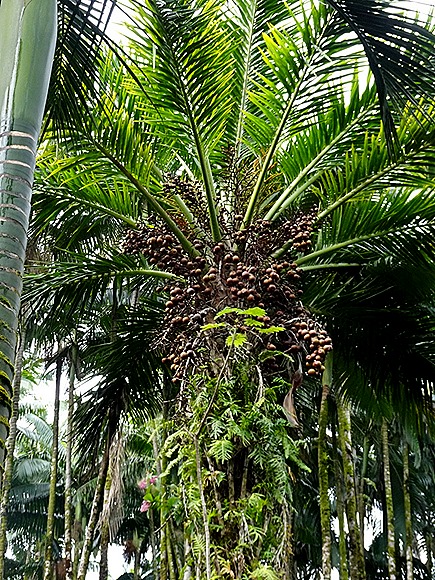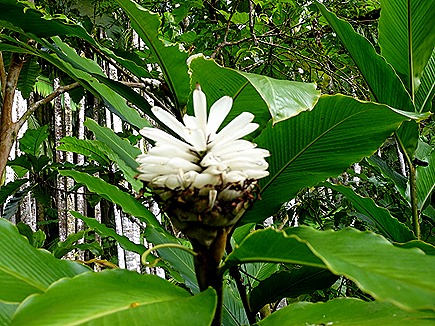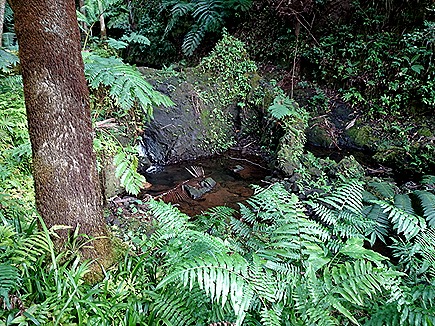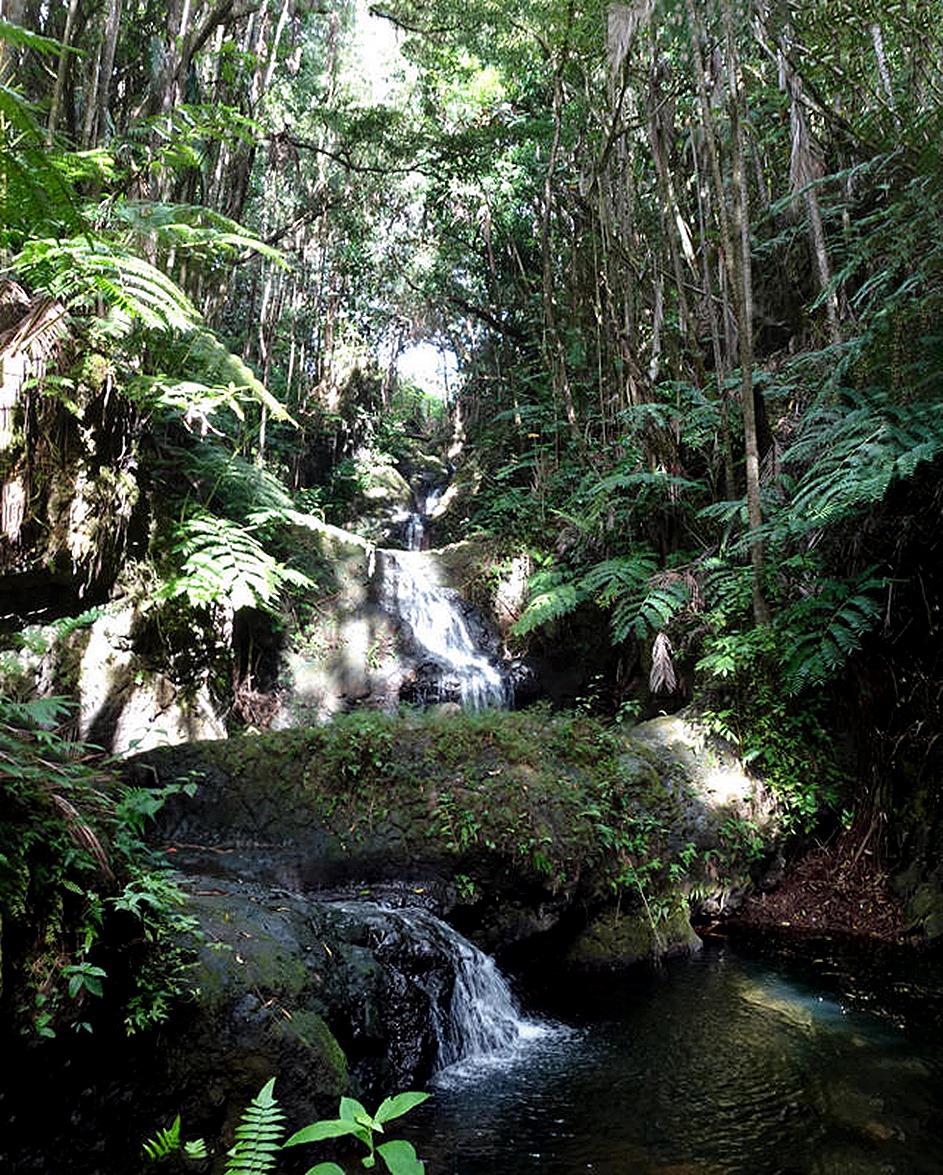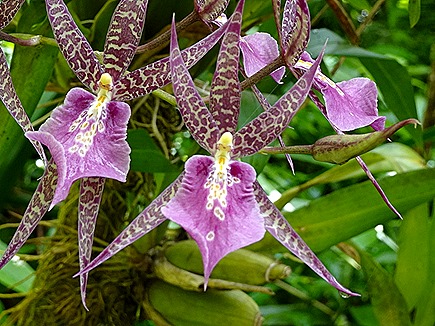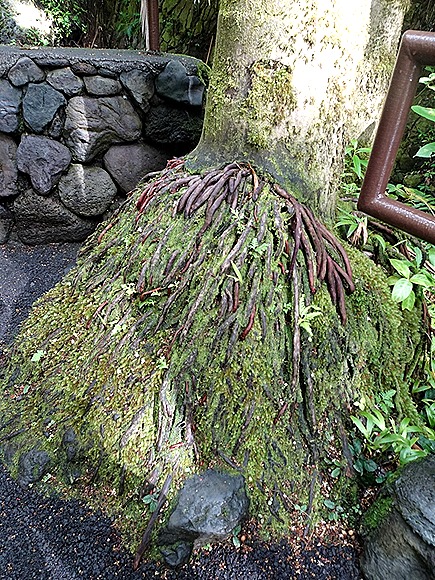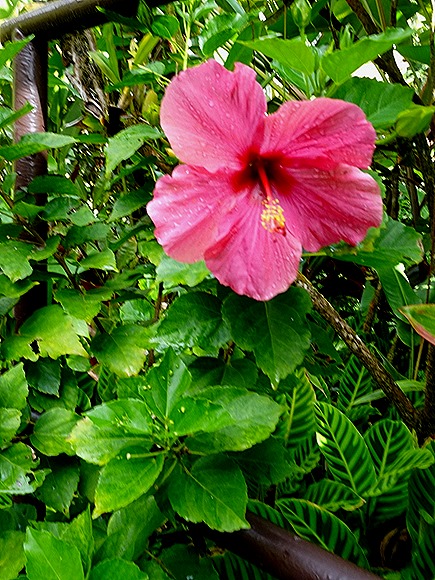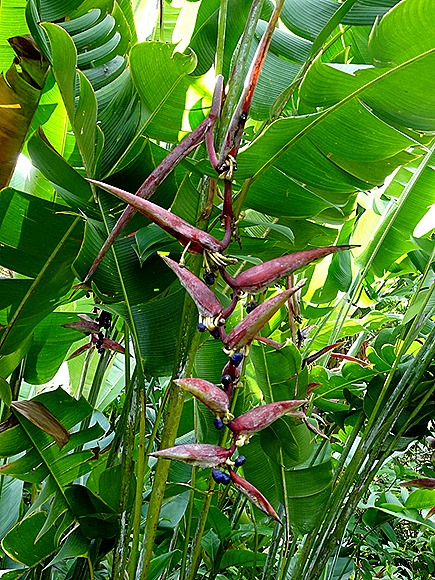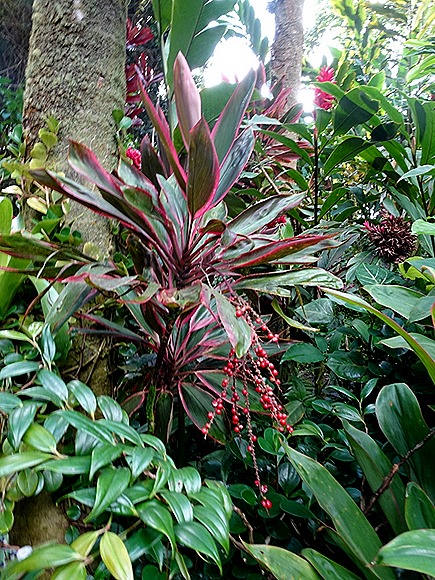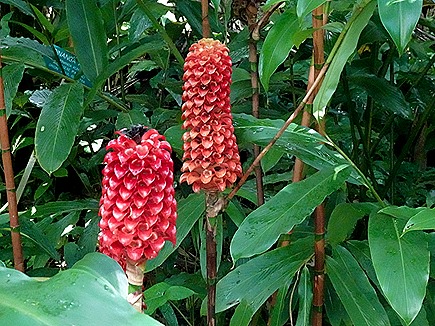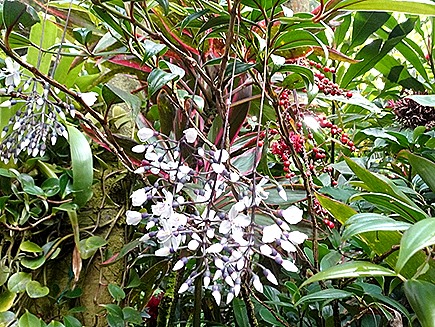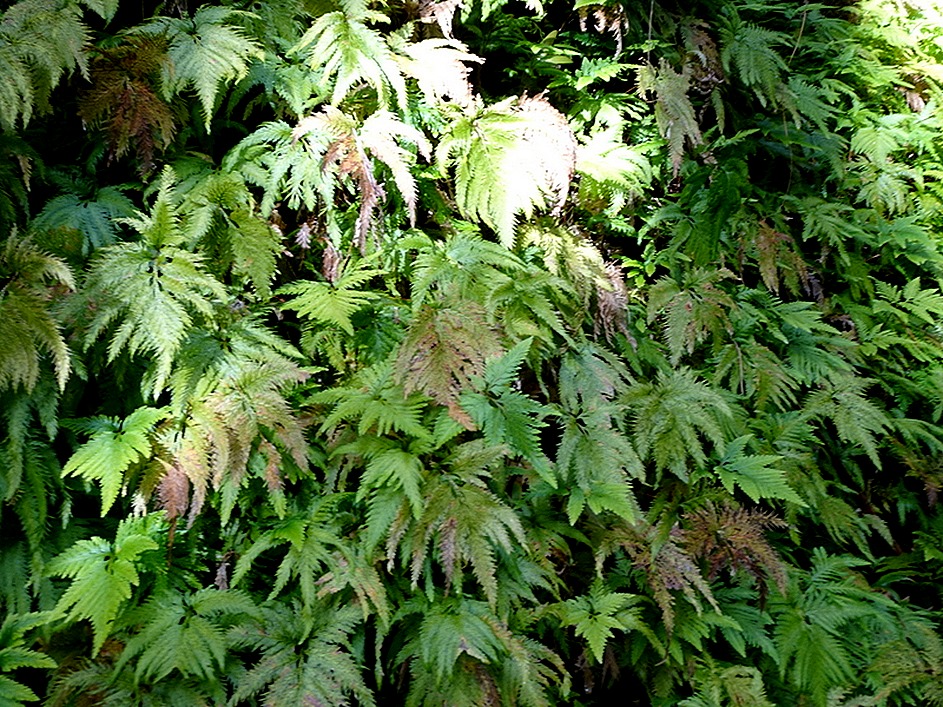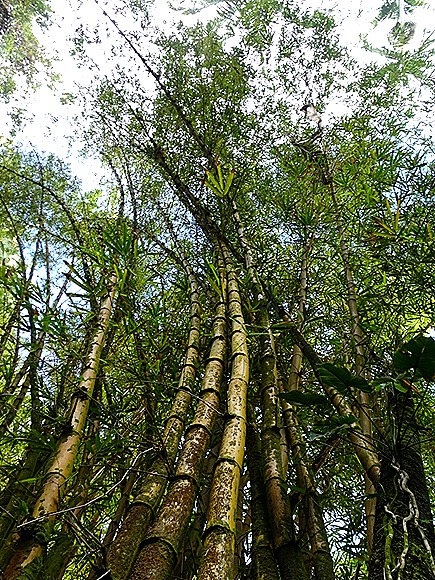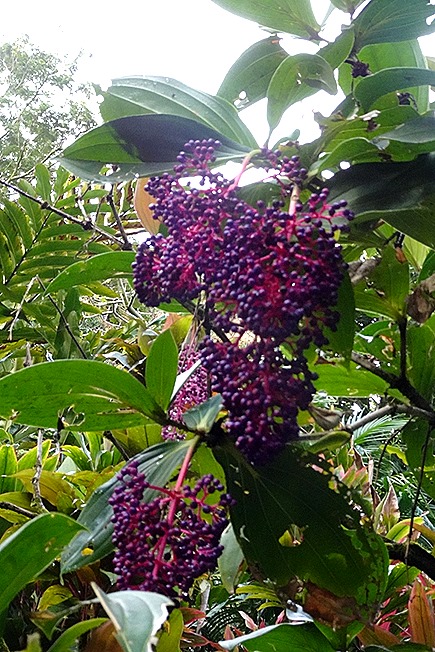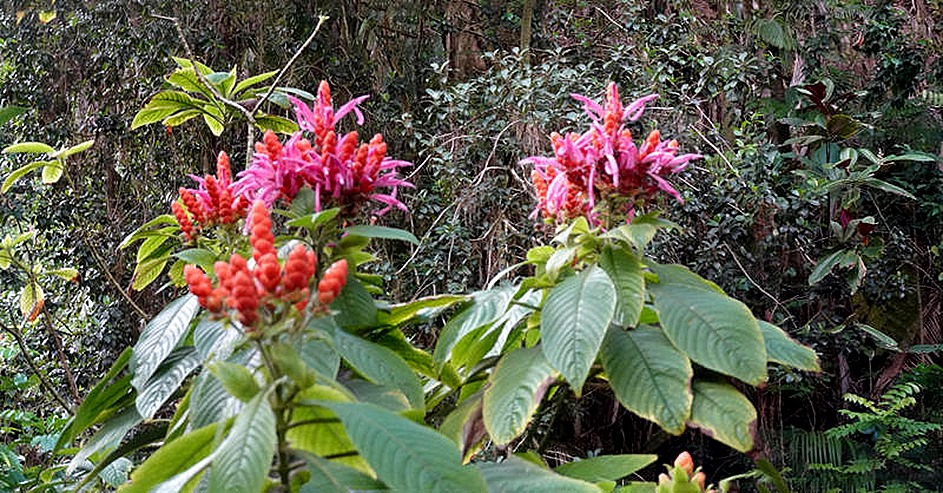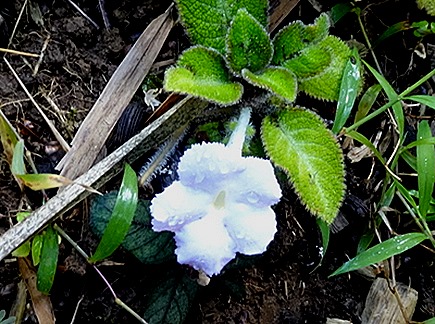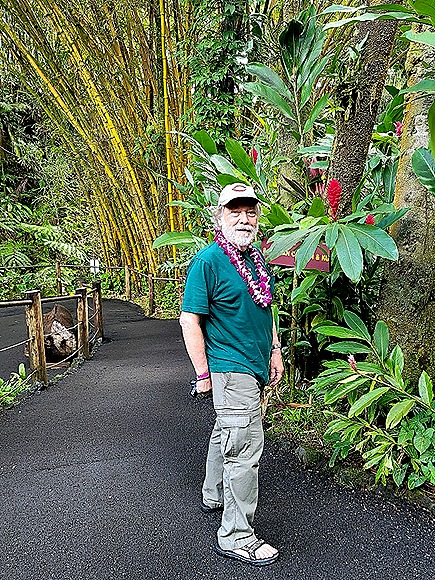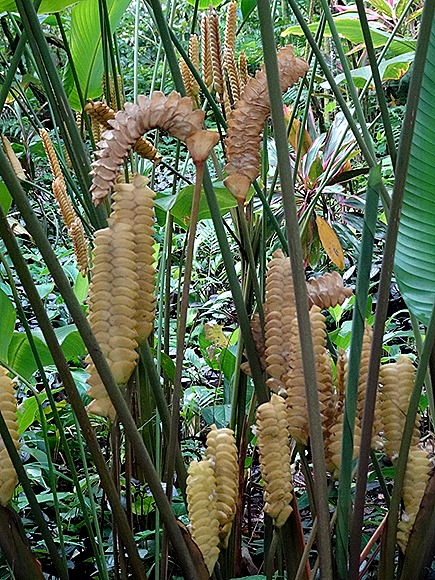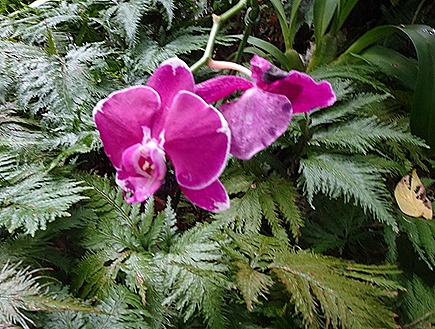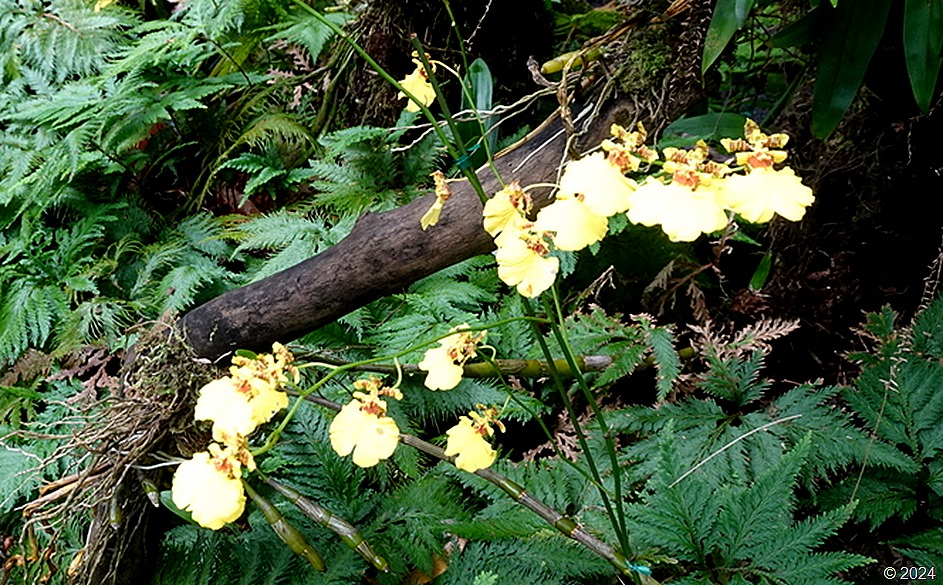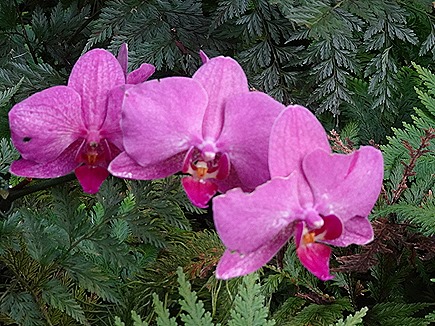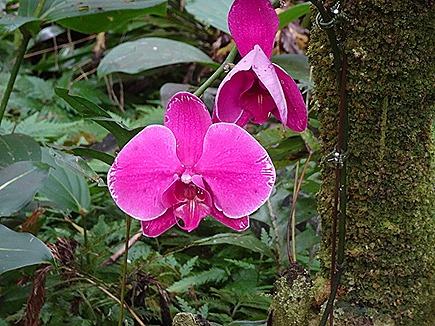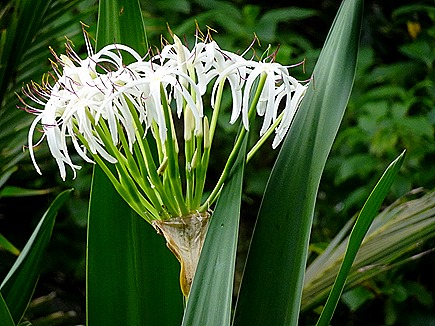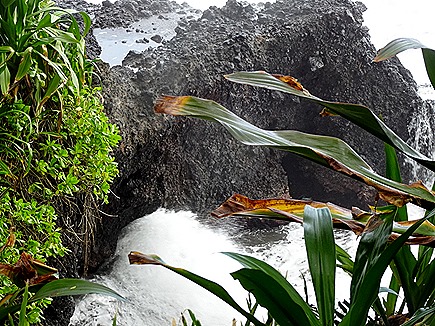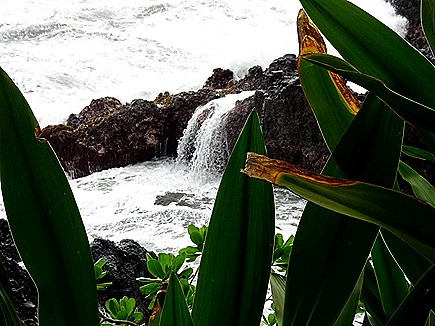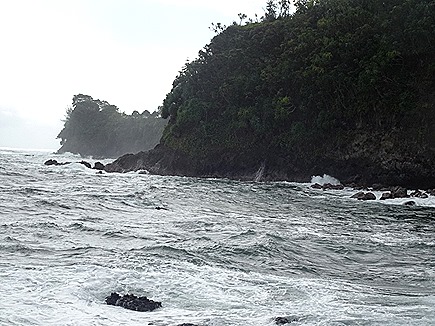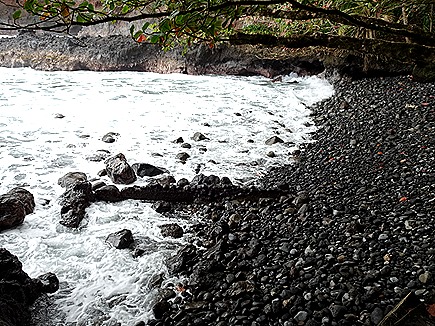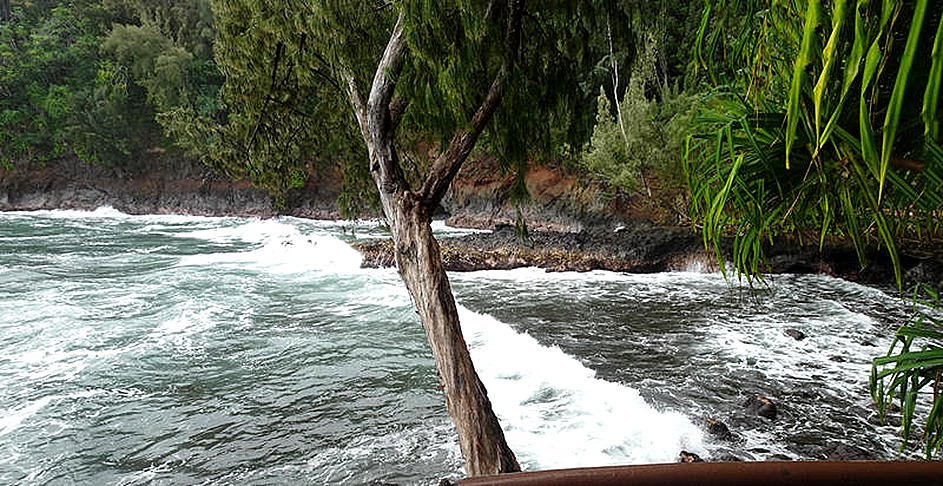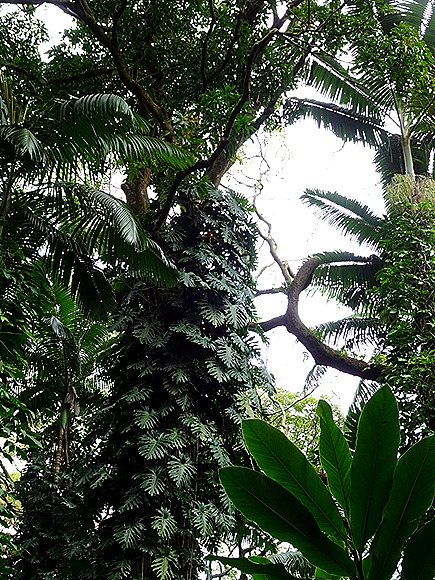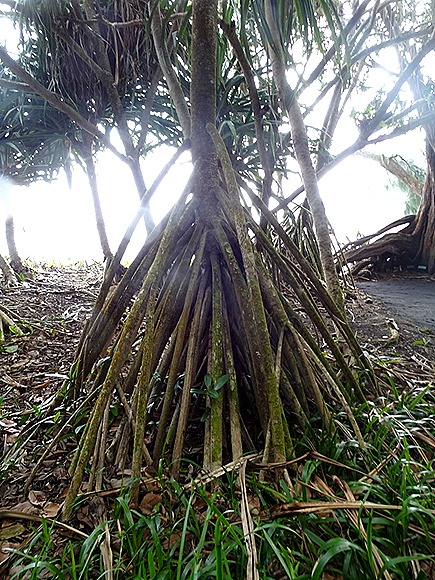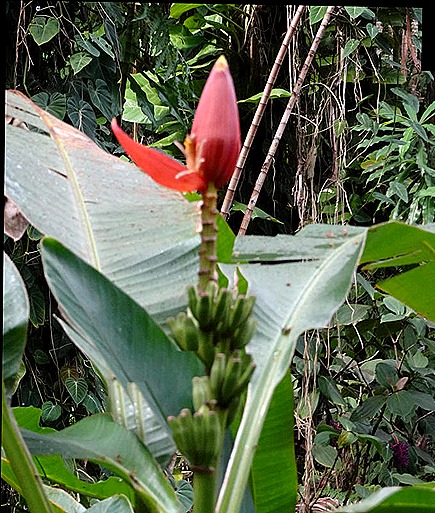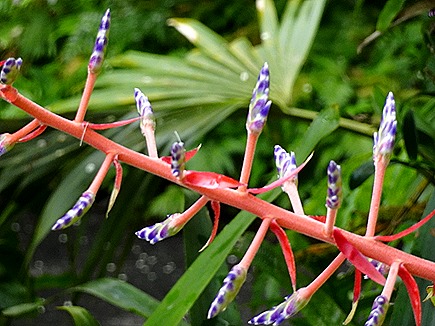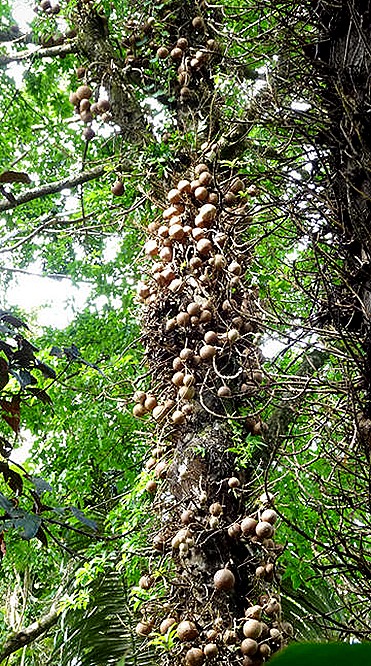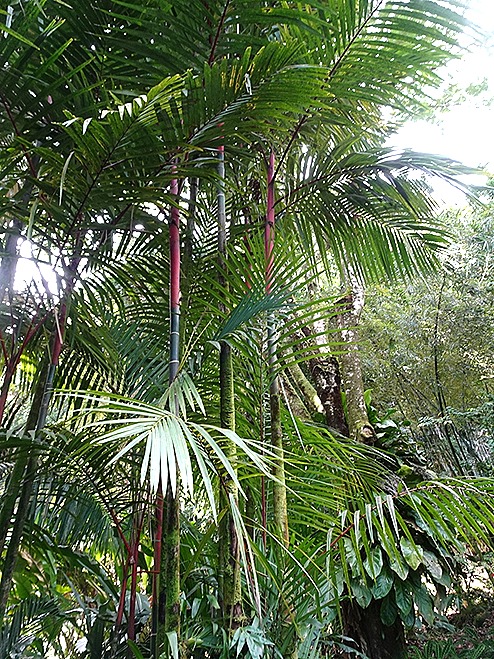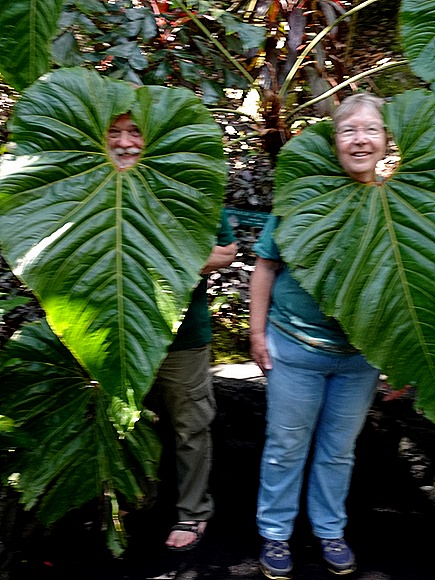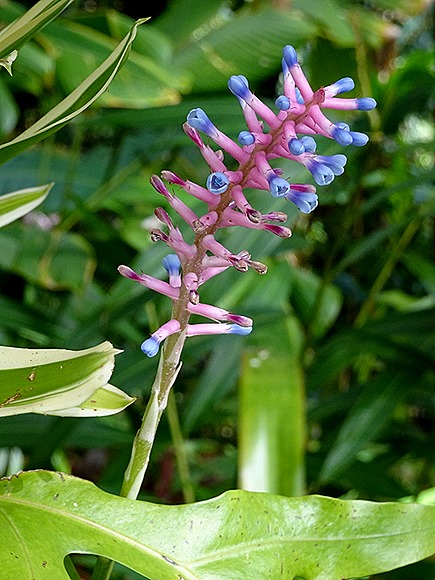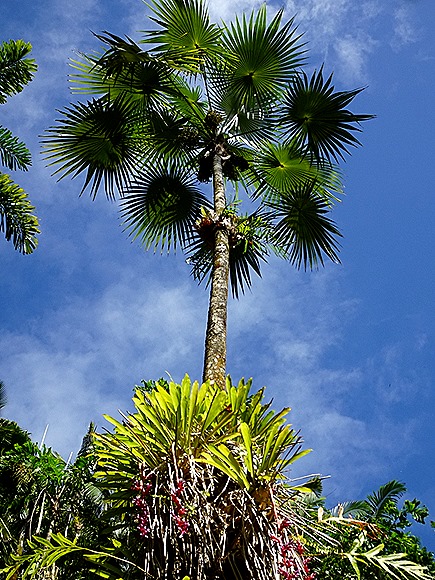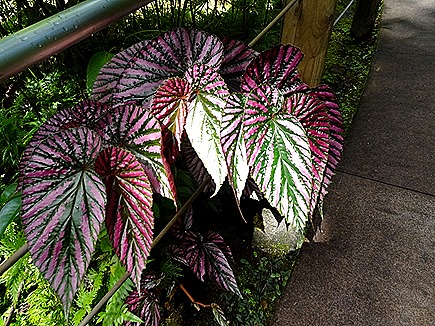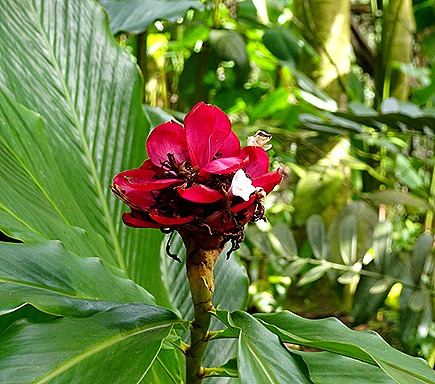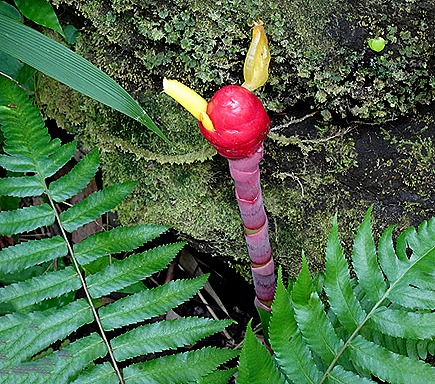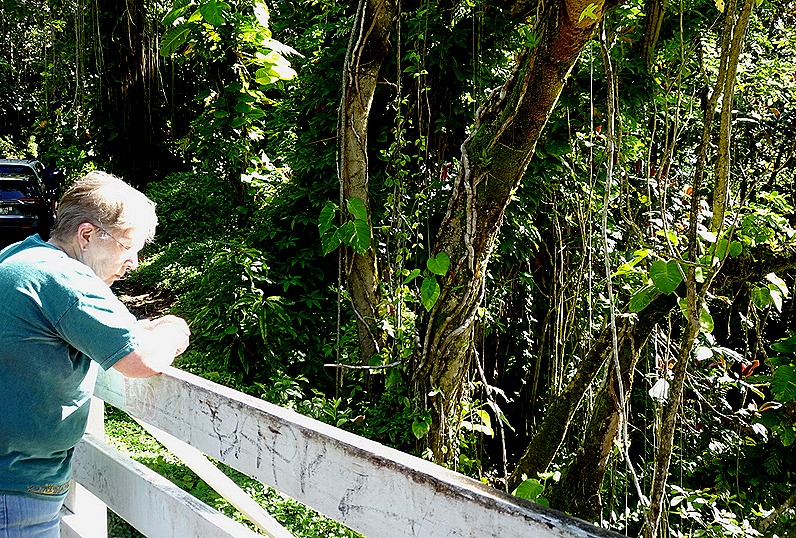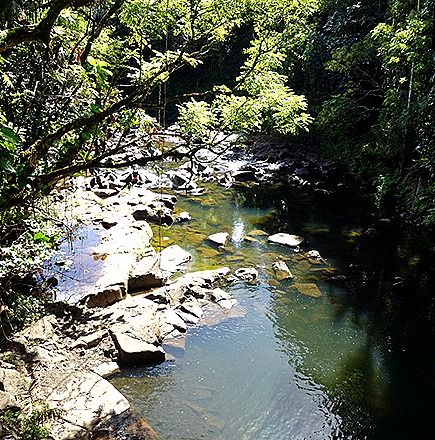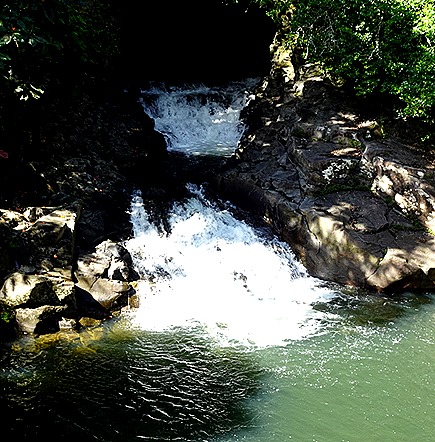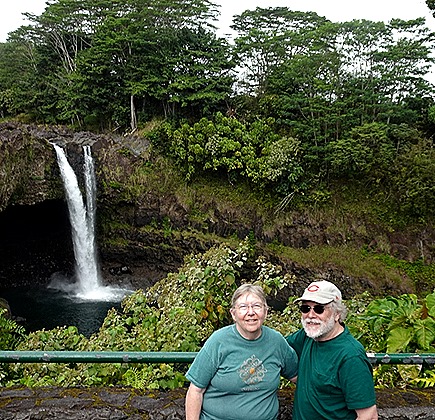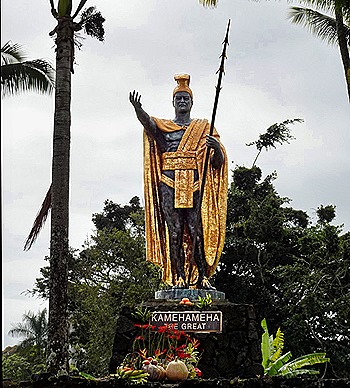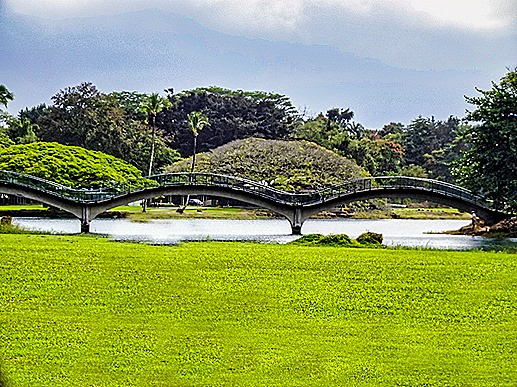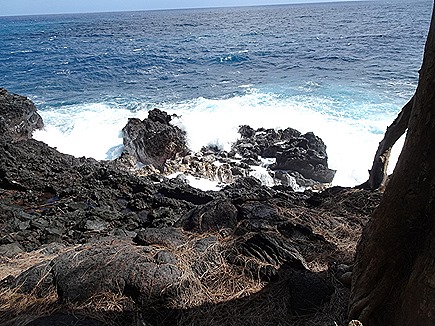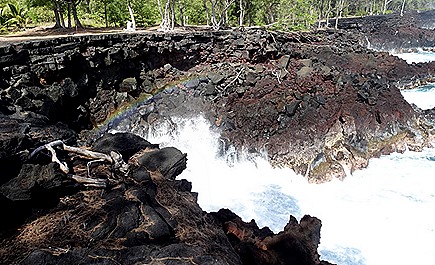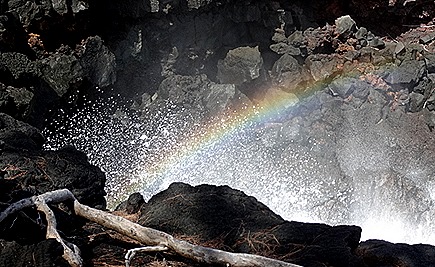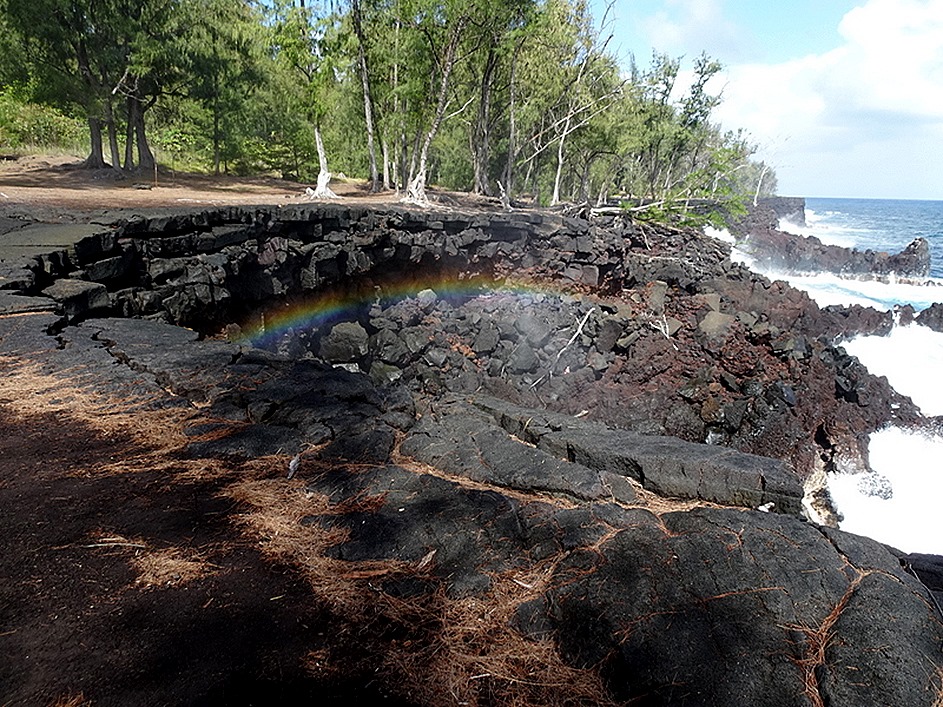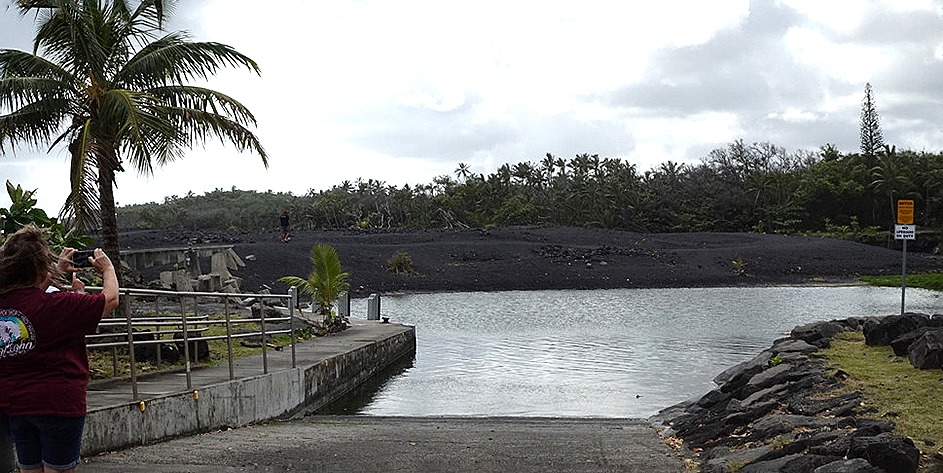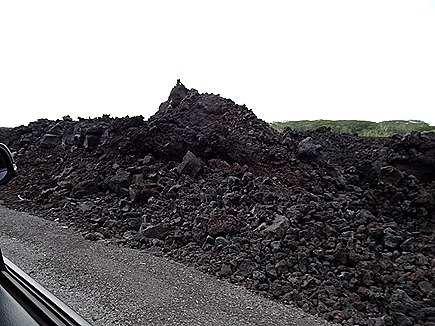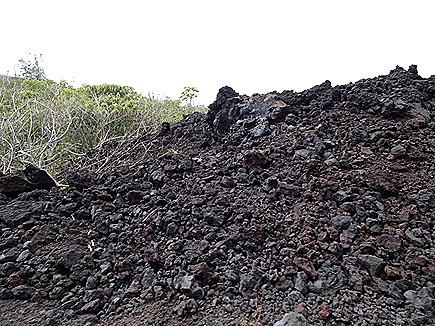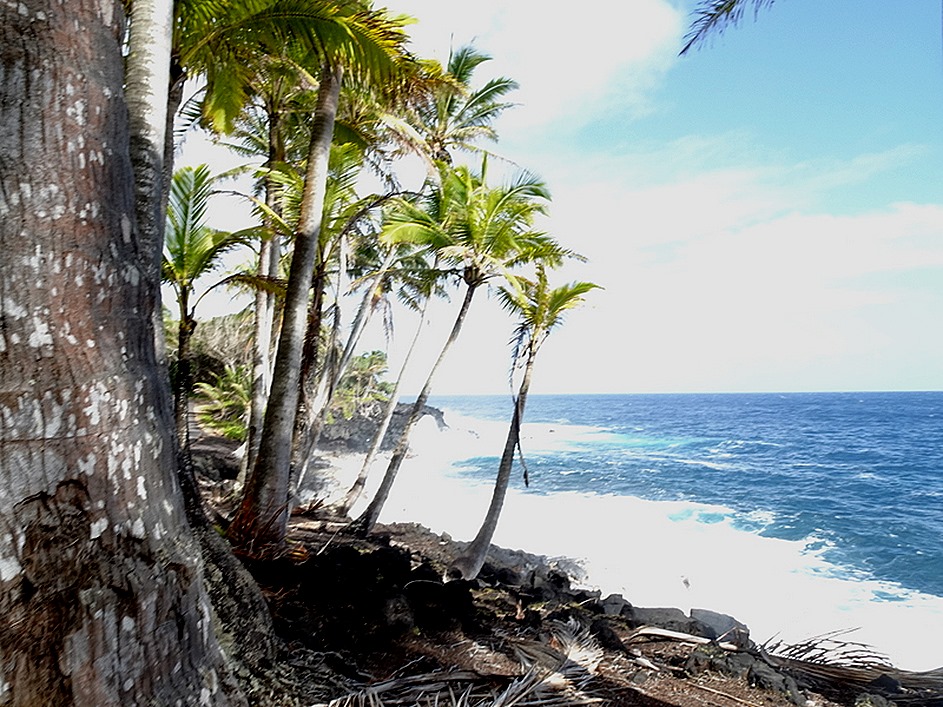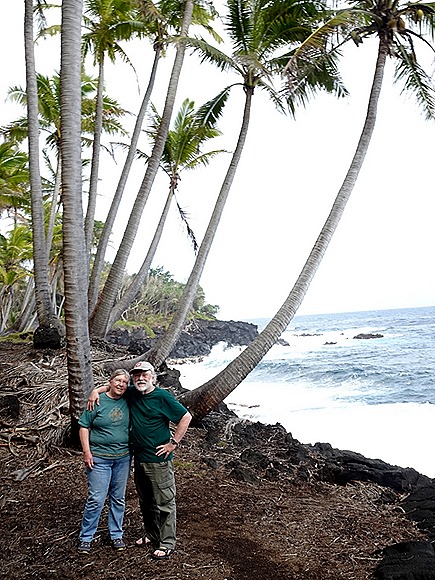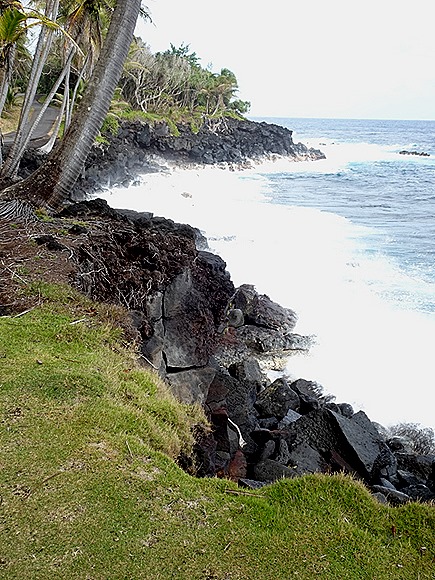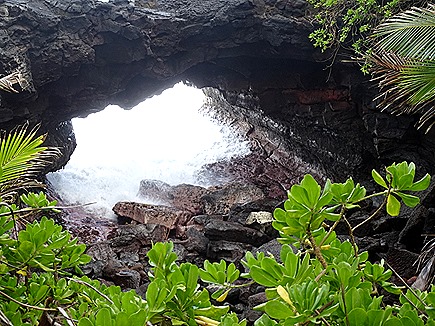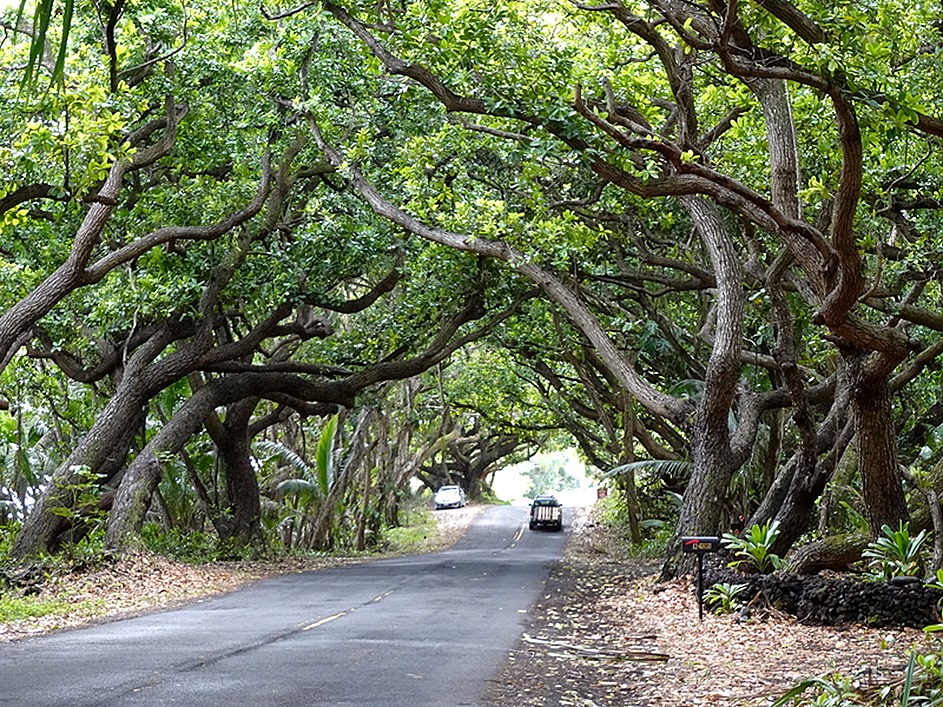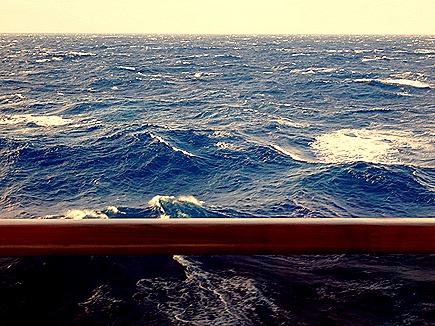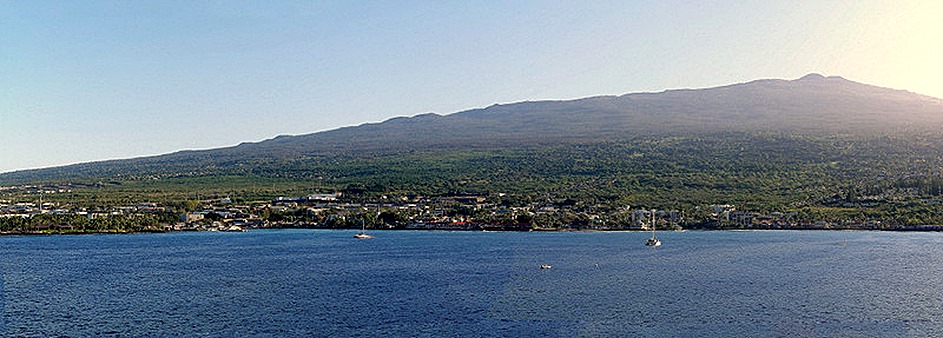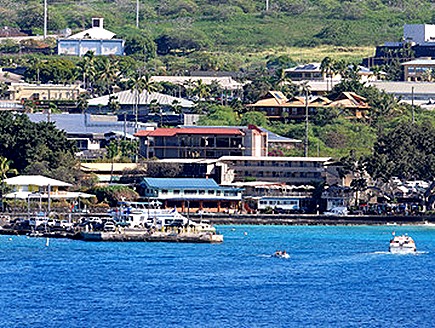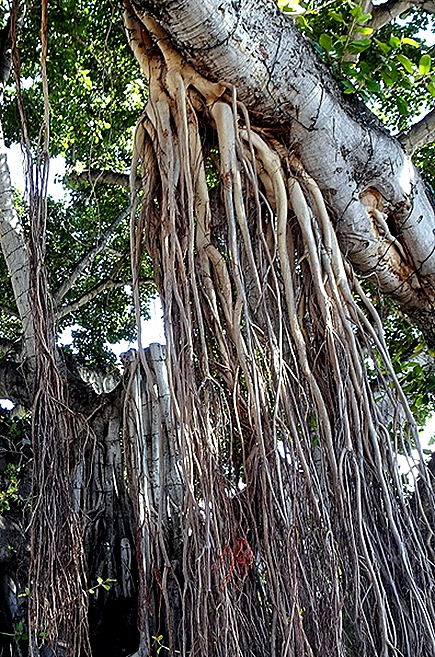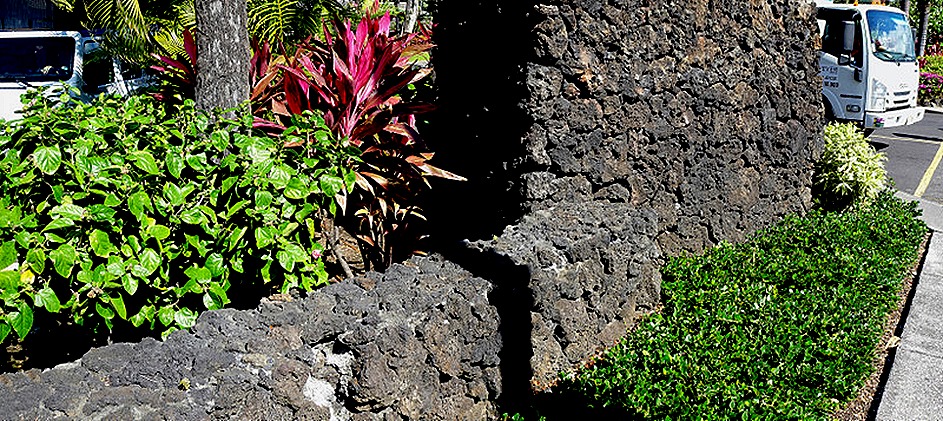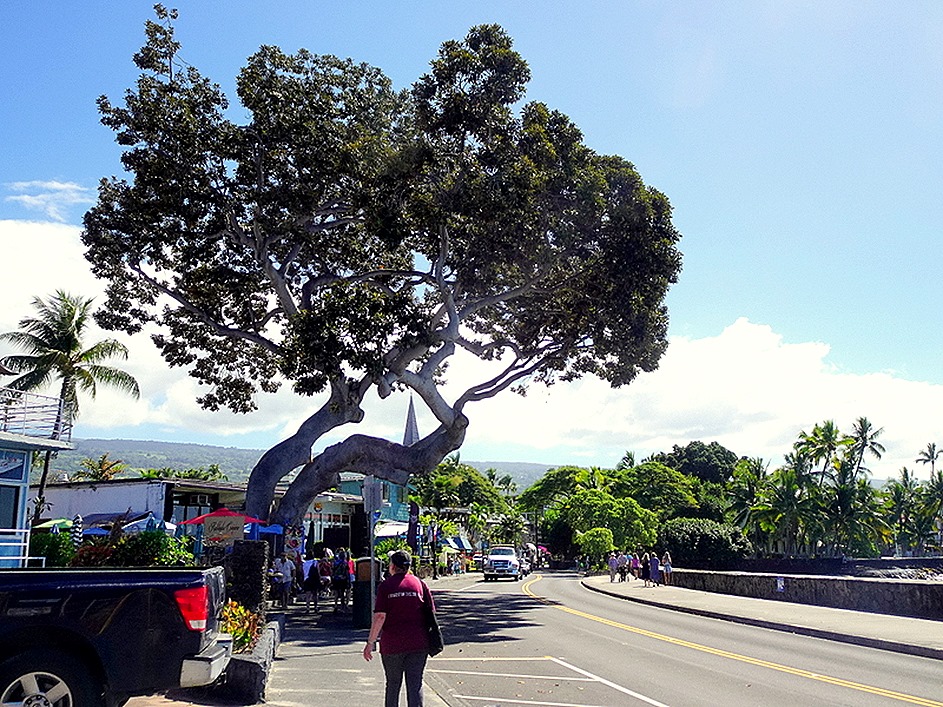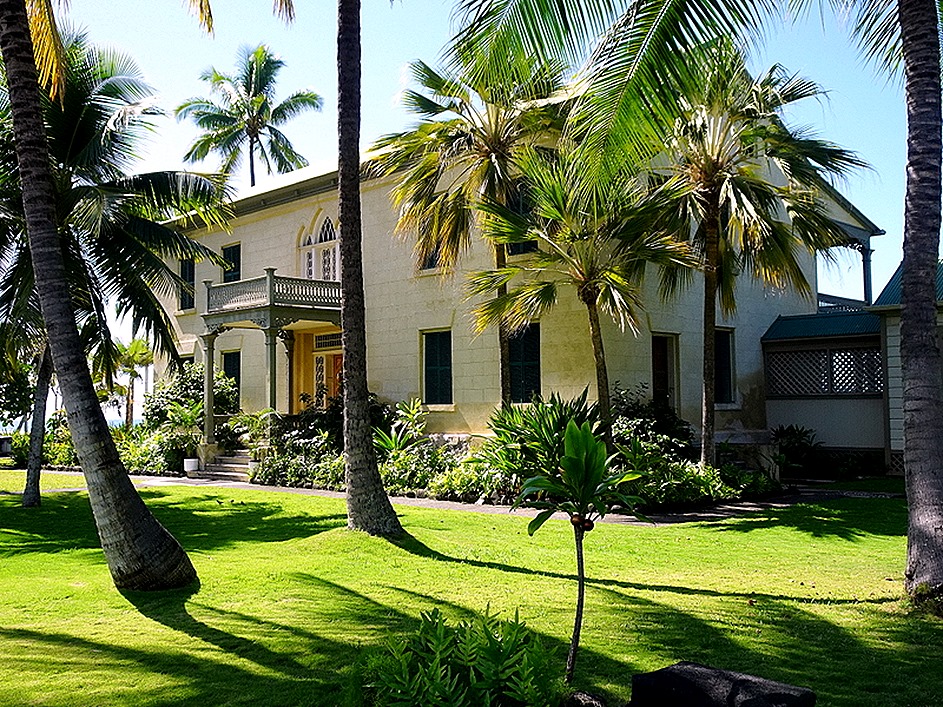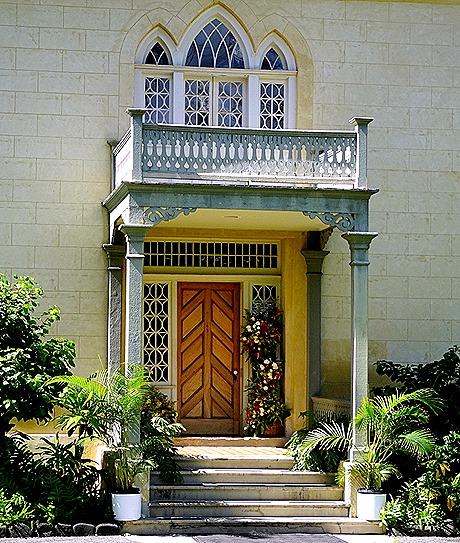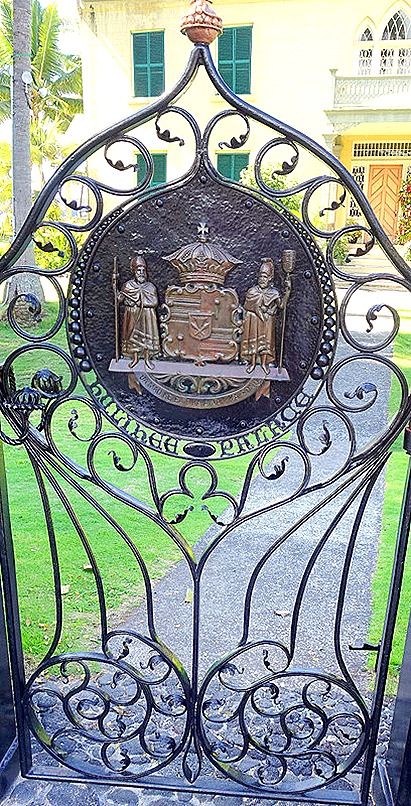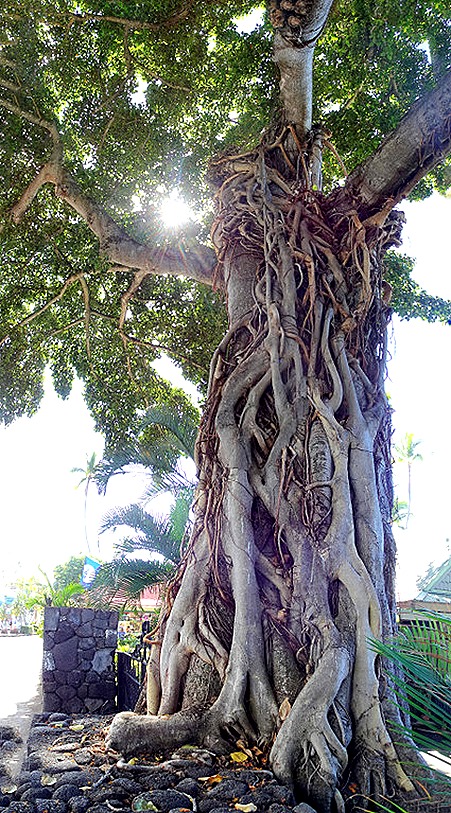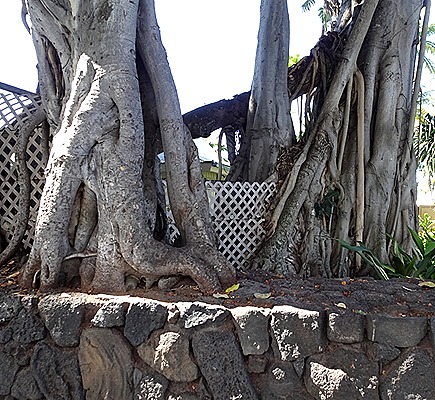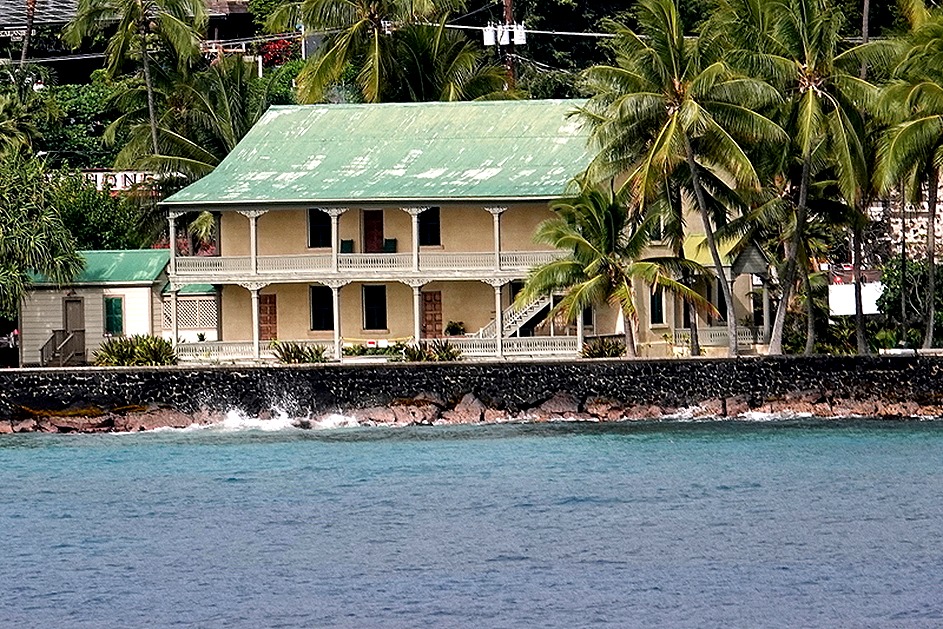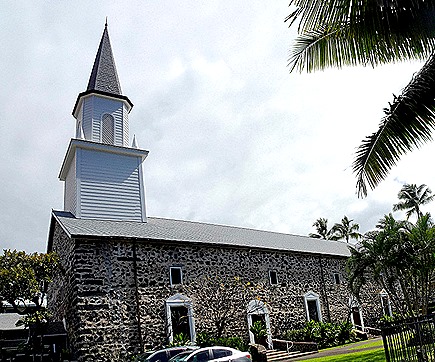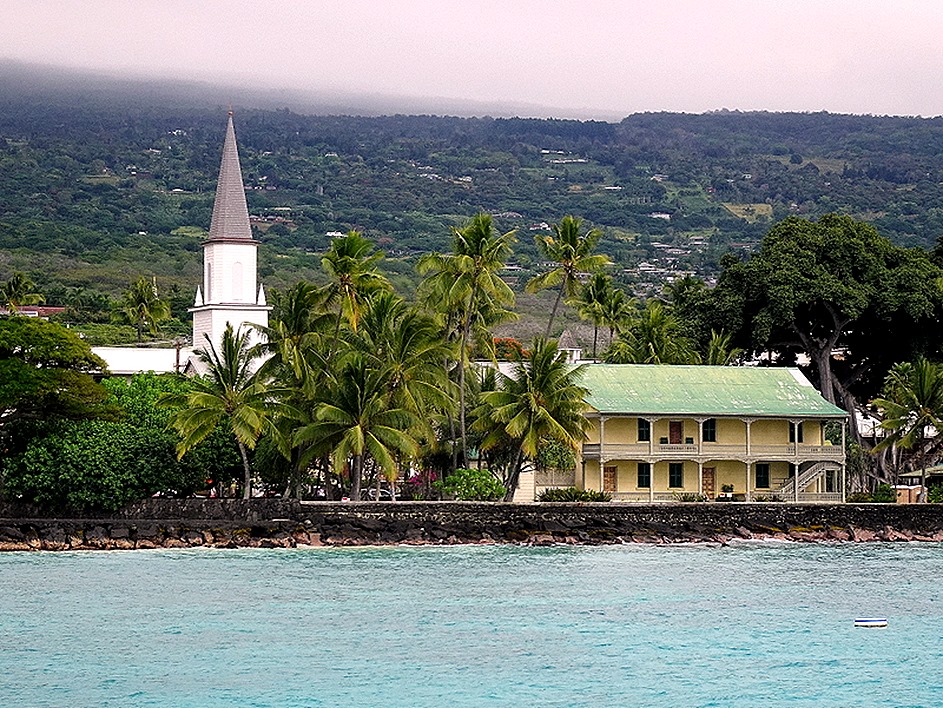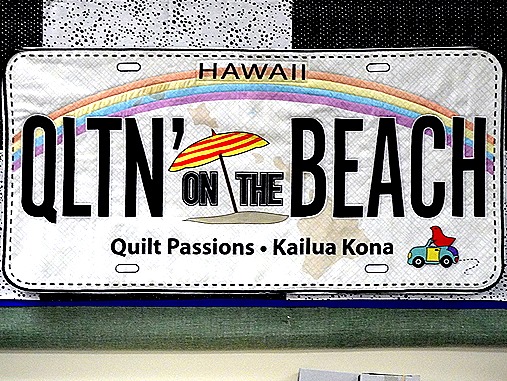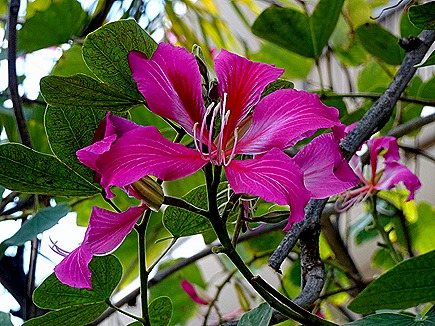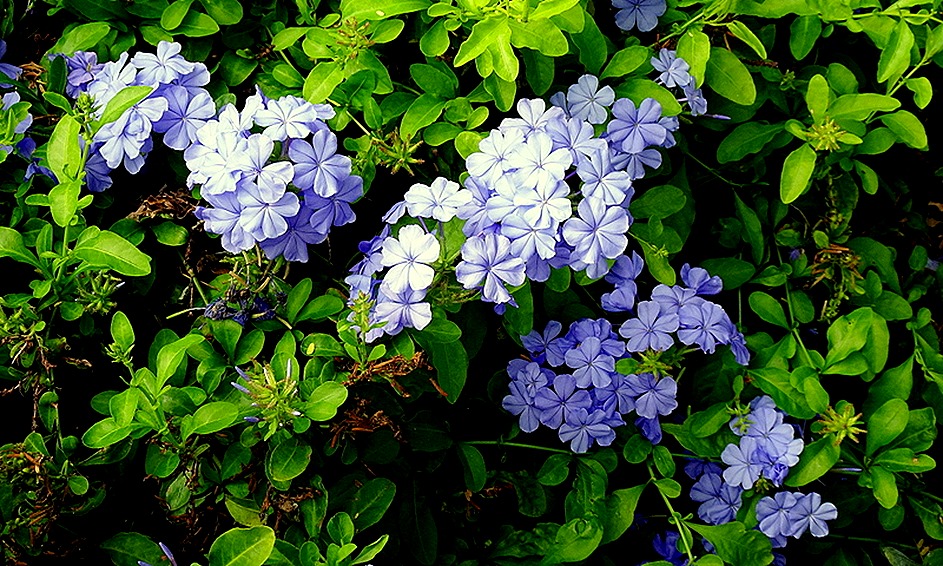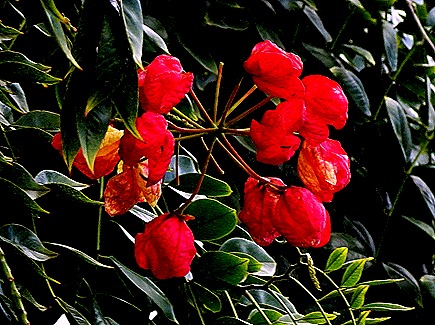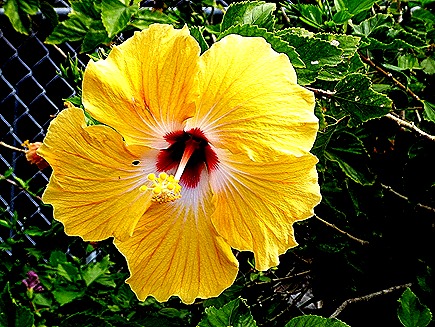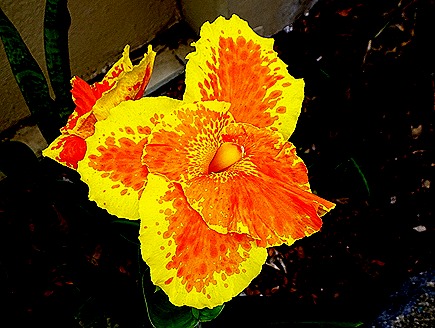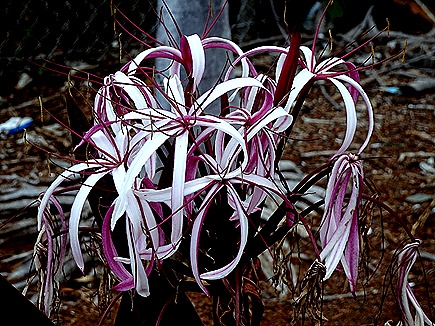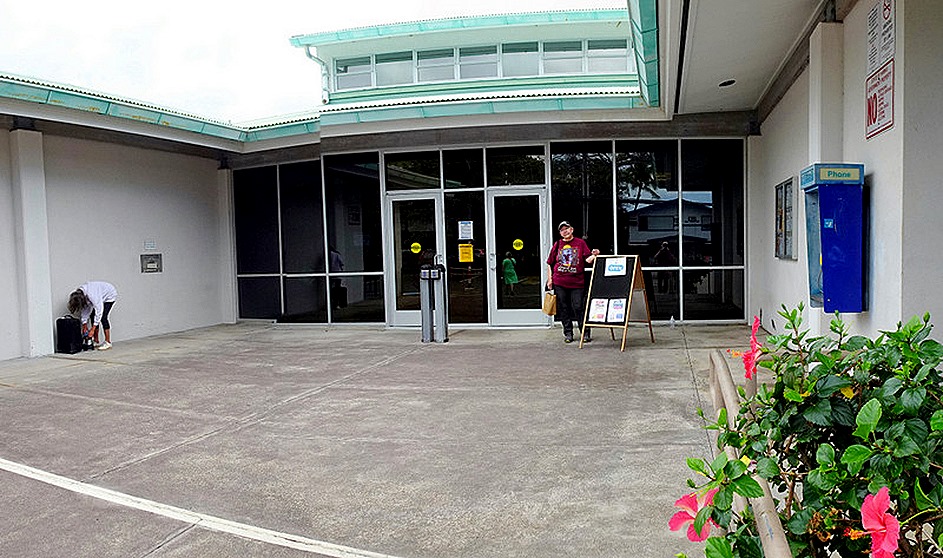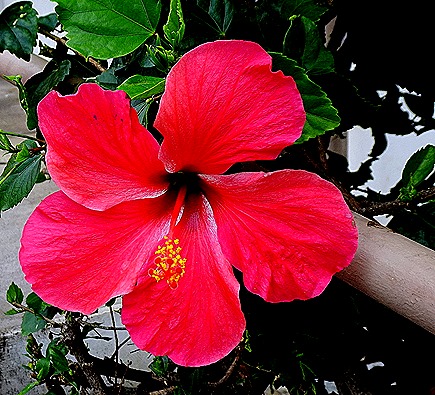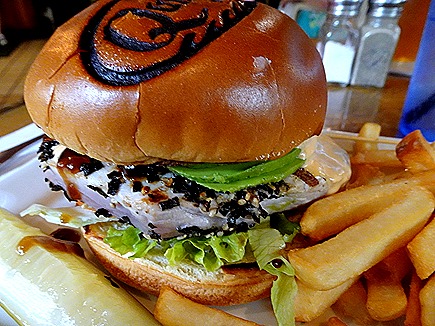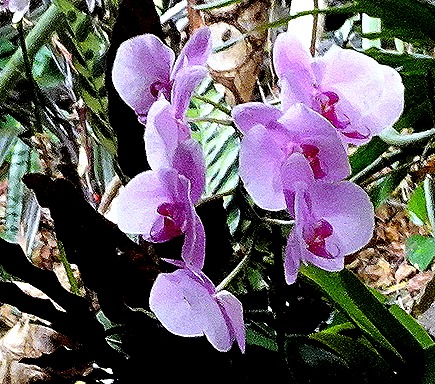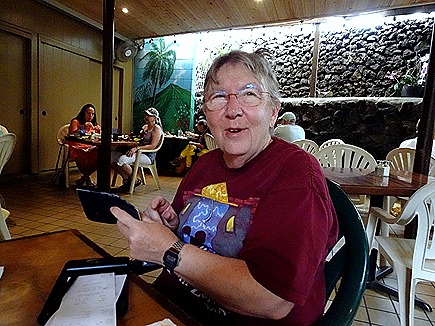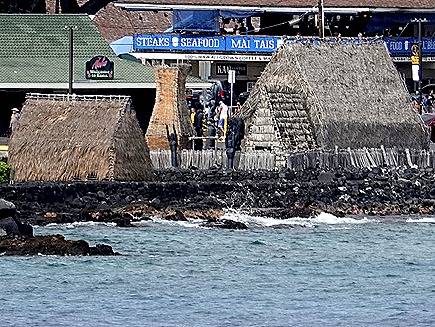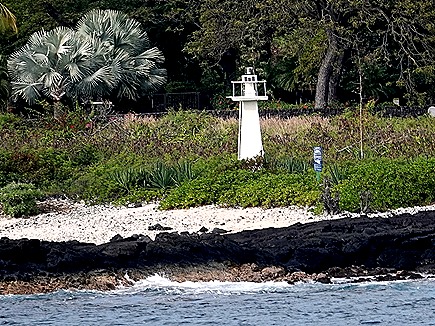Saipan, Northern Marianas (USA) (2024)
We reached Saipan, another important World War II battleground, on the morning of February 19. A welcoming dance troop was performing on the dock below our veranda.
With a population of just over 43,000, Saipan is the largest island of the Northern Marianas, a commonwealth associated with the United States. Its inhabitants are US citizens. This island is smaller than Guam, both in population and in area.
Japan obtained control of Saipan as part of the treaty ending World War I. By the time World War II began most of the inhabitants were Japanese settlers. The Japanese fortified the island and stationed some 30,000 troops here. During the war Japan considered the neighboring islands of Saipan, Guam and Tinian to be essential components of its inner defense perimeter.
During the 1940’s the Americans developed the B-29 bomber, a plane that could fly much further, faster and higher than the bombers then in use in Europe. This made the three islands into important targets for the military because building B-29 airfields there would put the Japanese home islands within reach for bombing missions. A week after the D-Day landings in France the Americans began their campaign to capture these three islands.
Within a few weeks in July and August, 1944, the Americans were in control of these islands and engaged in building airfields with runways long enough to accommodate the B-29’s. Losses were heavy during the battle, with most of the Japanese troops and many Japanese civilians dead and the rest in prison camps and thousands of Americans lost as well. Several hundred B-29’s conducted continuous raids on Japan after that, including conventional and incendiary bombing as well as ultimately the nuclear attacks on Hiroshima and Nagasaki. One of those B-29’s was piloted by Rick’s uncle, Morton Bader, although we do not know which of these islands he was stationed on. We have read that some in the Japanese military hierarchy concluded at the time that the loss of Saipan was the death knell for Japan’s war effort. This campaign has sometimes been called the D-Day of the Pacific.
The Zuiderdam Captain told us that we were lucky not to have missed this port. Apparently the dock in Saipan is notoriously difficult to navigate to, especially when wind and waves are up as they were when we arrived. He said on any previous trip he would have bypassed this port in these conditions, but they tried a new technique involving sophisticated computer simulations that convinced him he could make it in safely. We did, and we are glad we did. Here are some pictures of some of the rugged coast we passed on the way in (although the pictures were actually taken in the evening on the way out).
We joined a private excursion here organized by our friend Tina and we were very glad we did. It was led by Walt Goodridge, a knowledgeable and engaging tour guide who was born in Jamaica. As you will see below, Walt provided a really excellent excursion with knowledgeable commentary. If you are going to visit Saipan, you really can’t do any better than Walt (just google him). We were supposed to meet him at the port gate but he was nowhere to be found when we arrived there. He drove up 20 or 30 minutes later and explained that the company with whom he had reserved a van months before had none available when he arrived this morning so he had to scramble to obtain another one. We were impressed (and relieved) that he accomplished that in so short a time.
We drove to our first stop, the American Memorial Park in Garapan, the largest town in Saipan. The park has a memorial with flags flying which is dedicated to the more than 4,000 Americans and islanders who died during the invasion in 1944. There are also a museum telling the story of Saipan’s war experience, an old Japanese concrete bunker and extensive athletic facilities.
Across the street from the park is the hulk of a large and gaudy casino and hotel that was being built by the Chinese. Construction was halted when the pandemic began and the owners have found themselves in worse and worse financial and legal trouble since then, beginning when one of their workers fell off a scaffolding and several more were found to be illegal workers under US law. At this point it appears that the casino project is dead, but it is unclear what will happen to the uncompleted buildings.
We drove on to an area called Red Beach, one of the first landing sites for the American invaders. In two days of fighting on these beaches the US Marines had some 3500 casualties. During the night of June 16 the Japanese attacked with 44 tanks and 1,000 infantry and lost 31 of the tanks in what is considered the first large tank battle in the Pacific. There was a shelter in the park supported with concrete pillars designed to look like Latte Stones, which had been used centuries ago in Saipan as well as in Guam. Off shore we could see a couple of American patrol ships. Walt said they patrol these waters 24 hours a day and that they have been told if you ever look out there and don’t see them, head for the hills.
Nearby is a sort of memorial, comprised of an old Japanese pillbox, complete with bullet holes, that housed machine gunners defending the beach. On top is a small Japanese tank, very much the worse for wear. And off shore in this area we could see the tops of two amphibious Sherman tanks that never made it to shore during the invasion. Some scuba divers were using one of them as a tether for their boat.
We walked up the beach a little way, passing some traditional open, thatched roof buildings. In one of them was a large outrigger canoe under construction. This was part of a project to create traditional craft and revive the art of Pacific celestial navigation that for hundreds of years had enabled Polynesians and Micronesians to travel between distant islands. The building is called a boat house & itself took months to build using traditional techniques. One of Walt’s assistants, who had been a participant in the project, spoke to us about the canoe under construction and the project.
Afterwards we drove to the home of Lino Olopai, a Carolinian elder who was an accomplished traditional navigator. He used the stars, wave movements and sea animal and bird movements to sail canoes between Saipan and Guam and beyond. The Carolinians are a separate ethnic group that came here from the Caroline Islands during the 200+ years of Spanish control. The Spanish had moved to Guam the small number of Chamorros who survived the conflict and diseases brought to Saipan by Spanish settlers. While the Chamorros were kept in Guam the Carolinians arrived and settled on Saipan. There has been some level of hostility between these groups ever since. Lino’s niece (we think) was one of Walt’s assistants and he spoke to us about his navigation experiences and techniques. Very articulate and interesting.
Enola Gay, the B-29 that carried the first atomic bomb to Hiroshima, left from the neighboring island of Tinian less than five miles from Saipan. We drove to a beach behind what looked like a hotel or club that we think was called Yellow Beach in 1944. Yellow Beach was another of the first places the Americans landed on June 15, 1944, but we were here mainly to get a look at Tinian, visible across the Saipan Channel. Tinian is mostly flat and almost the entire island was converted into the largest air field of World War II.
We stopped for a lunch/snack at Herman’s Modern Bakery, a local favorite and historical site in itself. It seems that in late 1944 the US Navy recruited a baker named Herman Guerrero to begin baking bread for the populace with financial and supply support from the US. He gave bread to many people in the area and later converted to a business subsidized by the US, selling bread for 5 cents a loaf. The business thrived and this fall will celebrate its 80th anniversary. Herman Guerrero, Jr. spoke with us and relayed the bakery’s long history. Oh yes, the food was very good and quick so the excursion could continue promptly.
After lunch we visited two small but striking islands just off the coast of Saipan. Forbidden Island is long and flat, looking like a butte that rose out of the water. At low tide it is connected to the main island by a sandy and rocky (and treacherous) land bridge which is under the water when the tide is in. As you can see in the pictures the tide was mostly out when we visited. We only viewed the island from a lookout point on a cliff above but Walt told us that it has watery caves and that a number of people have been drowned or swept out to sea from there. He says legend has it that those who do not respectfully ask permission from the resident spirits before crossing may be in trouble. He told us that he has brought visitors down to the shore but has never crossed to Forbidden Island with them.
Second was Bird Island, a large roundish rock within swimming distance from the shore of Saipan. It is said that hundreds of birds of various species live there, but we really didn’t see them. Their nests may be in shady indentations in the rock or maybe we were just too far away to make them out.
Once the Americans achieved a foothold on Saipan the defending Japanese really had no chance. The Americans’ control of the sea and the air enabled them to reinforce and resupply their troops as needed, while it prevented the Japanese from doing the same. So they had to make do with the 30,000 troops and the weapons and ammunition that were already there. The Japanese steadily lost ground and their ammunition became depleted, so that they were reduced to fighting mostly with bayonets and sticks. They retreated further and further into the mountains in the north of the island, along with many thousands of Japanese civilians living on Saipan who had been convinced by propaganda to fear the Americans. Many took refuge in caves, which the Marines cleared with grenades and flamethrowers. Because it was impossible to tell from the outside what was inside a cave, many civilians as well as soldiers died in this way (although American soldiers managed to coax a significant number of civilians to surrender).
In the end the Japanese were backed into the northern mountains and had nowhere to go. They had been convinced that it was better to be killed than surrender, and in the end fewer than 1,000 Japanese were captured alive. In the last day or two hundreds of Japanese soldiers hurled themselves to their deaths from two cliffs at the northern point of the island. Several hundred civilians who had been convinced by the military that the Americans were beasts who would abuse and torture them followed suit. We saw horrible film in the museum of Japanese women throwing their infants off of cliffs then following them down. It is unclear how many civilians died this way of their own accord and how many were forced to do so by soldiers, but hundreds of bodies were recovered. (We should add that thousands of Japanese civilians were also captured alive and were repatriated to Japan several years later).
We visited two infamous spots where this occurred, which the Americans called Suicide Cliff and Banzai Cliff. They are within eyesight of each other, Suicide Cliff is a tall mountain cliff that overlooks Banzai Cliff, a sea cliff below it. Today Banzai cliff is lined with monuments to those who died here, most we understand erected by Japanese people. But for its history (a big but), it would be a beautiful spot.
As you can see from the last picture above, Suicide Cliff is very high above Banzai Cliff. From there you can look down not only on Banzai Cliff, but also on the little that remains of a Japanese air field called Marpi Point Field. Actually, the air field was uncompleted when the battle of Saipan ended and the Americans completed building it and used the airfield for some time. Walt gave us a talk about Suicide Cliff when we arrived below at Banzai Cliff. The edge of the mountain cliff has cactus that has been carved with graffiti; it was a disquieting view over the edge to the land far below.
On our way down the mountain we came upon a big “Saipan” sign. Signs like this seem to be becoming more and more popular in cities with big tourist industries. Most of us (not Mary) got out and posed for a picture in front of the sign, which later appeared in the local newspaper.

![]() The northern mountain region also contains what is called the Last Japanese Command Post. It is a fortified cave built into the wall of a cliff, with old Japanese artillery and tanks arrayed on the ground in front. There was a wooden stairway to reach the cave or you could climb up over a few boulders. We have read that this is where General Saito, the top commander on Saipan, committed suicide after sending an order that all soldiers fight to the death.
The northern mountain region also contains what is called the Last Japanese Command Post. It is a fortified cave built into the wall of a cliff, with old Japanese artillery and tanks arrayed on the ground in front. There was a wooden stairway to reach the cave or you could climb up over a few boulders. We have read that this is where General Saito, the top commander on Saipan, committed suicide after sending an order that all soldiers fight to the death.
You can see in the picture above that there is one finished opening that is a window and one jagged opening that could have been a window but is also an explosive opening. We don’t know how many of each there are, but we were told about one incident that created two holes in the wall when a shell from a US Navy ship made one hole penetrating into the cave, then took a chunk out of a concrete pillar, then made a hole on the other side as it exited the cave, all without exploding. Hard to imagine & it must have been quite a shocking experience for the soldiers inside. We think we remember correctly which hole was which, but be a little skeptical in viewing the labelling of the following pictures.
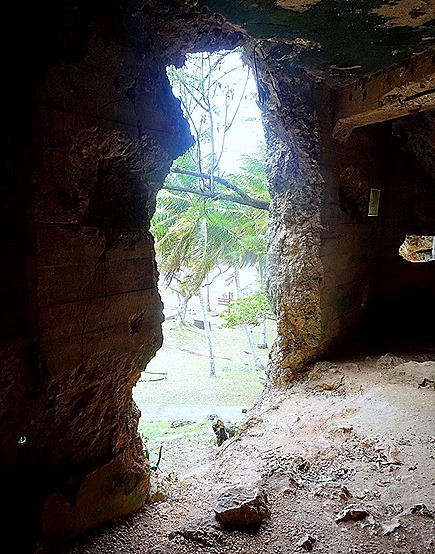

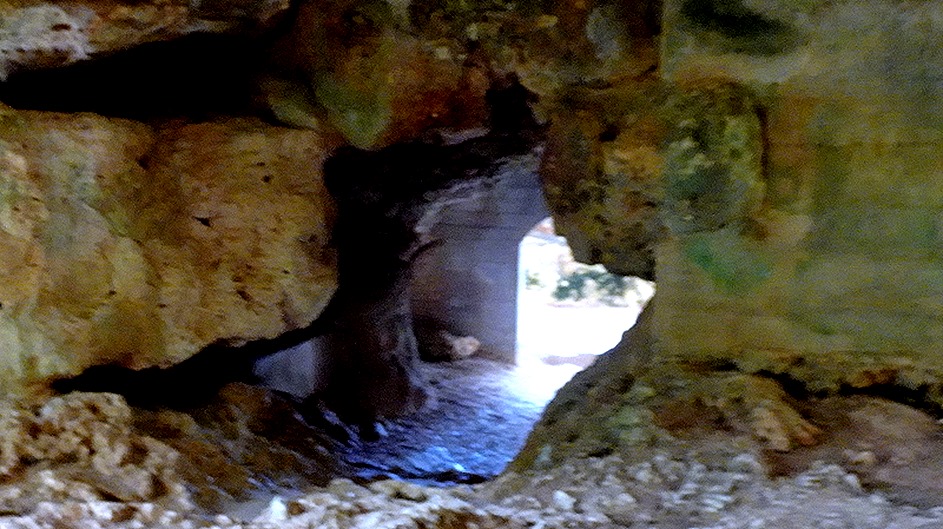 Our last visit before returning to the ship was to the old Japanese Jail in Garapan. You will recall that the Japanese were awarded control of Saipan in the treaty ending World War I and governed the island until losing the battle of Saipan in July, 1944. This jail was built in 1929 and was probably used by the police in the usual manner and also occasionally for a few war related prisoners, often for a transitory period. Today it is a ruins, but interesting to visit. There are three buildings: a large cell block (reportedly for men), a short cell block (reportedly for women) and what is probably an administrative building (no bars on the windows). You can walk through the hallway outside the long cell block, which no longer has a roof.
Our last visit before returning to the ship was to the old Japanese Jail in Garapan. You will recall that the Japanese were awarded control of Saipan in the treaty ending World War I and governed the island until losing the battle of Saipan in July, 1944. This jail was built in 1929 and was probably used by the police in the usual manner and also occasionally for a few war related prisoners, often for a transitory period. Today it is a ruins, but interesting to visit. There are three buildings: a large cell block (reportedly for men), a short cell block (reportedly for women) and what is probably an administrative building (no bars on the windows). You can walk through the hallway outside the long cell block, which no longer has a roof.
There is a theory that Amelia Earhart was imprisoned here with her navigator, Fred Noonan, after their plane disappeared in 1937. Noonan was supposedly beheaded and Earhart kept in the jail until her death sometime before the American invasion. Walt, our guide, is a strong believer in this theory, having interviewed individuals and descendants of people who claim to have seen her (described as a woman with short hair wearing men’s clothing) in the prison. We think that the cell with two openings below was the one pointed out to us as having housed Earhart (although this cell block was reportedly for men). Shortly before our visit there was a report of a claim of discovery of her plane on the ocean bottom, yet to be confirmed. We don’t know the truth of what happened to Amelia Earhart (really, nobody does for certain), but after this visit it will be interesting to follow any additional evidence that may be discovered about her fate.
As we waited to sail away in the late afternoon there was another dance group, with drummers, performing on the dock below our veranda. All of the dancers were holding paddles and some of them looked like they were young girls. It is always nice to receive a welcome or send off on the dock, and this one was very energetic and entertaining. We sailed away in late afternoon, after a very full and rewarding day.
Guam (2024)
Those of you who have been following this voyage may have thought that the 6 sea days getting from Puerto Vallarta to Hawaii was a lot. But we had 8 full sea days between leaving Honolulu and arriving in Guam on the morning of February 18. (If you are counting it may seem like 9 calendar days, but we jumped ahead one day when we crossed the international date line.) So we were very happy to have a chance to step onto solid ground again, finally. An article about our visit in the local newspaper said that we were the second cruise ship in Guam this year and that Guam’s total number of visitors this year is still only about half of what it was before the pandemic. With a population of almost 170,000 Guam is not only the largest island in the Marianas but also the largest in all of Micronesia.
Most Americans probably know of Guam, if at all, because of the important battle fought here in World War II. But Guam actually became a US territory back in 1898 at the end of the Spanish American War. Originally settled 3500 or more years ago by Asians who became the Chamorro people, Guam was first visited by a European when Ferdinand Magellan stopped there in 1521 and claimed it for Spain, although the Spanish did not begin to colonize the island until almost 150 years later. By the middle of the 18th century conflict, typhoons and illness (especially smallpox) had reduced the Chamorro population from about 50,000 to about 5,000.
Only one excursion was being offered in Guam so, since there was nothing much to see near where we docked, we joined it. Our first stop was at the Asan Bay Overlook. The Japanese attacked Guam just a few hours after Pearl Harbor and occupied the island a several days later when the small American contingent there surrendered. The occupation was a bad time for the locals who were subjected to torture, imprisonment, forced labor and executions. On July 21, 1944, US Marines landed at Asan Bay to begin the operation to recover Guam. The Overlook we visited is where the defending Japanese troops watched this first American landing.
There was a pretty substantial rain as we drove up to the Outlook and we took out our umbrellas as we walked to the door of the bus. However, just before we stepped out the rain suddenly stopped completely. So we walked up the hill along with everybody else. The site has been developed with walkways and concrete walls and there are a number of bronze plaques depicting battle scenes and long lists of the 1,888 American soldiers and 1,170 Guamanians who died during the war here.
It seemed to us like a long way to the invasion beach, but it probably didn’t seem nearly as far to the Japanese soldiers sitting there in 1944. Apart from the invasion beach there were some nice views and a lot of greenery growing in the area. We even spotted the Zuiderdam docked in the distance below. And on our way back down from the Outlook our guide pointed out a couple of caves fortified by the Japanese in the 1940’s.
Latte stones were used on Guam and other nearby island to support houses, from about 900 CE until the Spanish occupation in the 1600’s. They consist of a pillar usually between 2 and 16 feet tall with a flat topped hemispheric capstone that would help keep rats from crawling up to the house. We visited Latte Stone Park in Hagatna, the capital of Guam. It had two parallel rows of four Latte stones each, an arrangement that might have supported an A-frame shaped house. However, these stones were brought to the park from other locations on the island. The park containing the stones was very lush and green with tall old trees.
We crossed the street in front of the park, walked through a large parking lot and entered through a gate into Plaza de Espana. This is where the governor’s palace stood during Spanish rule, from 1736 until 1898. The palace, rebuilt in 1885, was destroyed during the US invasion in 1944. Prominent among the structures still standing is the Chocolate House, where the Spanish served hot chocolate to guests and the Americans later had tea. One side of the plaza is occupied by the Roman Catholic Cathedral of Guam. It was constructed in 1959 to replace an earlier cathedral destroyed in 1944 and it sits on the spot where the first Catholic church was built in 1669. In the plaza not far from the cathedral is a statue of Pope John Paul II, who conducted mass for thousands of locals on this spot in 1981. The statue rotates 360 degrees every 12 hours.
The original Guam Museum was opened in 1932 with a collection including pre-Spanish documents and artifacts. That museum was destroyed during the invasion in 1944. A new, modern looking Guam Museum opened in 2016 between the shore and the plaza next to the cathedral. However, it was closed during our visit because of extensive storm damage.
We boarded the bus and headed for Two Lovers Point, a viewing spot atop a 370 foot cliff dropping into very clear ocean waters that we have read is the top tourist attraction in Guam.
The name derives from a very old folk tale, first recorded in 1819, in which two lovers denied the right to marry and live together tied their long hair together and leaped from this cliff in each other’s arms to ensure they would never be separated. A large statue of the lovers has been blown down several times by destructive storms and, we are told, is now in storage. When we visited only the base for the statue was there. But the site has a sizeable gift shop, a wall hosting hundreds if not thousands of locks representing the commitment of couples who placed them there, and also a nice park.
But the focus of this site is a large metal viewing tower built on the very edge of the cliff overlooking the ocean. To the left is a sweeping view of the coast down to Tumon Bay and to the right is a view of the tall cliff. Looking straight down the cliff one can see through the clear waters to the rocks and seaweed below. We were told that sea turtles can sometimes be seen here, but they are scared away when skiers and motorboats operate nearby, as some did while we were there. That’s too bad; it would seem there is plenty of shoreline away from this cliff for the boaters to play without disturbing the turtles.
Tumon is where most of the 20 or so resort hotels are located and also the terminal stop for the shuttle from the ship. We drove down there on our way back to the ship because some folks wanted to spend time there and take the shuttle back. It looked to us like a Las Vegas sort of place, in which we had no interest, so we stayed on the bus for the rest of the trip back, passing some surf beaches on the way.
So that was the end of our short visit to Guam. As we sailed away to another island important in World War II the sun gave us a good night show.
Honolulu, Hawaii (2024)
By the time we got up on February 8 we were already in the Honolulu Cruise Port. First settled by Polynesians around 900 years ago, this was a small fishing village until the early 19th century when Kamehameha I briefly moved his capital here. It was first visited by a foreign ship in 1794 and soon became a significant port for whaling and commercial ships. Although the capital was moved to Kona in 1812, by 1845 Honolulu had again become the capital and has been the capital and largest city in Hawaii since 1845. It was, of course, the location of the beginning of the US involvement in World War II when the Japanese attacked Pearl Harbor. Since statehood in 1959, tourism has increasingly become one of the most important industries here. Today Honolulu has a city population over 300,000 and a metropolitan population in excess of a million, making it the largest city in Oceania outside of Australia and New Zealand.
We had been planning to join a private excursion but that fell through. Instead we were joined by our friend Bill in a visit to the Bishop Museum and the Iolani Palace in the old downtown district. We arrived by taxi at the Bishop Museum entrance and, after entering the multi building campus, walked to the Hawaiian Hall which houses the world’s largest collection of Hawaiian and other Polynesian artifacts.
The museum was founded in 1889 by Charles Reed Bishop and named in honor of his late wife, Bernice Pauahi Bishop. Hawaiian genealogy is very complicated, but it appears that Bernice was a great granddaughter of Kamehameha the Great and the last royal heir of the Kamehameha family. By the time she died in 1884 she was the largest landholder in Hawaii, owning about 9% of all the land including what is now the Waikiki district. She also possessed virtually all of the Hawaiian artifacts and family memorabilia accumulated over the years by the Kamehameha family. Her will created a trust to establish and operate the Kamehameha schools for Hawaiian children and left most of the rest to her husband. He started the museum on the campus of the first Kamehameha school and built the Hawaiian Hall building in 1898 to house the Kamehameha artifact collection (and now many more items contributed since). We have seen estimates that the Bishop estate operating the schools and museum today is worth some 10 billion dollars.
The museum building itself is quite beautiful, in a Victorian style. As shown above, the outside is made of gray stone blocks; the inside is done up in Koa wood, which today is quite valuable. Even the glass display cases are made of Koa wood, giving the museum a lush and warm feeling.
There are hundreds of interesting artifacts on display (and thousands more in storage, we assume), so we can only give you a small taste of some of the more interesting ones. Below are two large wooden images, both from Kauai. The brown one was discovered in 1878 and the black one in 1909 (probably either Kane, god of sunlight, or Ku, god of war). Below them are an adze discovered in 1889 that was specially made to carve narrow portions inside a canoe, and a stone image contributed in 1894.
Several sets of ancient feather cloaks and helmets were on display at the museum. Made with red and yellow feathers from some now extinct birds, each large cloak includes several hundred thousand feathers from some 20,000 birds. The Hawaiians usually did not kill the birds for their feathers, but trapped them to pluck just a few feathers then release them to grow the feathers back and, perhaps, harvest them again later. The feathers are attached to a cloth matrix that holds the whole thing together.
The first set was given to Captain Cook on his last, fatal, visit to the island of Hawaii in 1779. The chief of the island removed the cloak from his own shoulders and draped it around Cook, then placed the helmet on Cook’s head. These items have been in other museums over the years, most recently in New Zealand, but have been here since 2016 and will now be here “in perpetuity.” The other set includes another feather cloak collected by the Cook expedition and a feather helmet believed to be from the voyage of Captain George Vancouver in the early 1790’s.
There are several notable exhibits in the main open area of the exhibit hall:
— A “Hale Pili,” or grass house, sits in the open on the first floor. Its wooden structure was collected from an abandoned thatched house in Kauai in 1903 and it may have been in its original location for up to 100 years. It was rebuilt in the museum with new pili grass and cordage and today is thought to be the only building of its kind still in existence.
— A pair of large connected wooden canoes hangs from the ceiling by the first balcony.
— The skeleton of a large sperm whale hangs from the ceiling by the upper balcony on the other side of the hall, covered on one side by a papier-mache rendering of the whale’s body. This has hung here for more than 100 years, having been purchased originally rather than collected or donated.
— On the top floor, not in the central area, was the surf board used by Duke Kahanamoku (1890-1968), a three time Olympic gold medalist in swimming and considered the father of modern surfing.
A separate room in the museum was dedicated to Kahili. These are long staffs topped with feathers that were a symbol of authority, with only royalty permitted to have them. They were held by bearers who followed behind the royals, sometimes using them to brush away flies. Old pictures of Hawaiian royalty usually depicted Kahili being held behind them. Most of the Kahili in the museum came from the collection of Queen Emma, who was married to Kamehameha IV. It seems that Bernice Bishop inherited the collection upon Emma’s death in 1885.
Leaving the museum we taxied to the Iolani Palace. This was the home of Hawaiian royalty from 1882 until a coup by a committee of foreign nationals (mainly US) overthrew the monarchy in 1893 (with the help of US marines). Hawaii became a US territory five years later and a state in 1959. Iolani Palace served as the government headquarters from the coup until 1969, when the state government moved into a new building nearby. The palace measures 140 feet by 100 feet and it is usually noted that it is the only royal palace on US soil (although why that would surprise anyone is a bit of a mystery to us). It was built on the site of a previous Iolani Palace that was a third the size of this one and had been the official royal residence beginning in 1845 when the seat of government was moved to Honolulu. The king had travelled in Europe in the late 1870’s and wanted to replace the deteriorating old building with one that would command respect in European circles, so the new building was designed with that in mind.
After purchasing tickets we were seated with others on the veranda at the rear of the palace overlooking the parking lot. Across the parking lot was a large Banyan, reputedly a gift from Indian royalty and planted by the Hawaiian queen herself in the early 1880’s. We understand that the new Hawaiian legislative building is a little way beyond this tree. In front of the palace are some Monkey Pod trees, very popular in Hawaii since they were first imported around 1850.
The first floor of the palace is dominated by a large central entrance room with a grand staircase made of koa wood in the center. The doors opposite the staircase are made of wood and etched glass and there are portraits of Hawaiian royalty on the walls.
The Throne Room is also on the first floor. It is a very large room with two thrones at one end. A Kahili (feather topped staff) with white feathers stands on each side of the thrones. Between them is a puloulou, or kapu (taboo) stick, comprised of a large gilded ball mounted on a narwhal tusk. Two years after the coup the new government tried Queen Liliʻuokalani in this room, resulting in her imprisonment in the palace for some 9 months.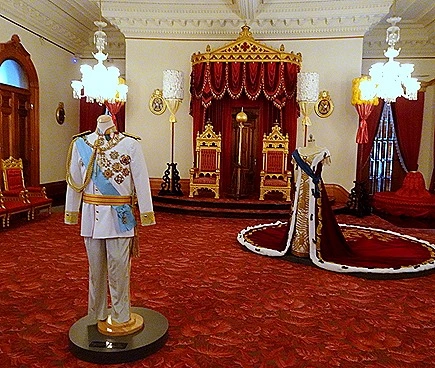

Upstairs were the living quarters. The Iolani Palace was very modern for its time, with electricity, telephones and a bathroom installed before the White House had them we were told. Queen Liliʻuokalani was imprisoned alone in a small room on the second floor and was only able to step out on the veranda outside her room. While imprisoned here she worked on a quilt that is on display in this room (we have read that it was completed later by friends and relatives). The Americans’ takeover of Hawaii and its treatment of its royalty and people is a rather sordid episode in US history; in 1993 the US Congress adopted a declaration of apology for all this (although Hawaii is still a state and there has been no restitution as far as we are aware).
The palace was in disrepair when the government moved out in 1969 but soon a massive restoration project began. Millions of dollars were spent fixing walls, ceilings, floors and furnishings. After the coup in 1893 the new government had inventoried and sold everything in the palace that they could, but as part of the restoration project a large percentage of these items were recovered and this recovery effort continues today. The palace was reopened as a museum in 1978. It is well worth a visit.
Across the street from the palace is a building called Aliʻiōlani Hale, which was built in the 1870’s and currently houses the state Supreme Court. In front of it is another of the statues of Kamehameha the Great, like the one we saw in Hilo. It is very imposing in this context.
We walked back to the ship and after lunch we took some pictures of the port area from the top deck. Not far away was the Aloha tower. Opened in 1926 it was originally a lighthouse, but is better known as a welcoming beacon for ships and visitors to the city. For several decades after its construction this was the tallest building in Hawaii, and during World War II it was covered in camouflage paint to hide it at night.
From the starboard side of the ship we could see Diamond Head, an extinct volcano that overlooks Waikiki beach. There is a military installation inside the cone. Even from this distance it is pretty impressive. There was also a nice view from the starboard side of the mountains beyond the city and one of the bay on the port side.
Many cruise ships have overnight stops in Honolulu and there is certainly more than enough to see and do here to justify that. But our cruise had only one day here (albeit a long one) so there is much to see . . . next time. In the evening there was a local folkloric show on board and we looked forward to that because we have seen some fabulous Polynesian singing and dancing shows on cruise ships. Alas, this was not one of them. It was colorful and the musicians and singers were fine, but the dancing left something to be desired and it was accompanied by a narration that made the whole thing pretty disappointing, at least to us.
The sun set over the water and palm trees and later we sailed away, hoping one day to return.
Hilo, Hawaii (2024)
After leaving Kona we spent the night sailing around the northern part of the island of Hawaii to reach Hilo, on the eastern side, early in the morning. Sailing along the coast we saw what looked like a pink effect from the sunrise, but on closer inspection of the picture it appears to be mountains. These are probably one or two of the volcanoes that are near Hilo: Kilauea, Mauna Kea and Mauna Loa. As in Kona we saw a rainbow as we reached the port; they seem to be plentiful here from our experience.
Hilo was originally settled by Polynesians between 900 and 1500 years ago and westerners, in the form of missionaries and commercial ships, arrived in the 1820’s. This area had a thriving sugar industry, employing thousands of workers imported from Asia, but the sugar mills closed in the 1990’s. Today Hilo has around 45,000 people and tourism is probably the major industry.
You may well think of Hawaii as a tropical paradise and nothing in our experience today would contradict that (as long as the occasional killer tsunami (1946 & 1960) and town destroying volcanic eruption (last in 2018) don’t contradict your understanding of paradise). We spent the day on a private excursion with our friends Tina and Rick (referred to here for obvious reasons as “the other Rick”) to explore the area, mostly along the coast outside the town.
We drove along Banyan Drive, a road on the Waiakea Peninsula lined with some 50 large banyan trees up to 90 years old. Most were planted by, or to honor, local and national celebrities when they came to town. The first were planted in October, 1933, when Cecil B DeMille was here to film a movie. Babe Ruth was also in town for some exhibition games and he planted one shortly after the movie folks (pictured below). Other celebrities who have planted Banyans include Amelia Earhart, Franklin Roosevelt and Louis Armstrong (whose tree mysteriously disappeared).
From here we drove to Hawaii Tropical Botanical Garden. This is a 17 acre garden running down a hillside to the edge of Onomea Bay. Containing some 2000 species, both Hawaiian and imported from as far away as Madagascar, it has almost 200 species of palm trees (some 100 years old) and numerous others too numerous to list. There is also an excellent system of paths and boardwalks, which is helpful because the walk down (and up) is pretty steep, with a 500 foot drop.
While this area had previously been the site of fishing villages and then sugar mills and shipping, it fell into disuse and by the 1970’s it had become a dense jungle. The founder of the gardens began developing it in 1977 leading with a team of workers, doing all the work by hand in order to avoid damaging the roots of trees and plants. The garden opened in 1984 and today is owned and operated by a nonprofit trust. At the edge of the parking lot was a very dense looking palm jungle that may be what the whole area looked like in 1977 (and also two little yellow birds we think were Saffron Finches). We walked across the road and entered the gardens.
We walked down the long boardwalk from the entrance. There are going to be a lot of flowers and trees shown here (paradise, right?), but we only know (or suspect) the names of a relative few. But they are all worth looking at anyway so we will include them here.
We walked on through large stands of very tall palms, some with air plants (bromeliads?)growing on their trunks. Also many more brightly colored flowers.
Onomea Falls is a small three tiered waterfall, discovered behind the dense jungle during the original clearing operation. Walking on from there we passed many more beautiful flowers, palms and ferns.
We walked on through a seemingly endless garden of flowers and trees, including tall bamboo and other trees, many with bromeliads growing on trunks and branches.
We came to the orchid garden, with a range of orchid types. There are thousands of orchid varieties so they had plenty to pick from.
After the orchid garden, yet more diverse flowers and trees, including red leaf obake.
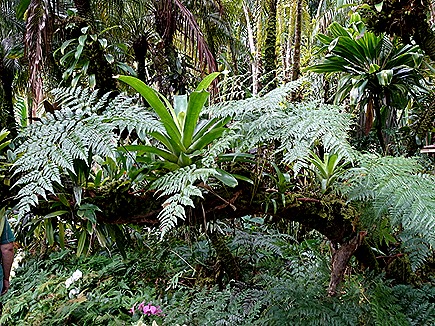

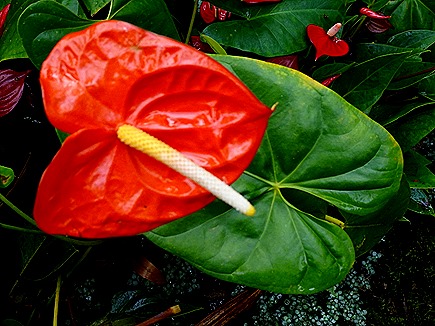

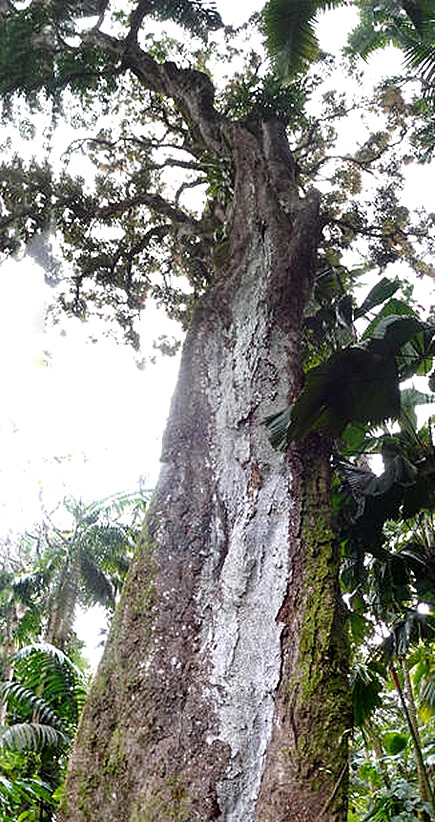
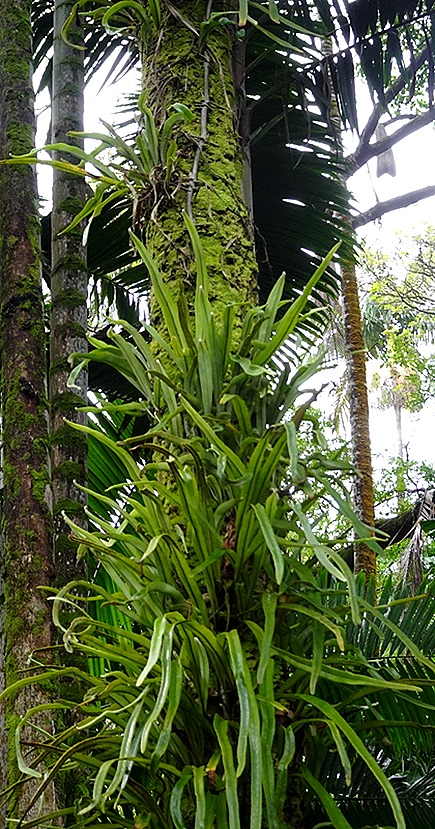
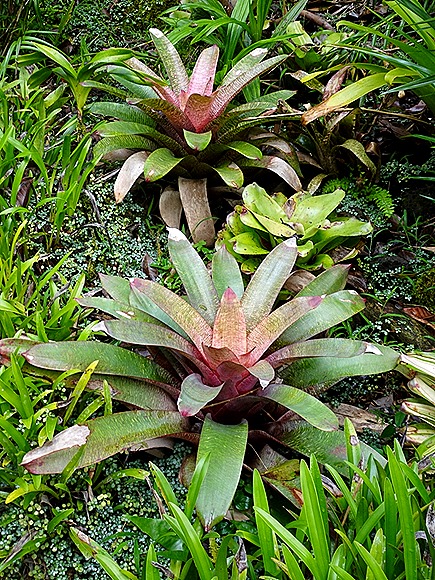
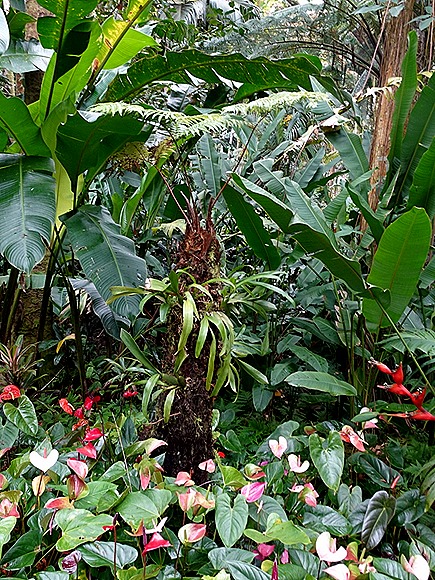
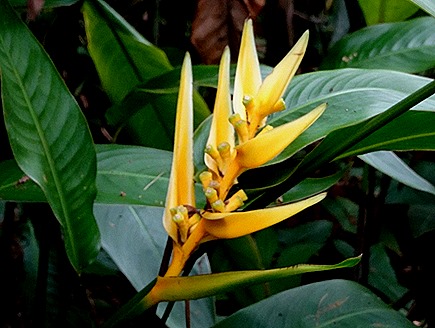
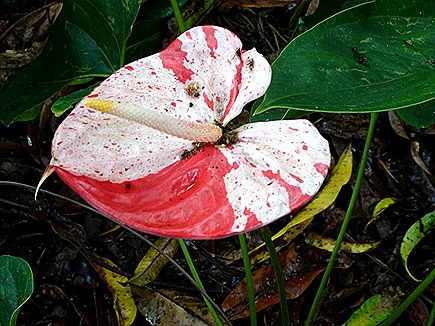
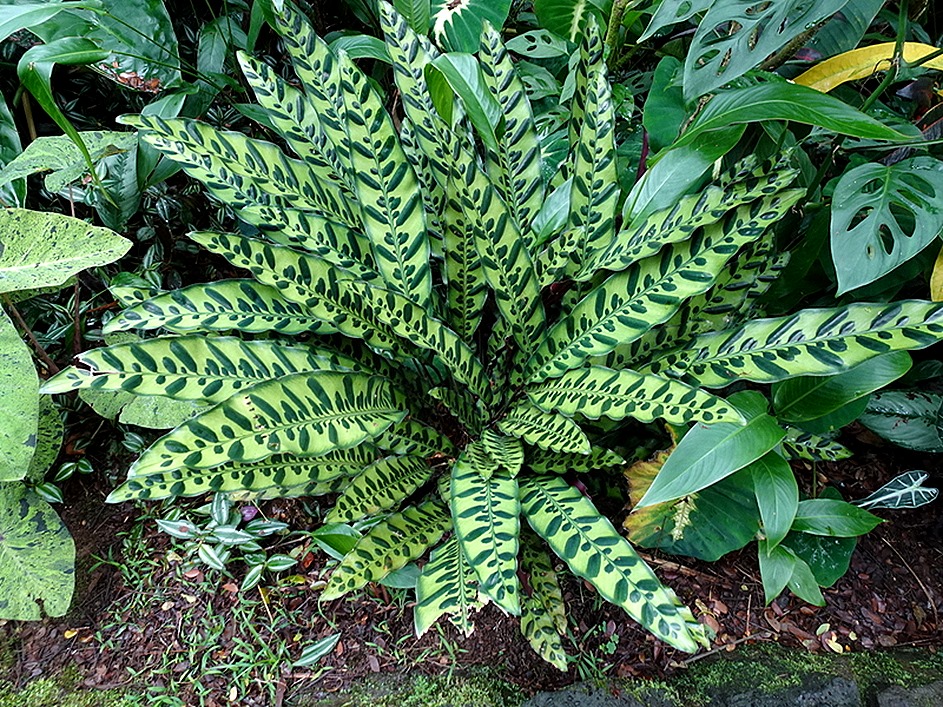 There was a peaceful Lily Lake in lush surroundings amid yet more flowers and plants.
There was a peaceful Lily Lake in lush surroundings amid yet more flowers and plants.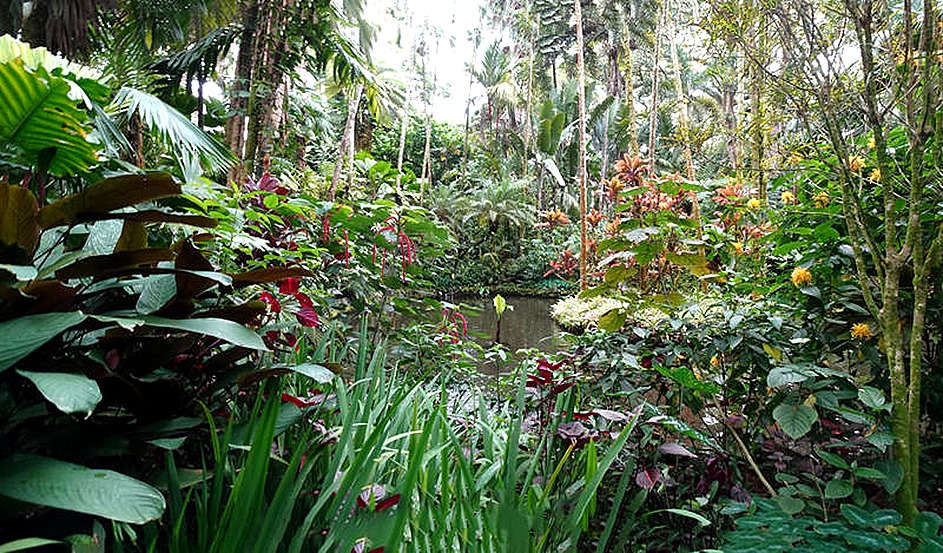
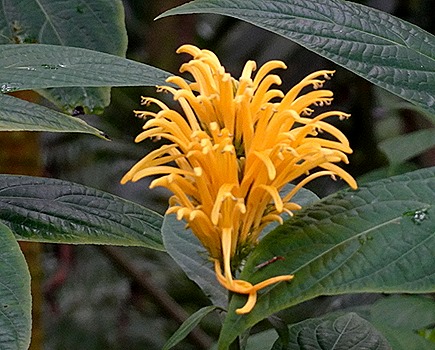

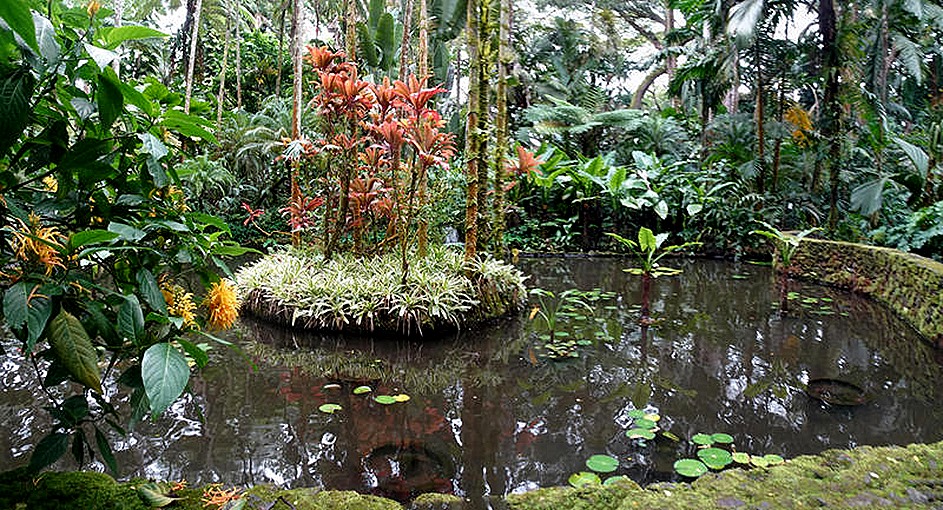

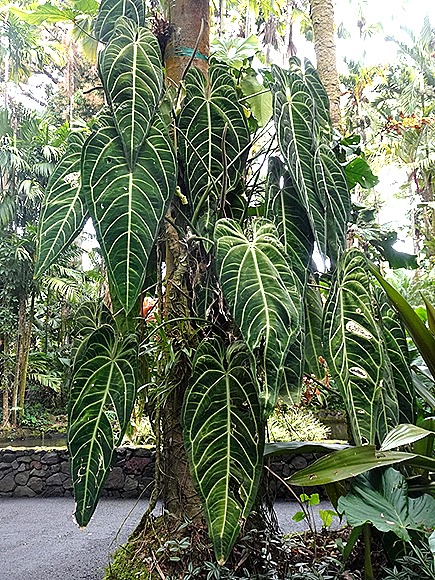
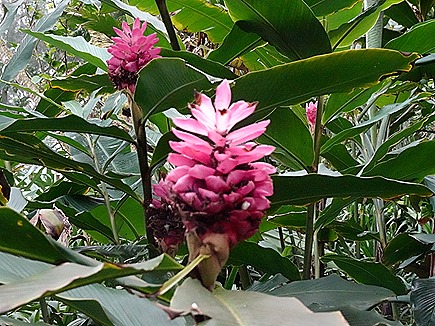


We found ourselves near the water’s edge next to Onomea Bay. A plaque here said that a village called Kahali’i once stood here. According to legend, when many canoes with sails appeared out in the waves the chief called for a pair of young lovers to volunteer to give their lives to protect the village. A couple volunteered and stayed by the shore while everyone else was instructed to stay indoors all night with doors and windows closed. In the morning they went to the shore and the young couple was gone but there was now a pair of rock formations connected to each other barring the way into the bay. Called Twin Rocks, they stand there still, as you can see below.
In the other direction was an excellent view of surf coming in to the shore. In the distance we could see a mound of rock which we think might be all that is left of the Onomea Arch, a large landmark carved from the cliffs by the Pacific that stood for thousands of years before falling in 1956 during an earthquake. (The remains of the arch might instead be the last part of the ridge into the sea in the first picture of the bay, above. We really aren’t sure, but it’s probably one of those.)
We soon began the long uphill walk back to the park exit. Of course, there were many more flowers and trees to see along the way, including one tall tree sporting a huge number of small brown potato looking fruits (probably growing on a vine).
Leaving the gardens we drove a very short way and walked onto a white wooden bridge spanning Onomea Stream, a picturesque spot with a small waterfall and a lot of boulders in the water.
We stopped for a tasty fish and chips lunch at Kaleo’s Bar & Grill in Kea’au where our guide was a semi-regular, then drove a good way to reach Rainbow Falls. Its name comes from a rainbow that forms sometimes in the mist at the bottom of the falls, usually early on a sunny morning. However we were there later and a fairly heavy rain fell as we drove there, enough that we thought we would be standing in the rain to see the falls. But the rain magically stopped completely just as we got out of the car. We walked a short distance to the falls, where only a few people were gathered. The falls was very nice, with two streams (we are told it can be much larger and faster if a lot of rain has fallen upstream) combining to drop about 80 feet in front of a large natural lava cave that is supposed to be home to the ancient Hawaiian moon goddess Hina. But with our arrival in the afternoon and the rain having suppressed the mist at the bottom there was no rainbow.
We next made a brief stop at Wailoa state park in Hilo. Here we saw one of the large statues of King Kamehameha the Great. Erected here in 1997, it is 14 feet tall (about twice the man’s actual size) and includes a helmet and cloak that are golden. Not far away the graceful Waiolama Footbridge crosses the mouth of Waiākea Pond.
We drove to the Puna district along the east coast where much of the lava from the 2018 eruption of Kilauea reached the ocean, after destroying several towns and burying wide swaths of land and buildings. This area is characterized by black lava cliffs and black sand beaches, ocean waves crashing ashore and palm forests. Our first stop was MacKenzie State Park above some cliffs dropping into the ocean. It has tables and seats carved out of lava where you can picnic and beautiful vistas of waves crashing into the lava cliffs.
The surf rushes into recesses in the cliffs so fast that it leaps into the air and sometimes there are rainbows in the resulting mist.
Isaac Hale Beach Park was a popular location for swimming and boating in Pohoiki Bay, with a boat ramp opening into the ocean. But the 2018 eruption changed all that. The boat ramp is still there, but it leads only into a large pond created when the lava flowed down and filled the bay leading to the ocean. Miraculously, it stopped just short of the boat ramp. Beyond a high ridge of lava rock is a new beach created by the eruption. We have read that the lava extended most of the land along this coast up to a mile further into the ocean, enlarging the island of Hawaii by several square miles. We could see the new black sand beach formed beyond the ridge of lava rocks near the boat ramp (with a few plants already fighting their way to the surface of the lava).
As we drove on piles of lava rock lined the road, presumably created when the road was cleared after the eruption ended.
We stopped at one more spot along the coast. We don’t know its name but Laurence told us that it was on this spot that he decided to live in Hawaii forever. It is very beautiful, with many palm trees along a sea cliff with waves bashing the shore, a classic Hawaiian vista. There was also a small natural bridge made of lava; signs said it was dangerous but Tina and the other Rick ventured out there anyway (and lived to tell the tale).
We drove back to the port along the Red Road (we think), which was originally a one lane road of red asphalt but has since been expanded to two lanes of black asphalt. People still call it the red road though. It winds through a variety of settings, most dramatically through tree tunnels like the one below.
So this was a very full day with many spectacular sights, thanks to our guide, Laurence, and Tina who arranged it. There is still a lot to see in this area though, so we are hoping to return here sometime. One day is just not enough. The sun set and we sailed away.
Kona, Hawaii (2024)
After six full days crossing the Pacific Ocean we arrived in Kona in the morning on February 6. The ocean was very rough for most of this crossing, making it difficult to walk down the halls without falling into the wall. We approached Kona along the seacoast, where there was a lot of green and a mountain in the background that may be Hualalai volcano. We also saw a rainbow, a good omen for sure.
Polynesians most likely first reached Hawaii, travelling on large canoes, between 1,000 and 1,500 years ago. It is thought that some from the Marquesas Islands (Nuka HIva, etc) arrived around 500 CE, give or take a few hundred years, and then settlers from the Society Islands (Tahiti, Bora-Bora, etc) came around 1,000 CE. The separate islands mostly had their own kings until Kamehameha I, using Western firearms and cannon in addition to traditional weapons, unified (ie. conquered) the entire archipelago in a series of wars in the late 18th and early 19th centuries.
Captain Cook was the first European to discover what he called the Sandwich Islands (after his aristocratic sponsor) in 1778. He was killed by the local people 12 miles from Kona in 1779; the story is interesting and controversial but too long to include here. Americans began to immigrate in earnest in the 1820’s when several ships of New England Protestant missionaries arrived and began a lengthy and ultimately successful campaign to convert the Hawaiians. Some of their descendants became important (and wealthy) leaders in the the island’s economy (one missionary, for example, was named Dole and his offspring were leaders in pineapple production). The Kamehameha dynasty was deposed in 1893 by a group of wealthy American residents (with support from an American warship) and Hawaii became an American territory a few years later and a state in 1959. The history of American activity in Hawaii during this period is controversial and rather sordid, and its effects continue to this day. As was true in other parts of the New World, the native Hawaiian population declined by about 80% in the hundred years after Cook’s arrival, mostly from disease, and today most residents with native Hawaiian ancestry are of mixed heritage.
So the Kona district had an important role in Hawaiian history, as the site of Captain Cook’s death, the landing of the first missionaries and the starting point of Kamehameha’s conquest of the islands. There is no deep sea port here so Zuiderdam dropped anchor on the outskirts of Kailua Bay and we tendered to Kailua Pier in the center of town. This Pier was was completed in 1918 and served as a cattle and cargo dock until tourism became dominant in the late 20th century. Today it also hosts the sea leg of the annual Ironman competition.
While most people outside Hawaii call this place Kona, the actual name of this town (like the bay) is Kailua. Kona is the name of the district in which the town is located. So it is often called Kailua-Kona (especially on signs) and referred to only informally as Kona or Kona town. For convenience we will use Kona. You may recognize that name from the coffee grown here in the rich volcanic soil, which is quite expensive here in its pure form, less expensive in Kona blends that may have only 10% actual Kona coffee.
This is a small town, about 20,000 population, and we had not been here before so we spent our day walking around on our own. Three notable features were evident without stepping very far from the pier. A good deal of construction in the area, especially walls, is made of black lava rock. Second, there was a huge Banyan tree not far from the pier, and we would see many more in Hawaii. And third, as you might expect, there is an abundance of beautiful and exotic looking flowers and other flora. We set out along Ali’i Drive, the main street paralleling the bay front.
Hulihe’e Palace was a summer home of Hawaiian royalty. Built in the mid 19th century of lava rock, coral and native wood, it eventually became the property of Princess Ruth, a very wealthy descendant of Kamehameha I who owned almost 10% of the land in Hawaii at the time of her death in 1883. She was a defender of the ancient traditions and chose to live on the grounds of the palace in a grass hut instead of in the house. The palace was refurbished in 1927 by a nonprofit group and has been used as a museum for many years. Sadly, it was closed to visitors during our day in town.
Across the street from the palace is Mokuaikaua Church, the oldest Christian church in Hawaii. The congregation was established in 1820 by missionaries from the first missionary ship, a small thatched roof church was built on this site a year or two later and the current stone building was opened in 1837 (after several fires destroyed the wooden structure). On the day we visited the church was closed for renovations but we were able to tour its grounds.
As we walked along the street we were diverted by a small sign with an arrow indicating a quilt gallery was located back from the street and up a small hill. We followed it and several other signs much further than we expected and finally came upon the shop on the second floor of a modern building on a neighboring street. Called Quilt Passions, it was pretty busy and had many interesting quilts on display (Mary bought some material). Apparently there is a separate museum behind the gallery with some quilts more than 100 years old but we didn’t see it.
We searched through a shopping center back on Ali’i Drive for another very old church, which turned out to have been destroyed. But in this area we encountered many beautiful flowers in full bloom (in early February!). The building had some wall art of sea animals.
If you have read this blog before you will know that we often try to find a local library. Sometimes it’s not easy to find and that was true here even though it is a pretty small town. But sometimes it is worth the effort because the libraries often turn out to be very interesting buildings. Not so much here, where the library, once we finally found it, was an ordinary suburban type facility. Still, it had plenty of books for local readers (and some nice flowers too).
It was past time for lunch and we looked for a restaurant as we walked back toward the pier. We stopped to eat at a place called “Quinn’s Almost By The Sea”, which means it is a short walk to the pier but no sea view. We ate on their covered patio, which was surrounded by flowers, and enjoyed huge and delicious fish sandwiches (tuna for Rick and mahi-mahi for Mary). Not cheap (this is Hawaii) but very good.
After lunch we walked back to the pier to catch a tender back to the ship. Next to the pier is the Kamehameha I Hotel, first built in 1950. This is the spot where Kamehameha I lived out his final years, from 1812 to 1819, in a residence called Kamakahonu. His compound included a temple called ʻAhuʻena Heiau that was rebuilt in the 1970’s very near the pier from detailed period drawings. Kamehameha died in May, 1819, and the next year the capital of Hawaii was moved to Lahaina. In April, 1820, the first New England missionaries stepped ashore on the spot now occupied by the pier (one was Hiram Bingham I, grandfather of the namesake credited with discovering Machu Picchu). A little further from the pier at the other side of Kamehameha’s old compound is the Kailua Light, a small lighthouse built in 1915.
Since we didn’t have far to go for our next port we sailed away in the dark after a nice sunset, with a farewell from the lights of Kona town extending up the hillside from the waterfront.

